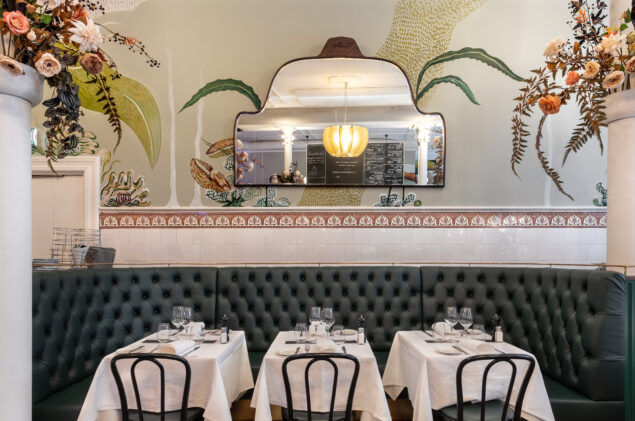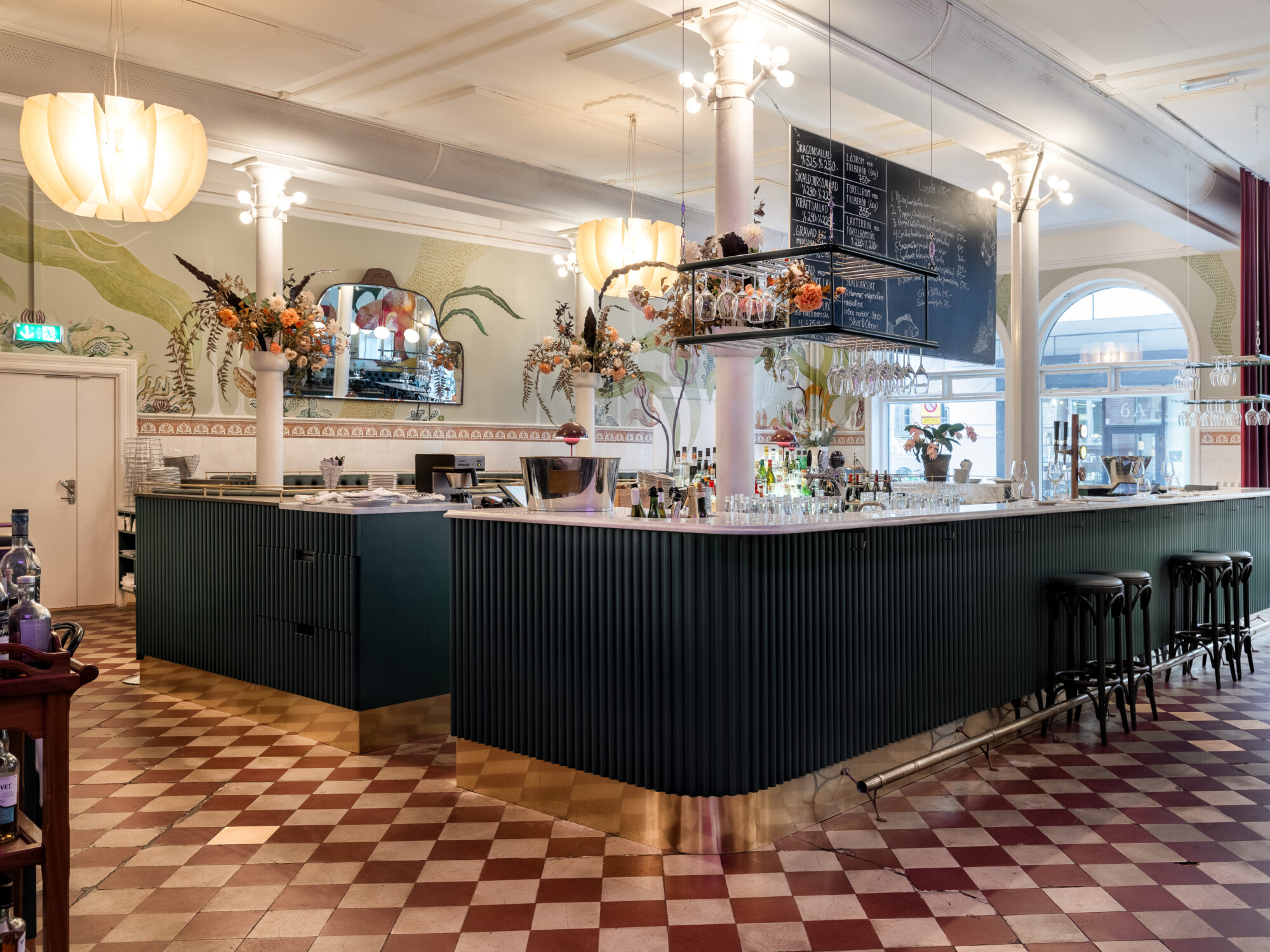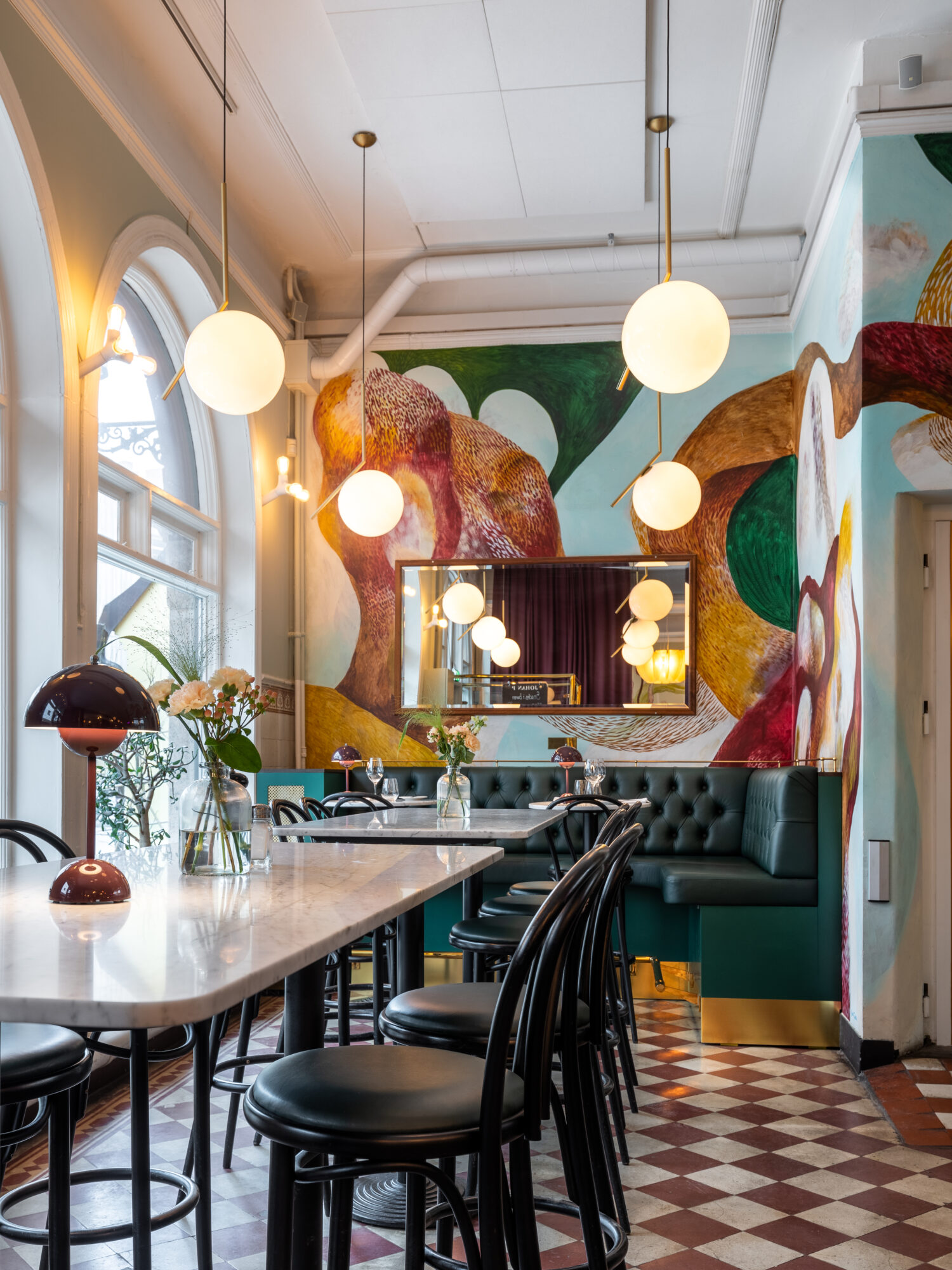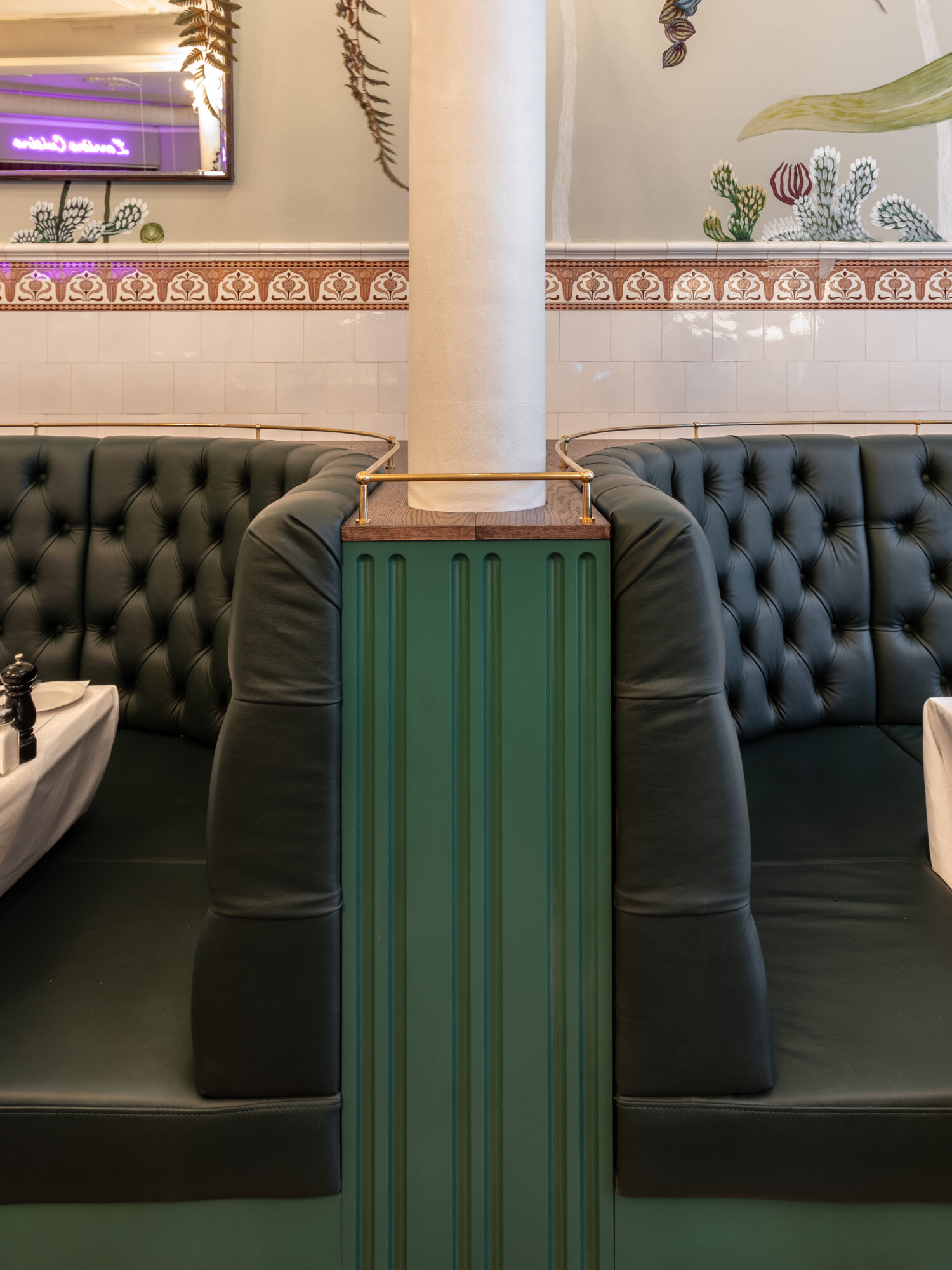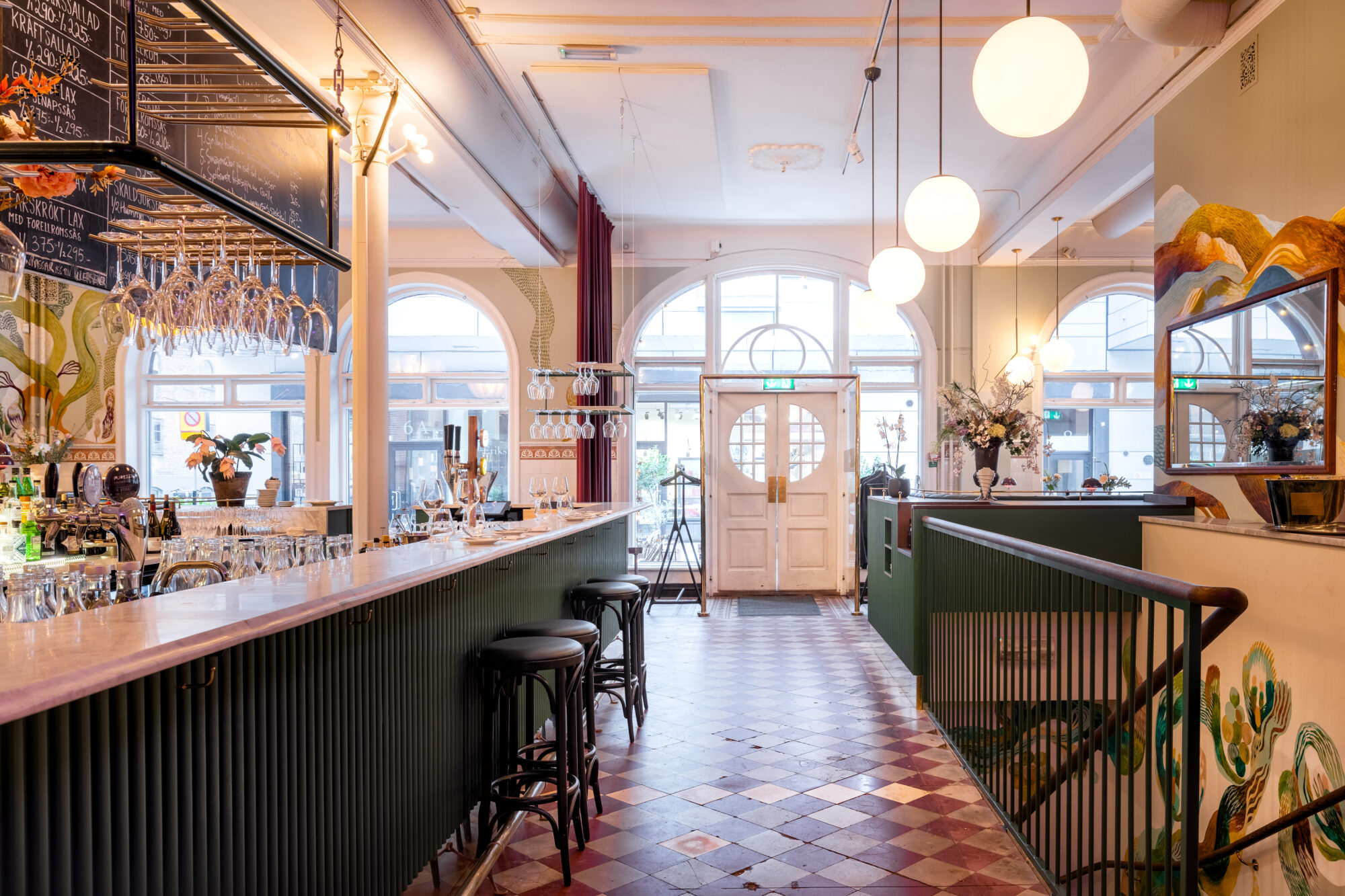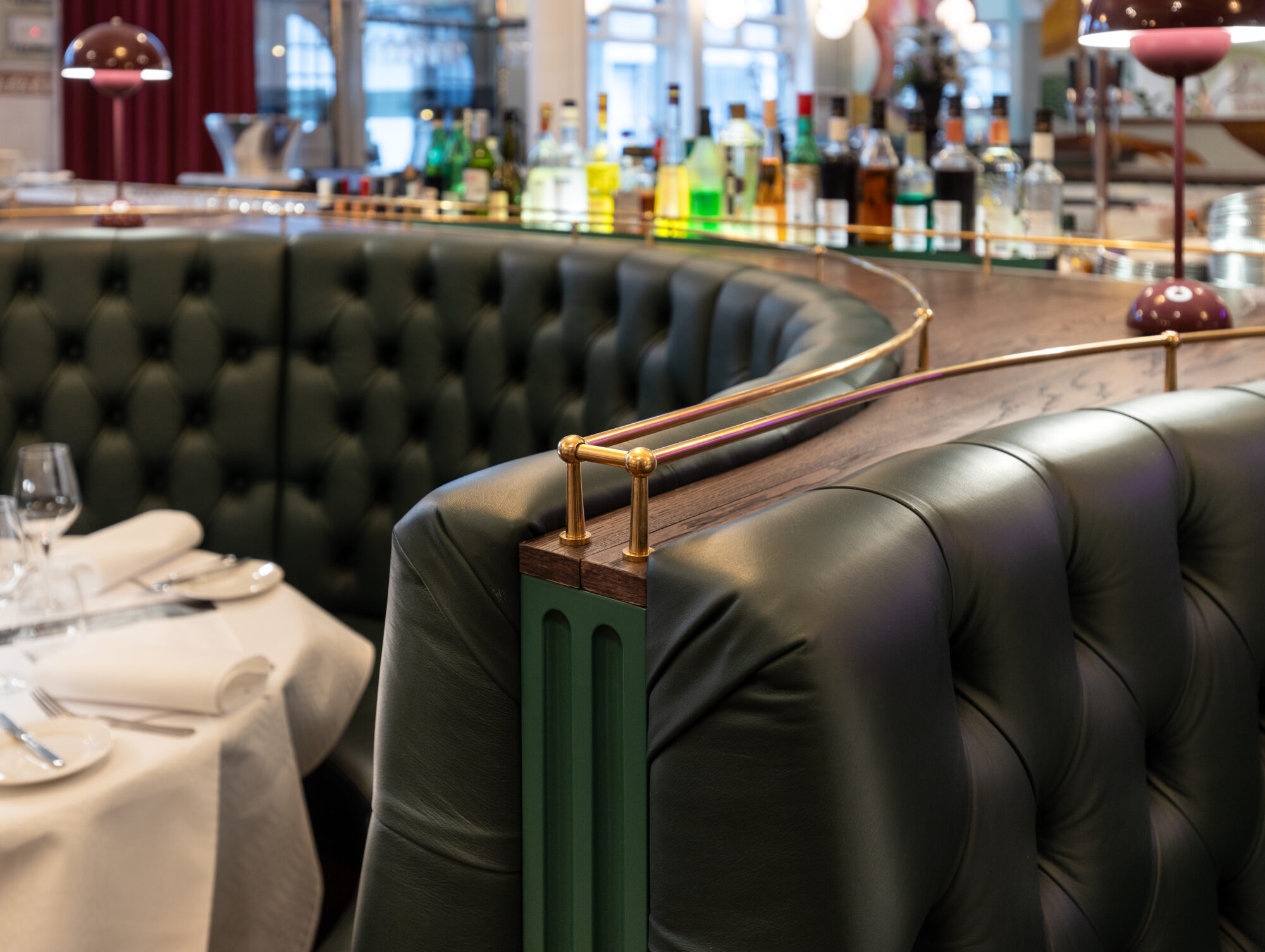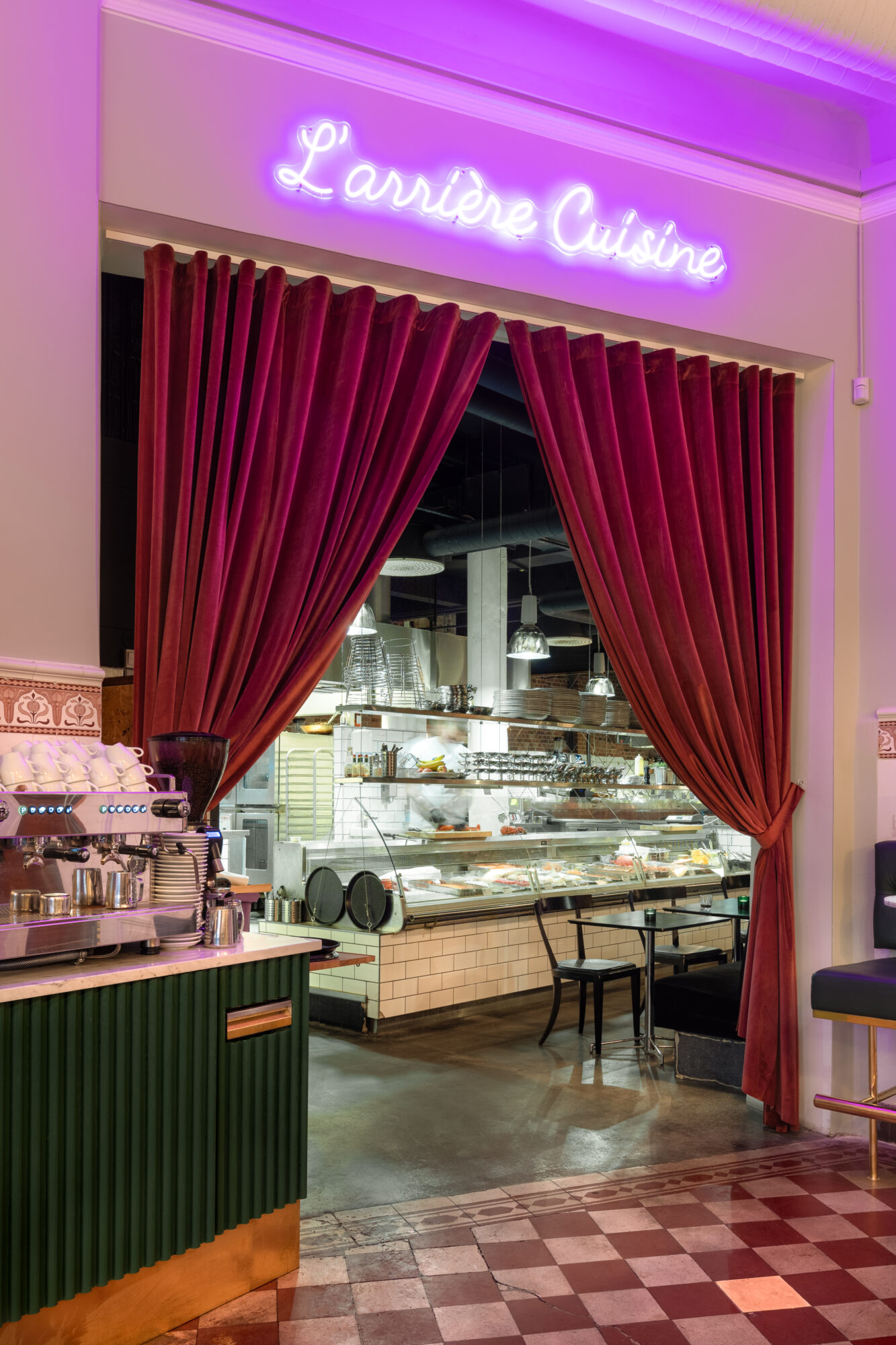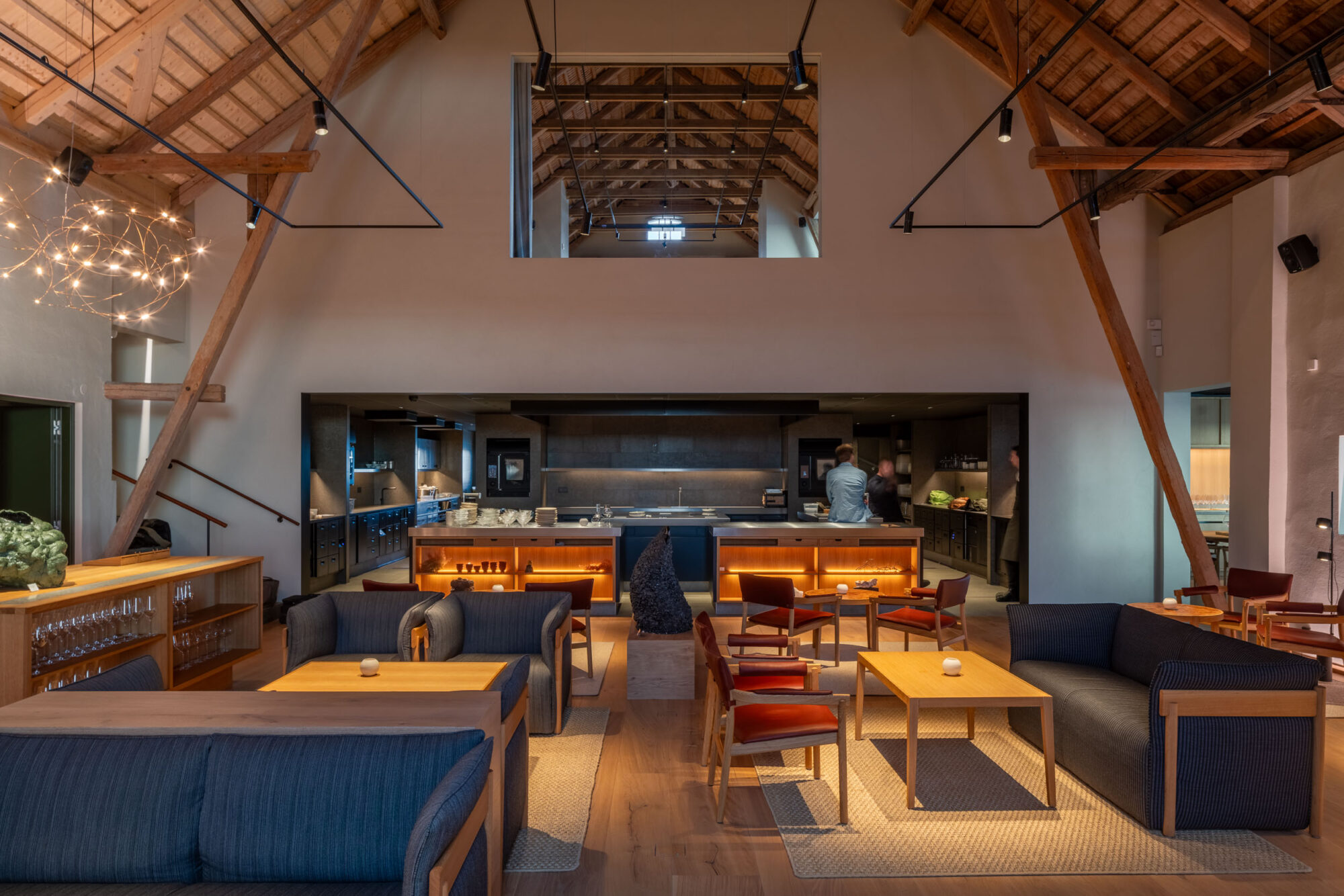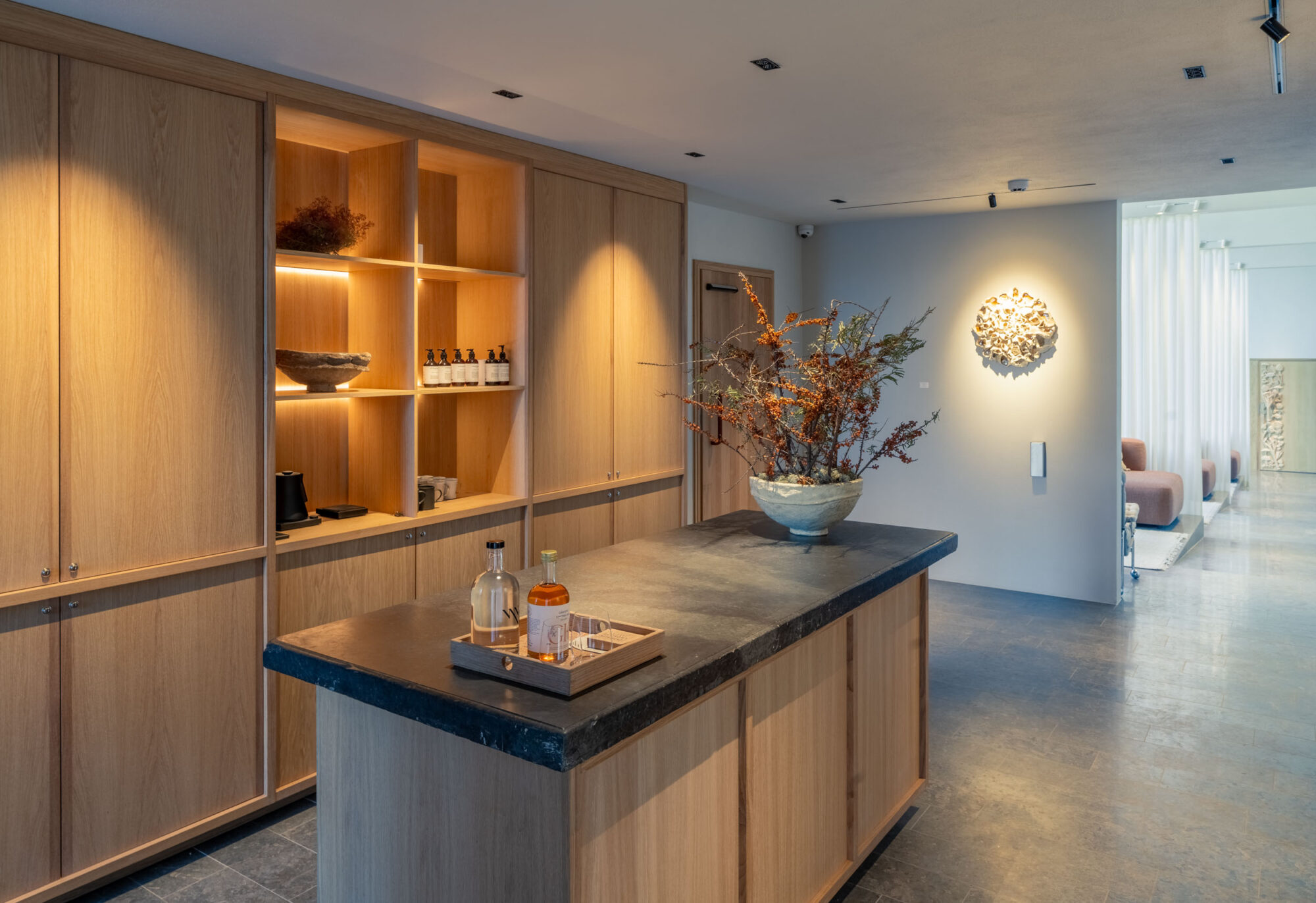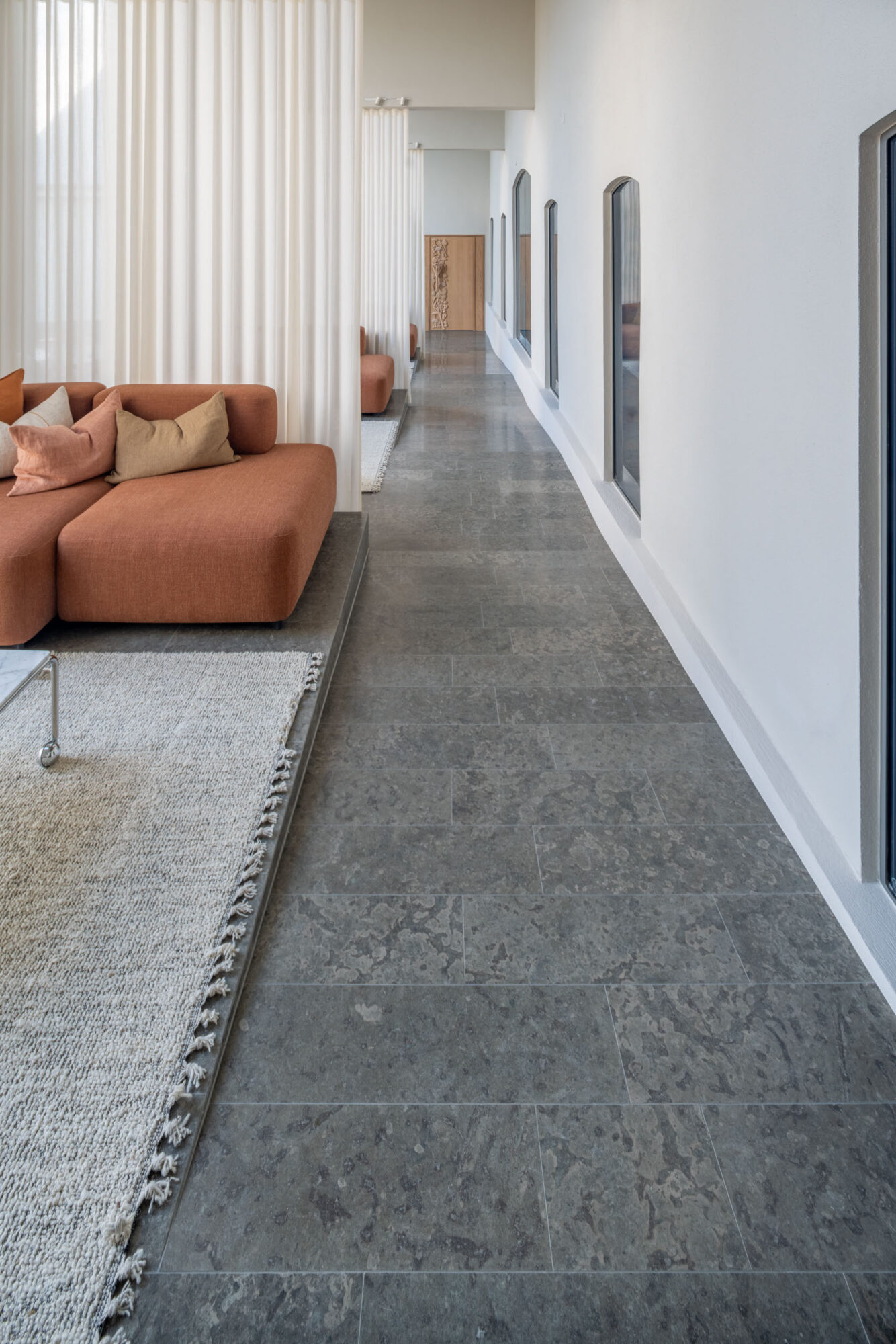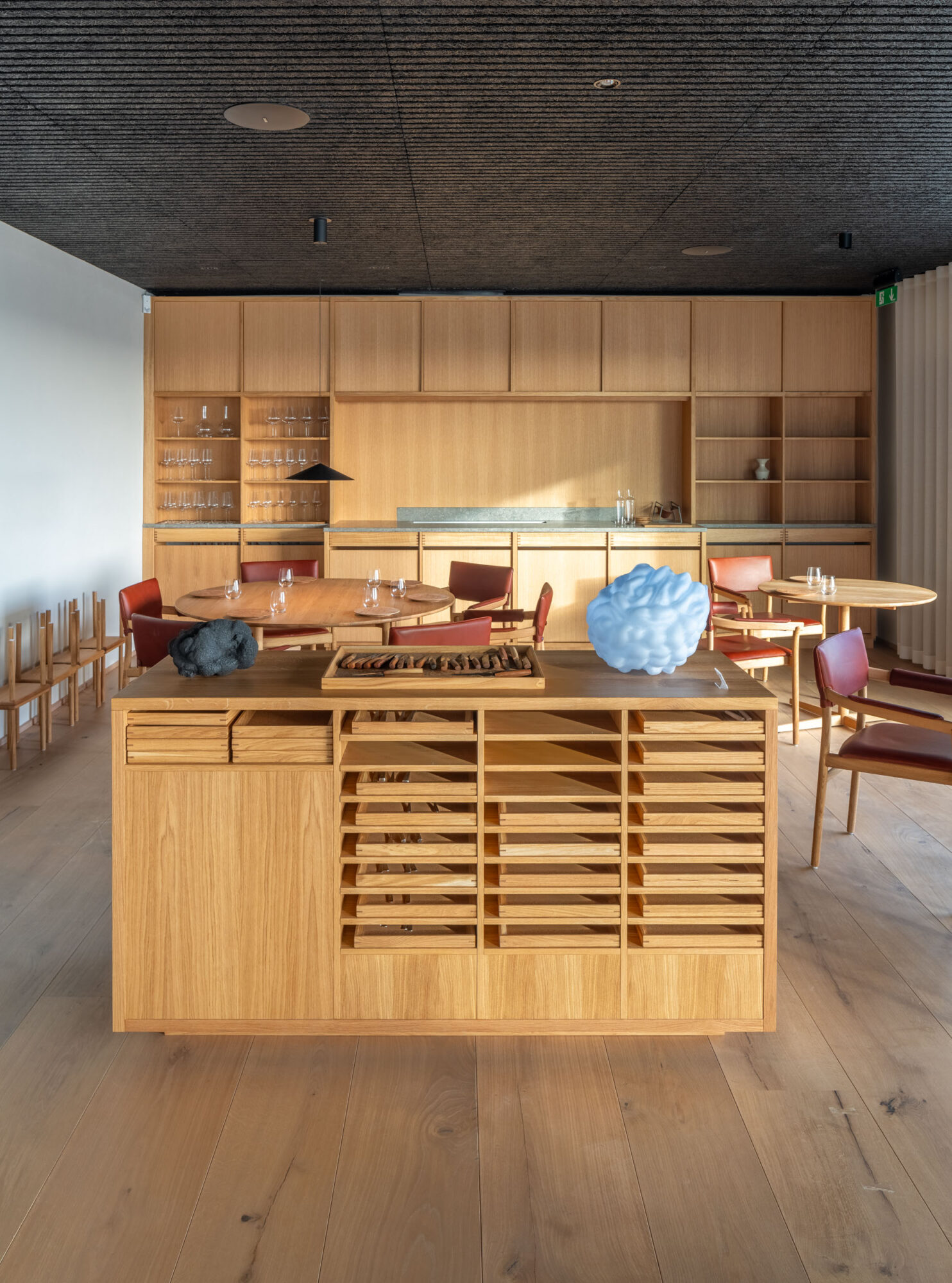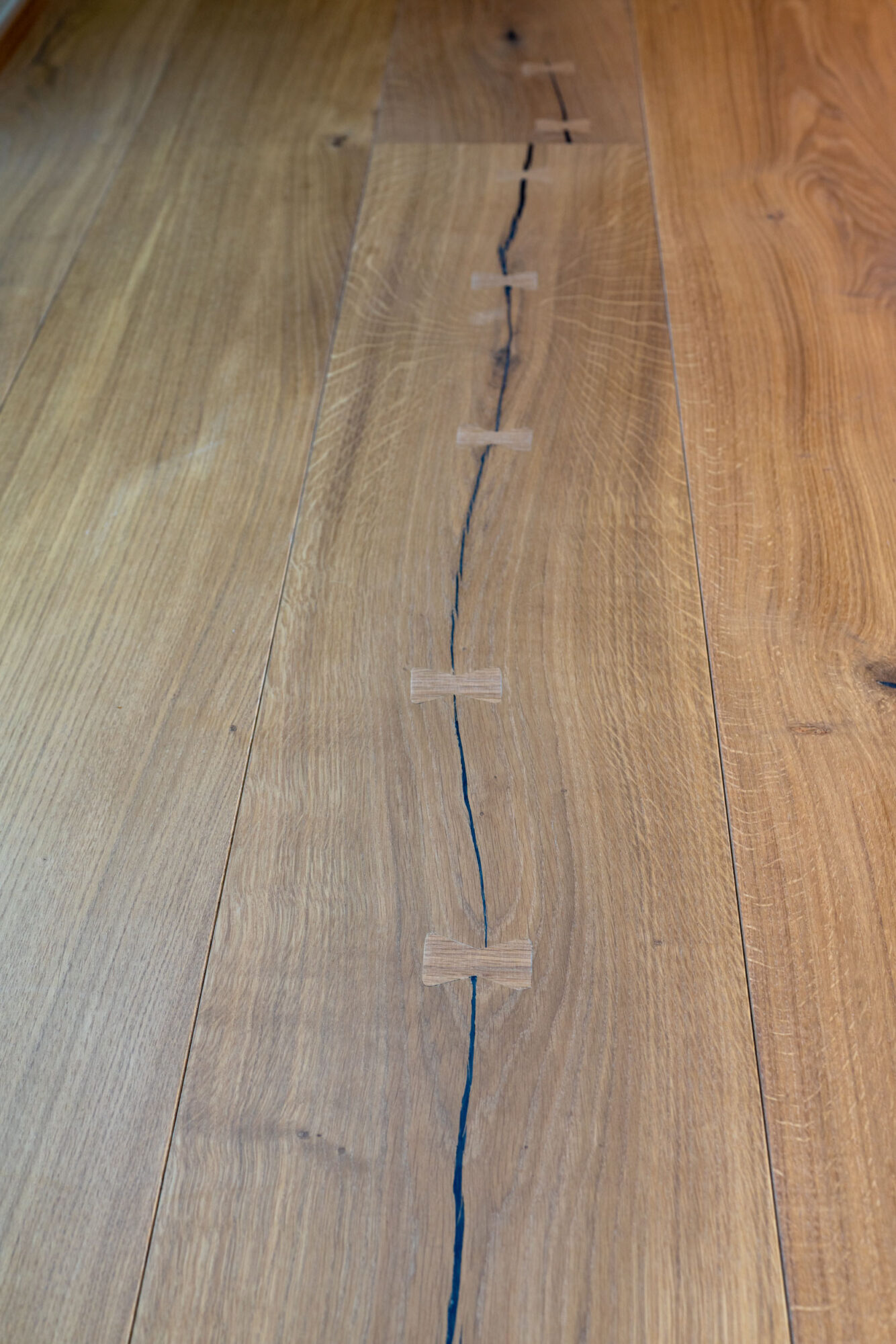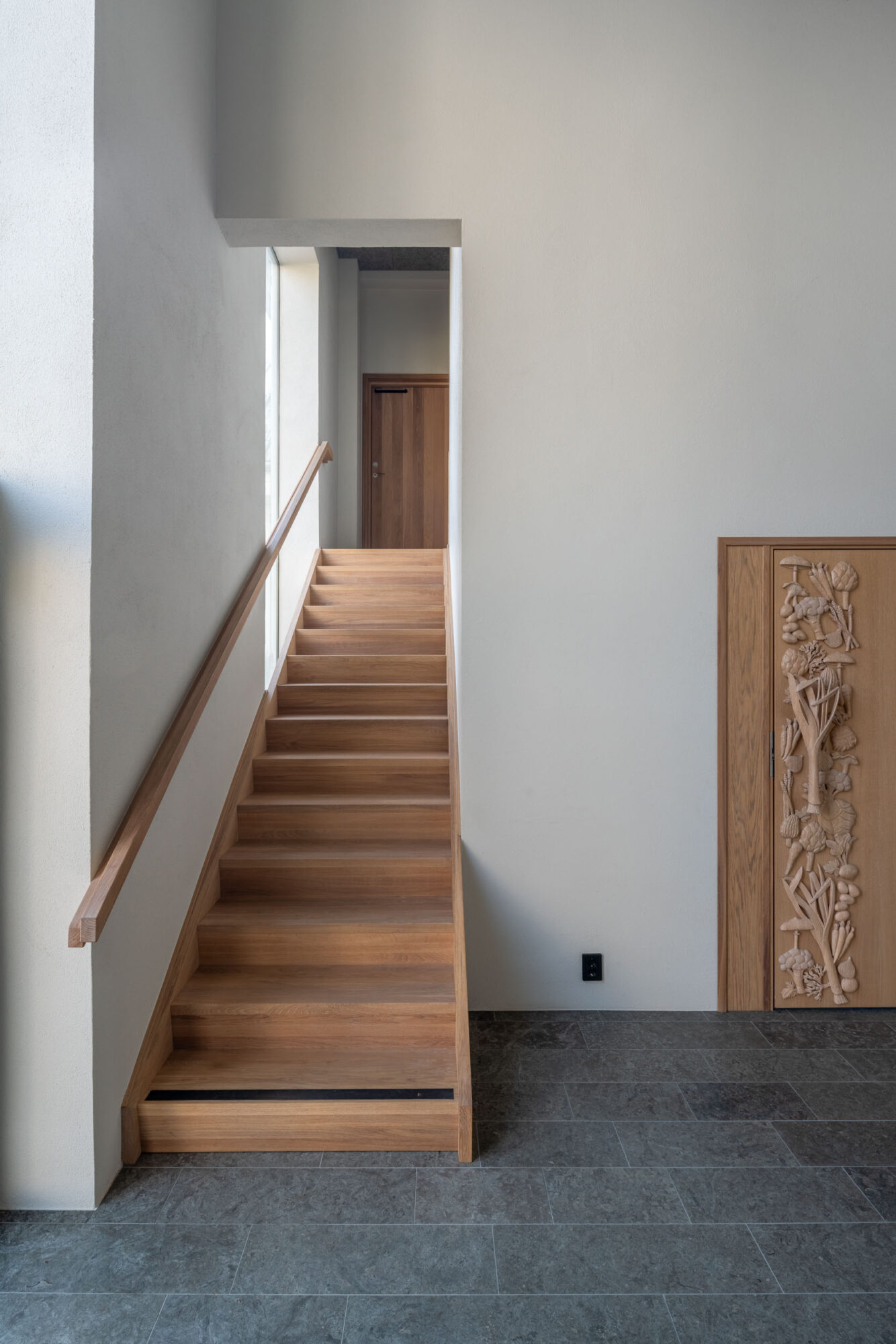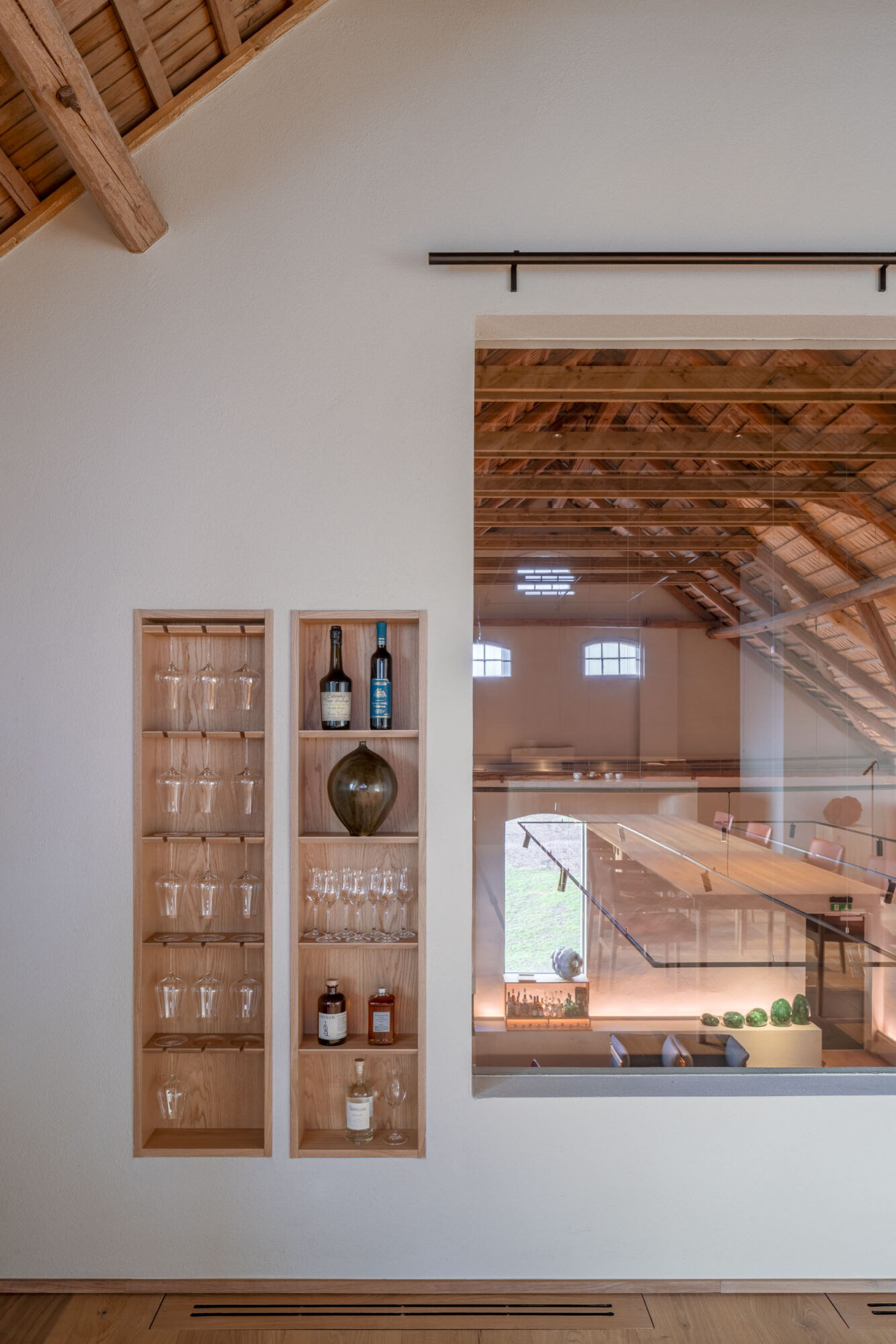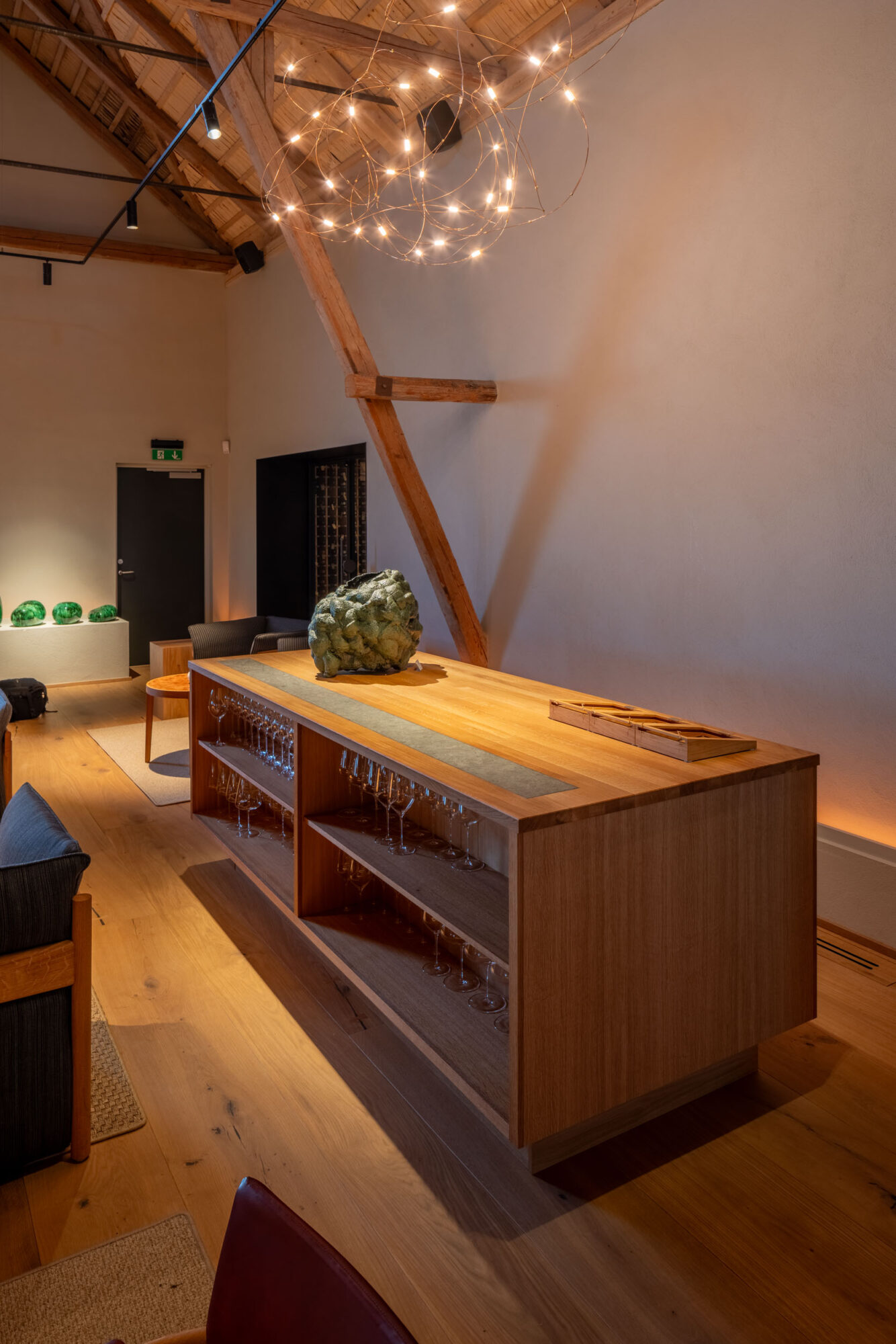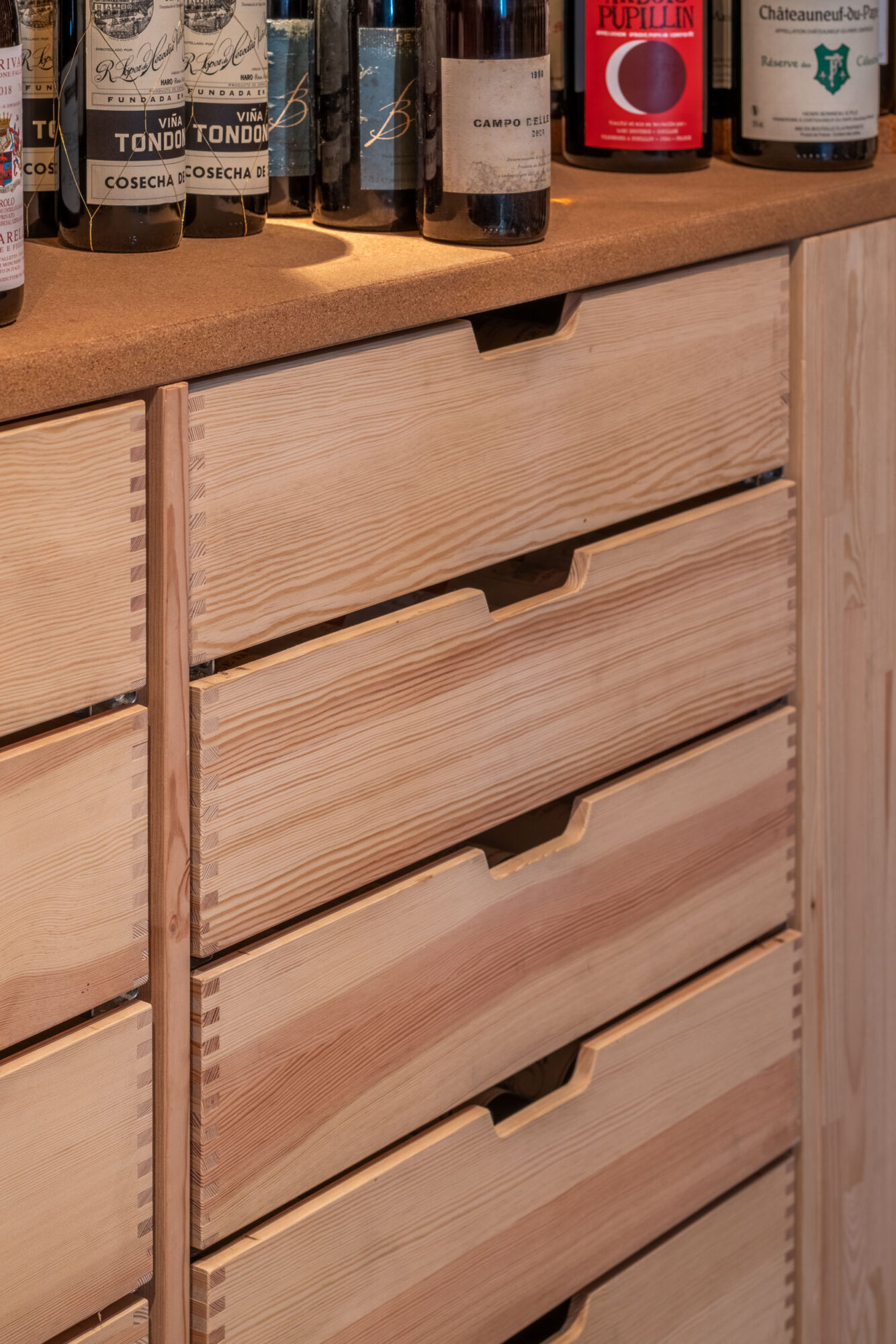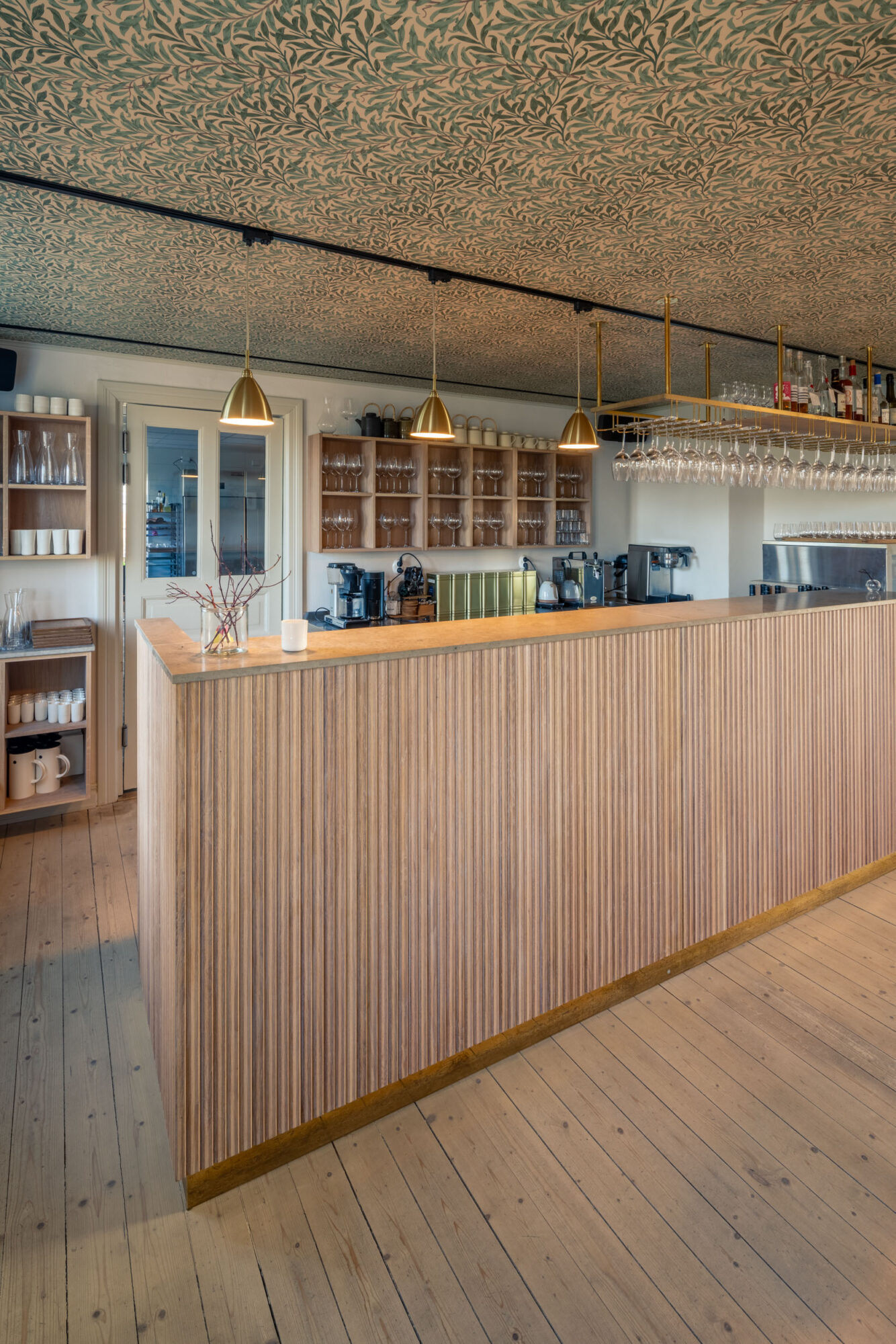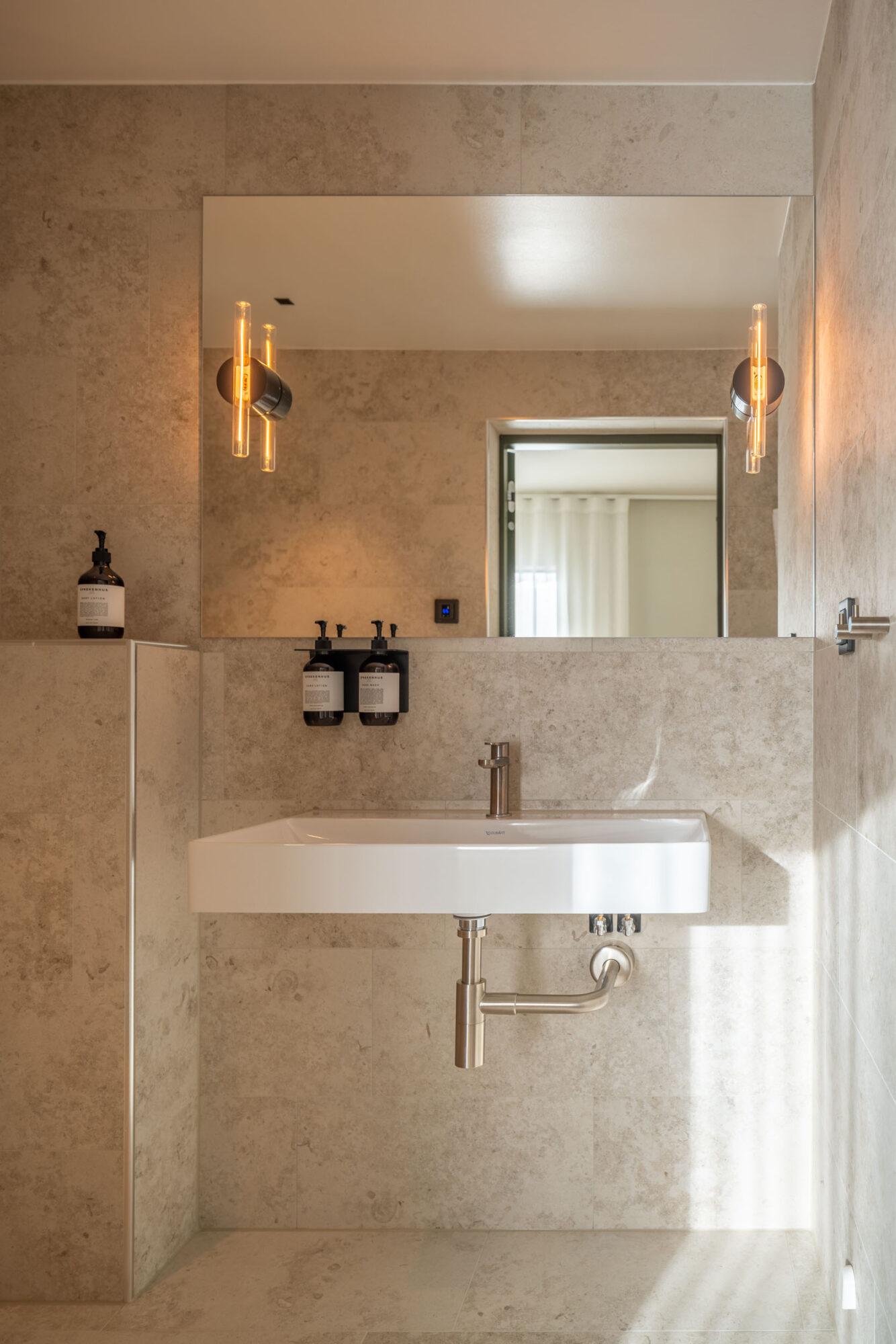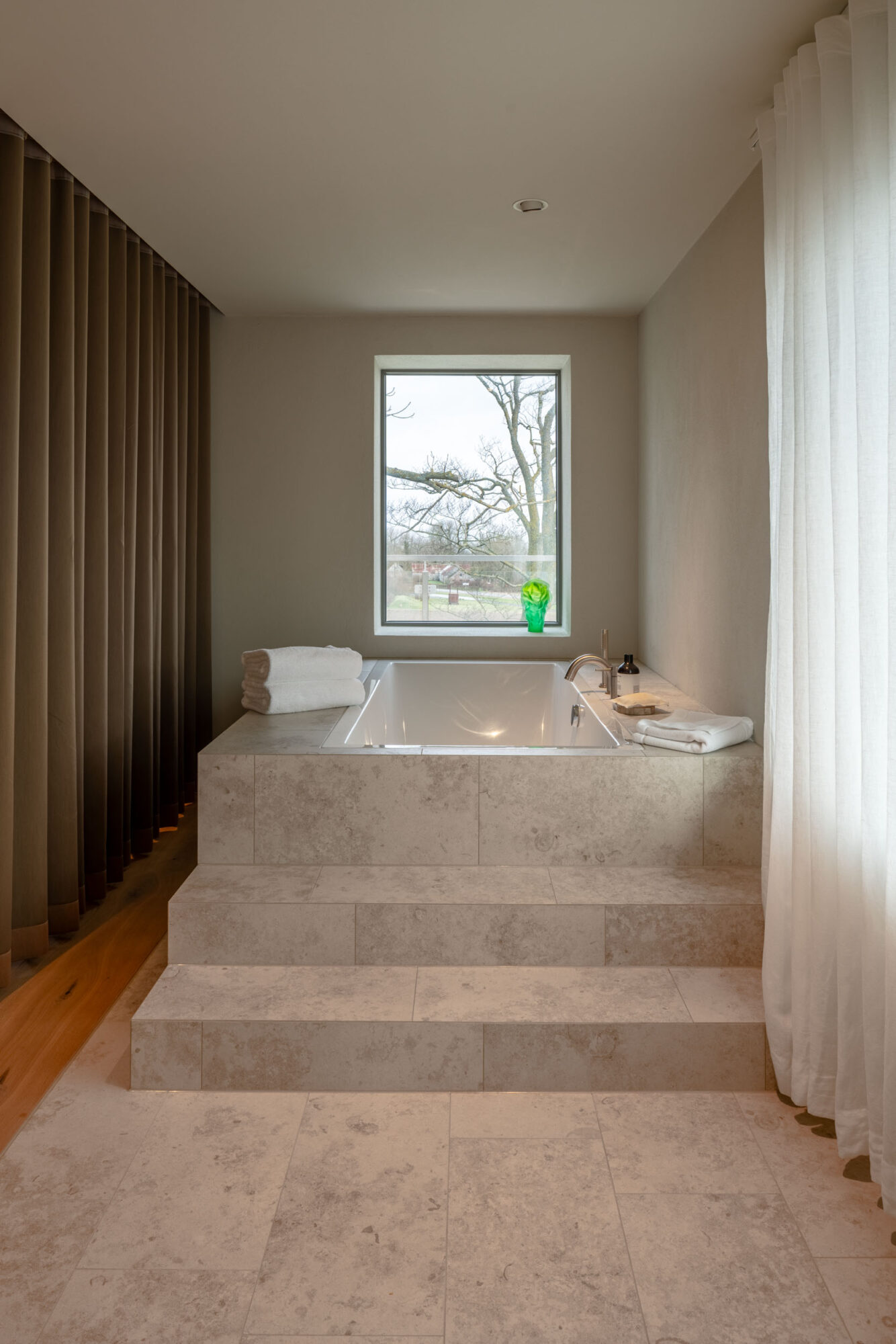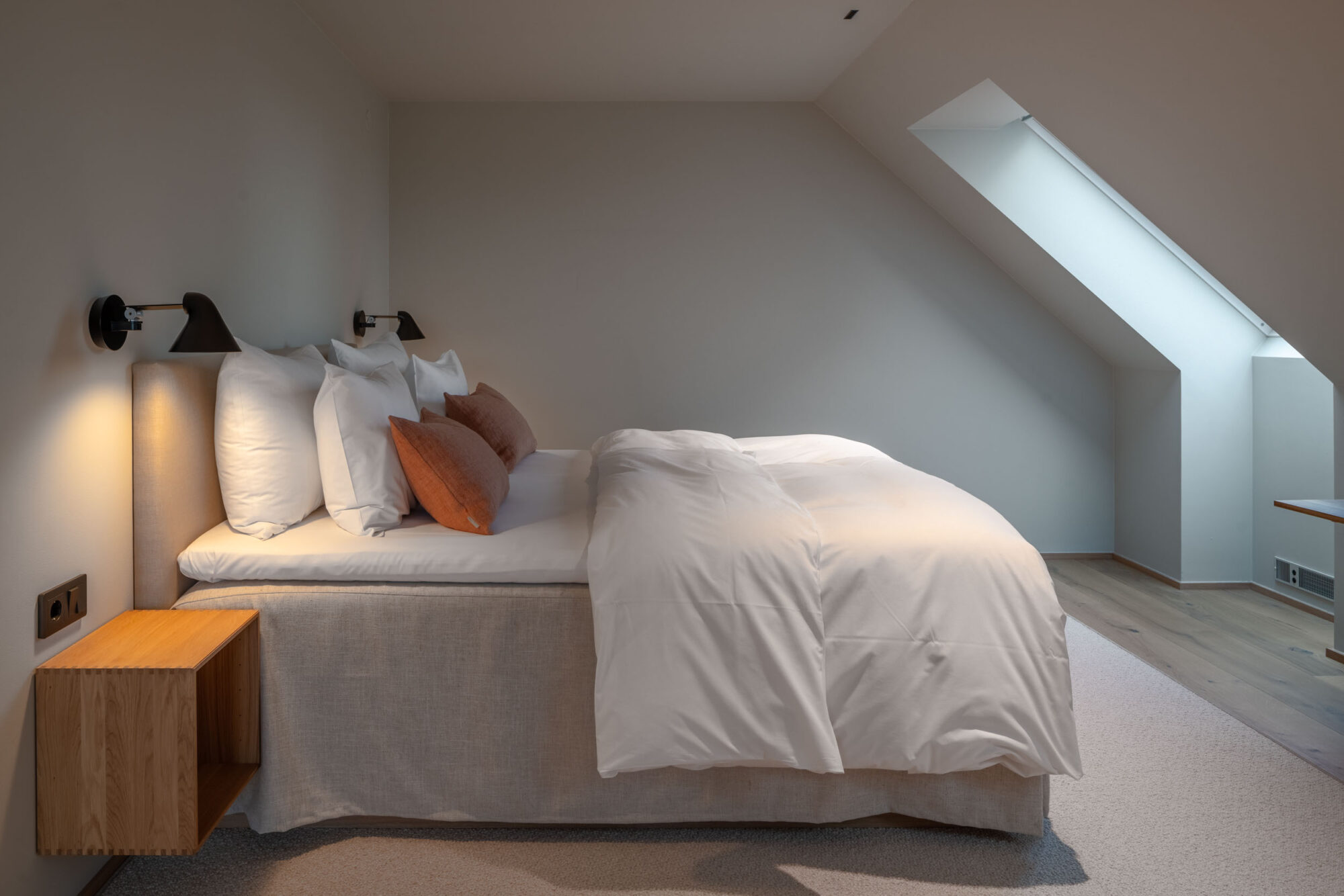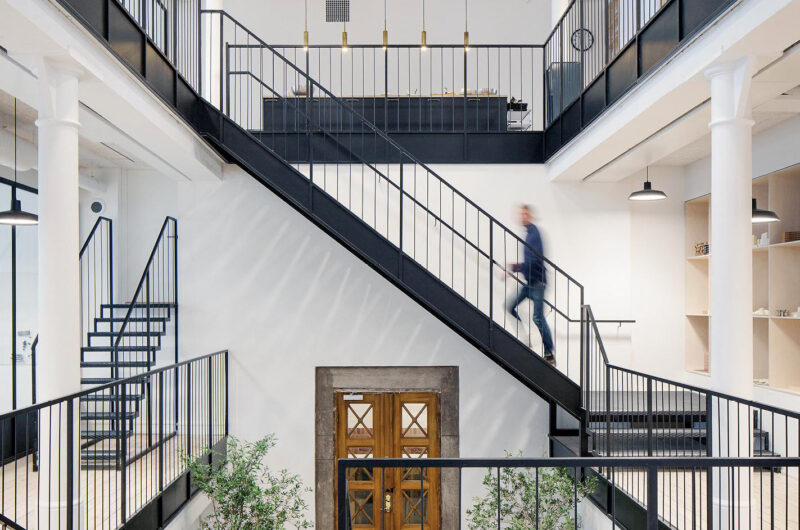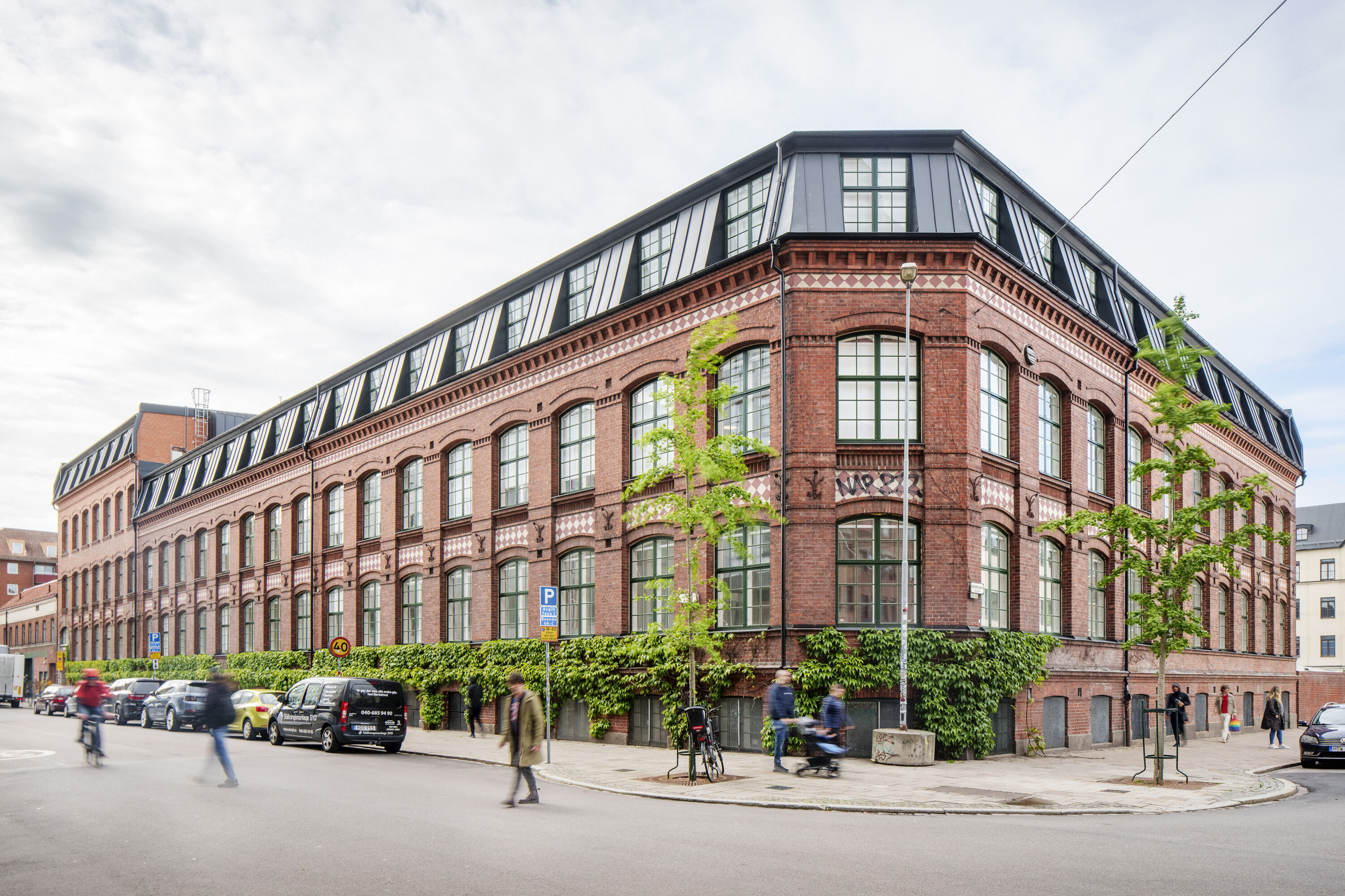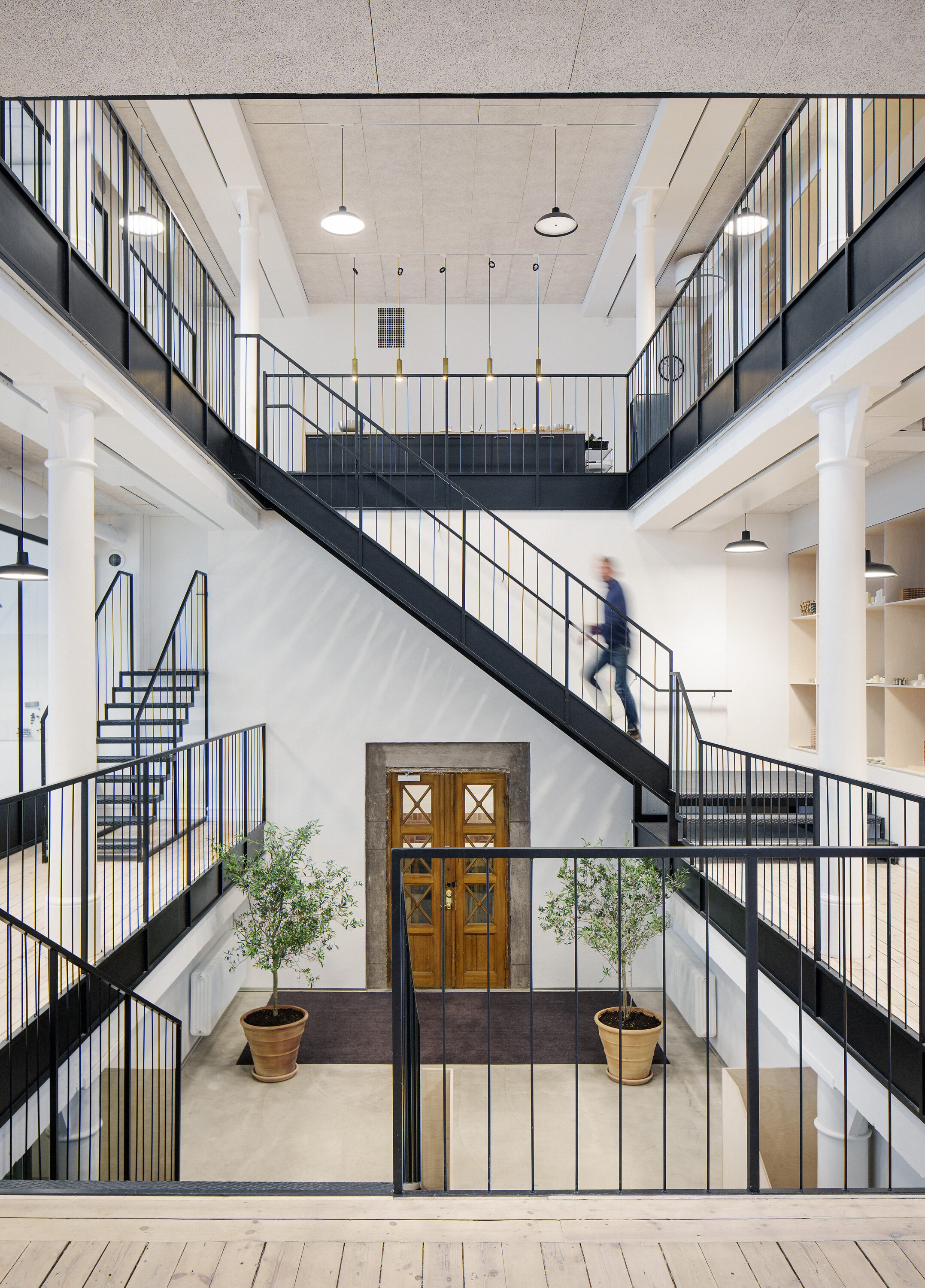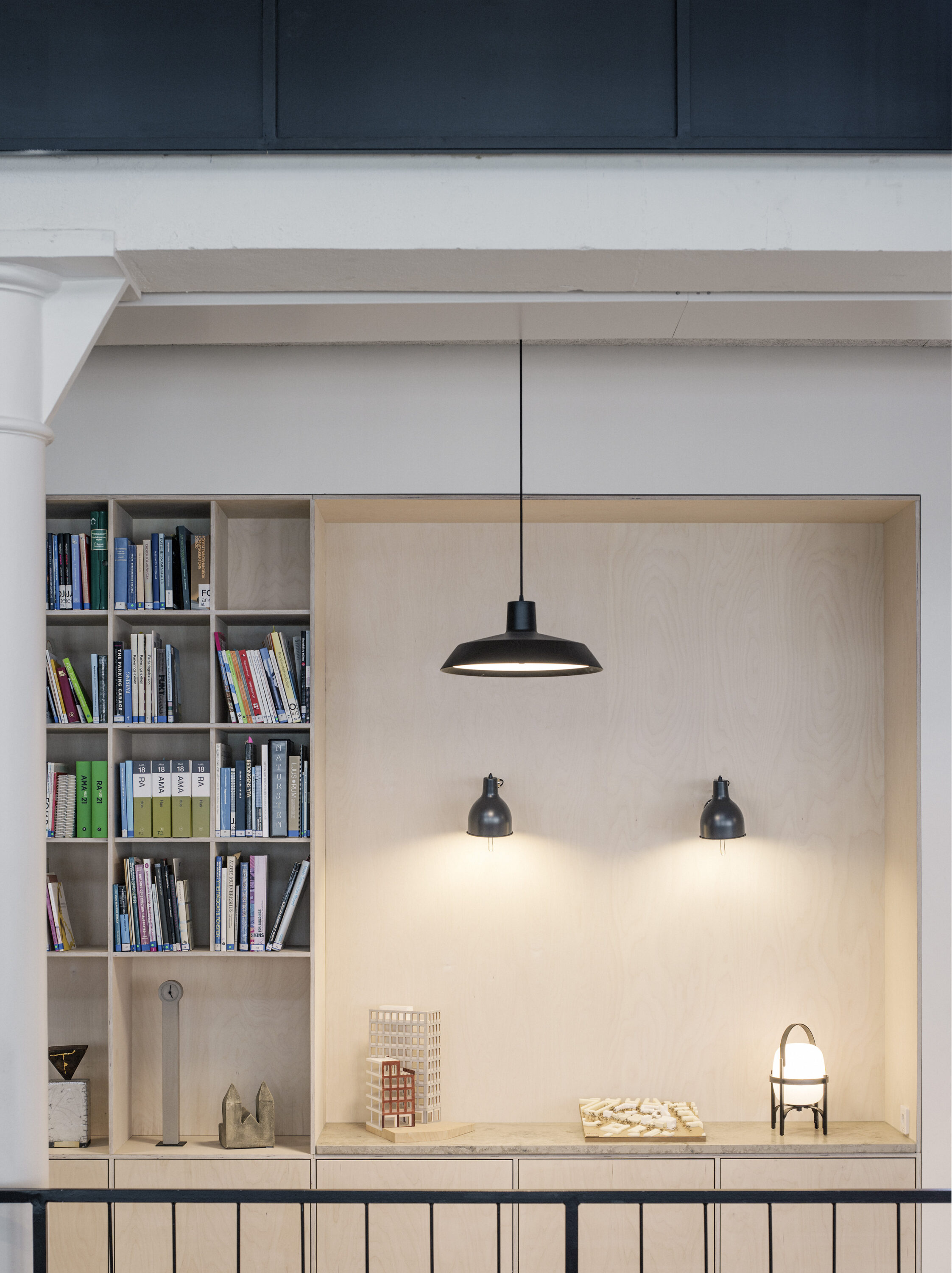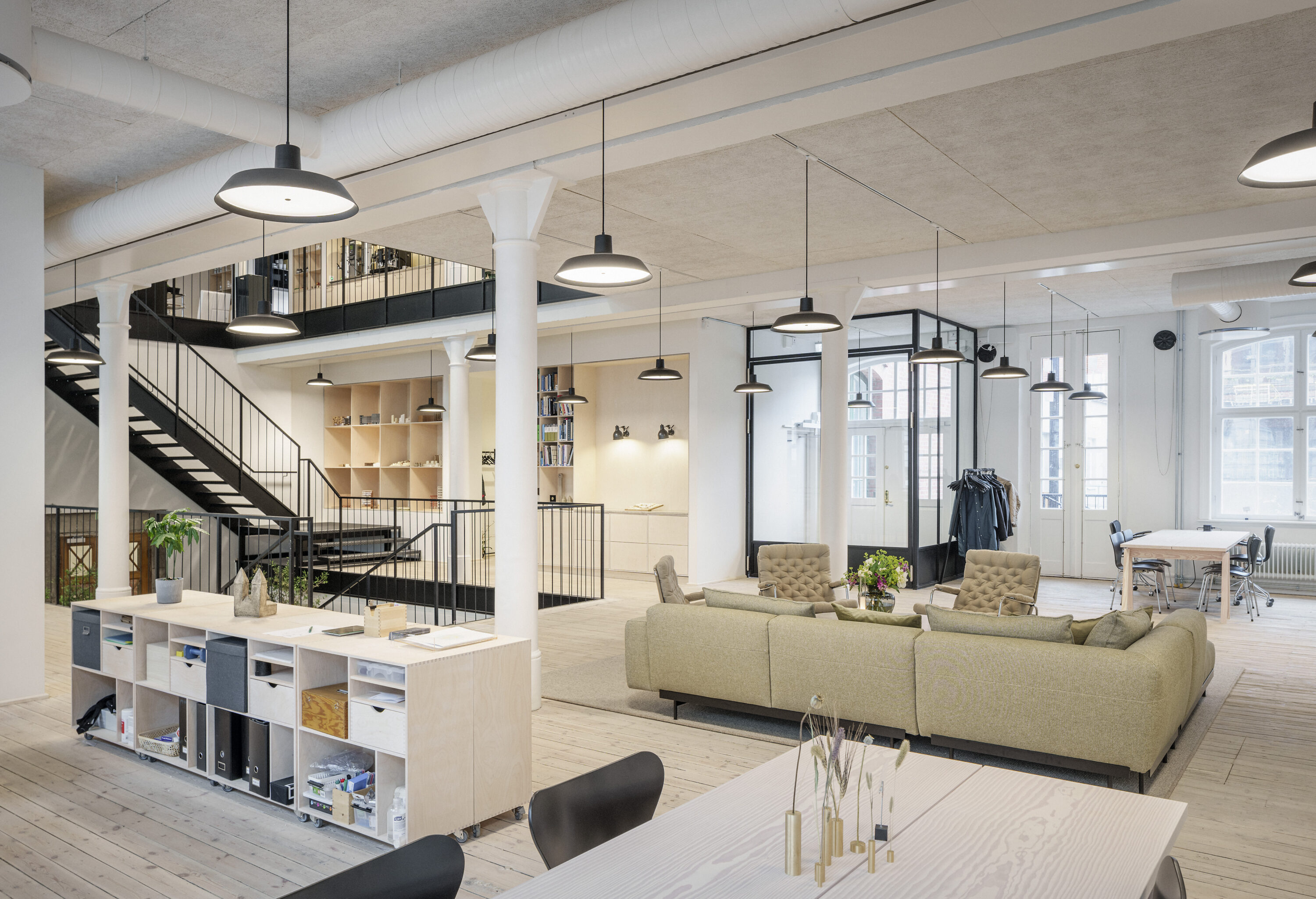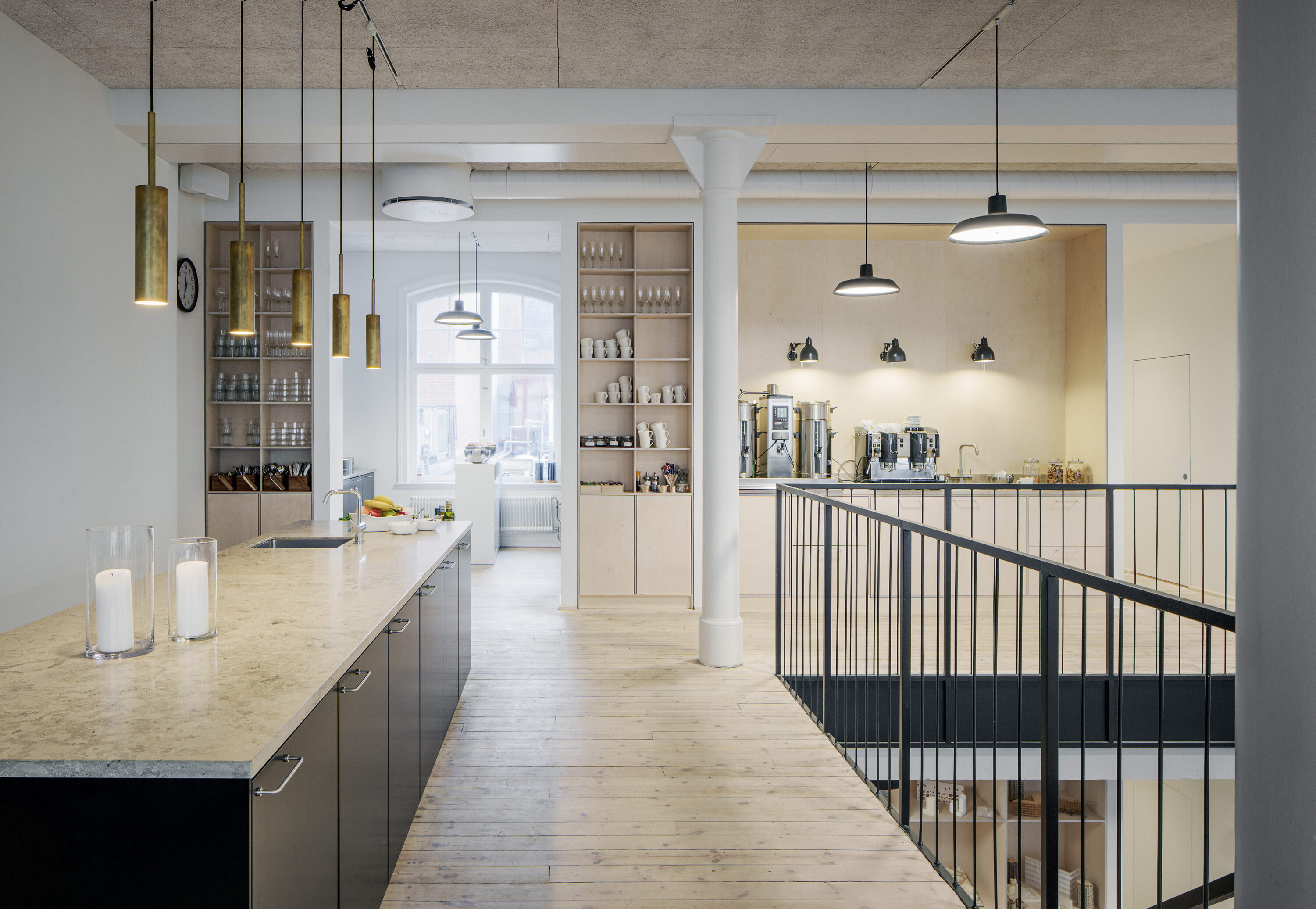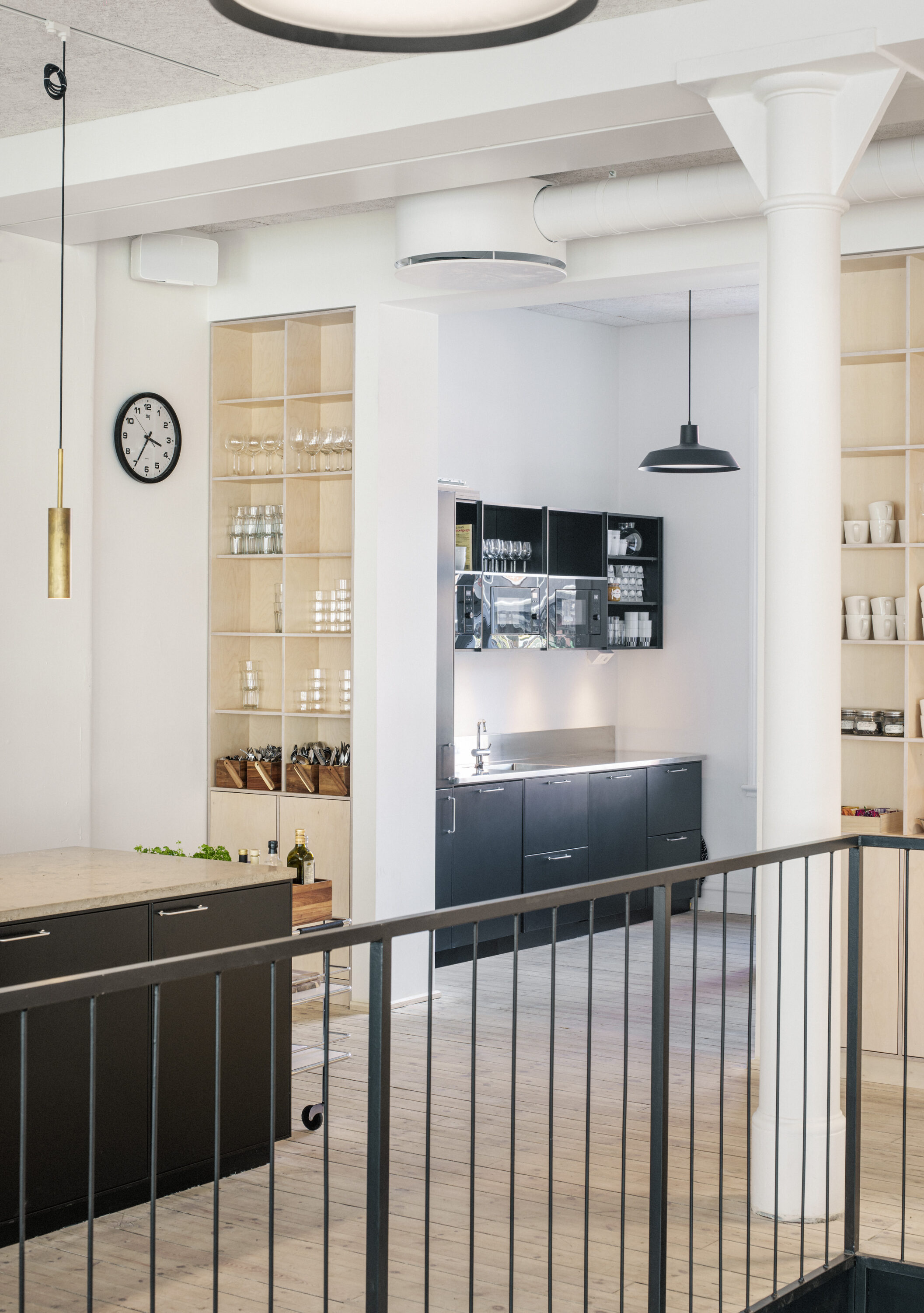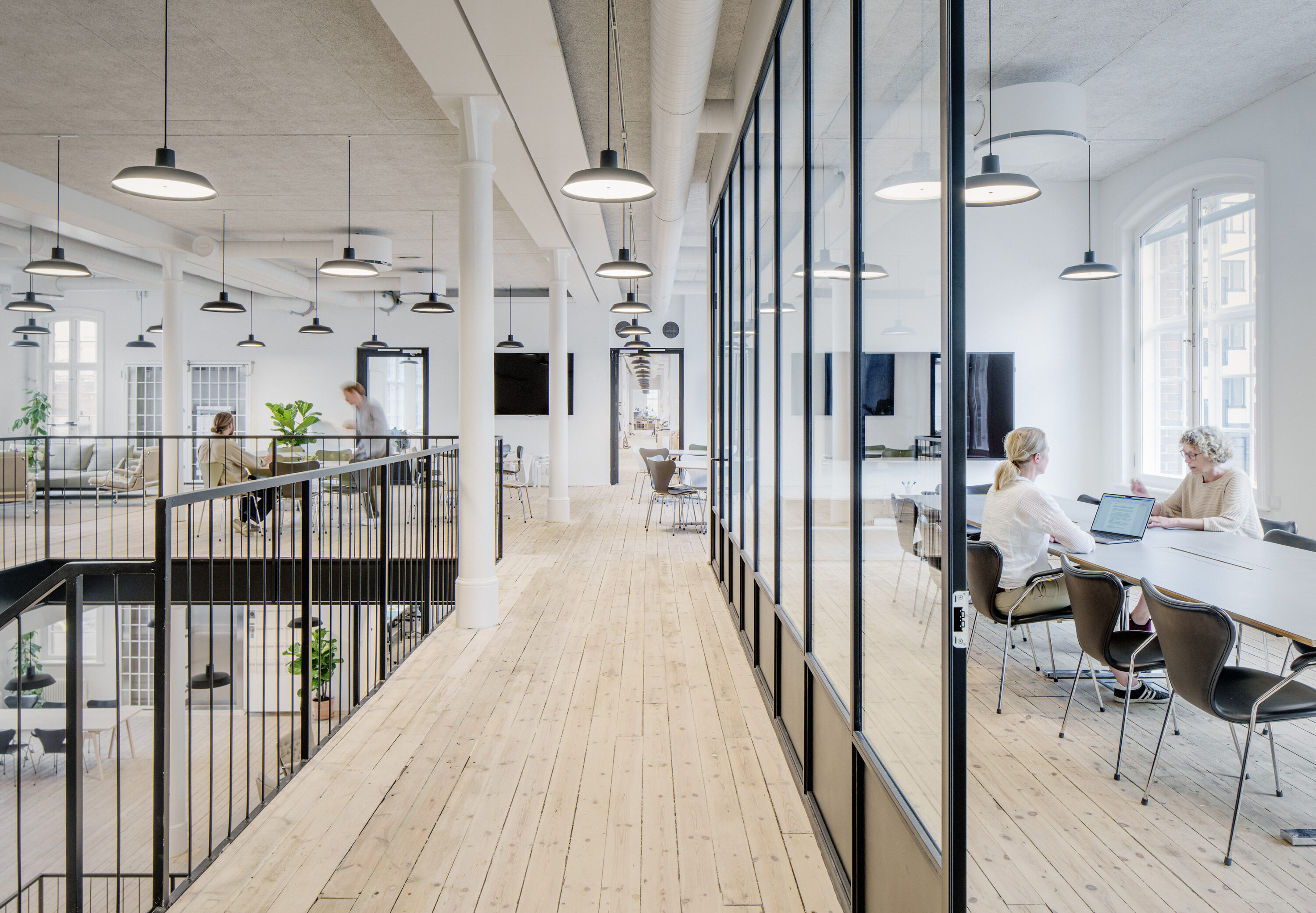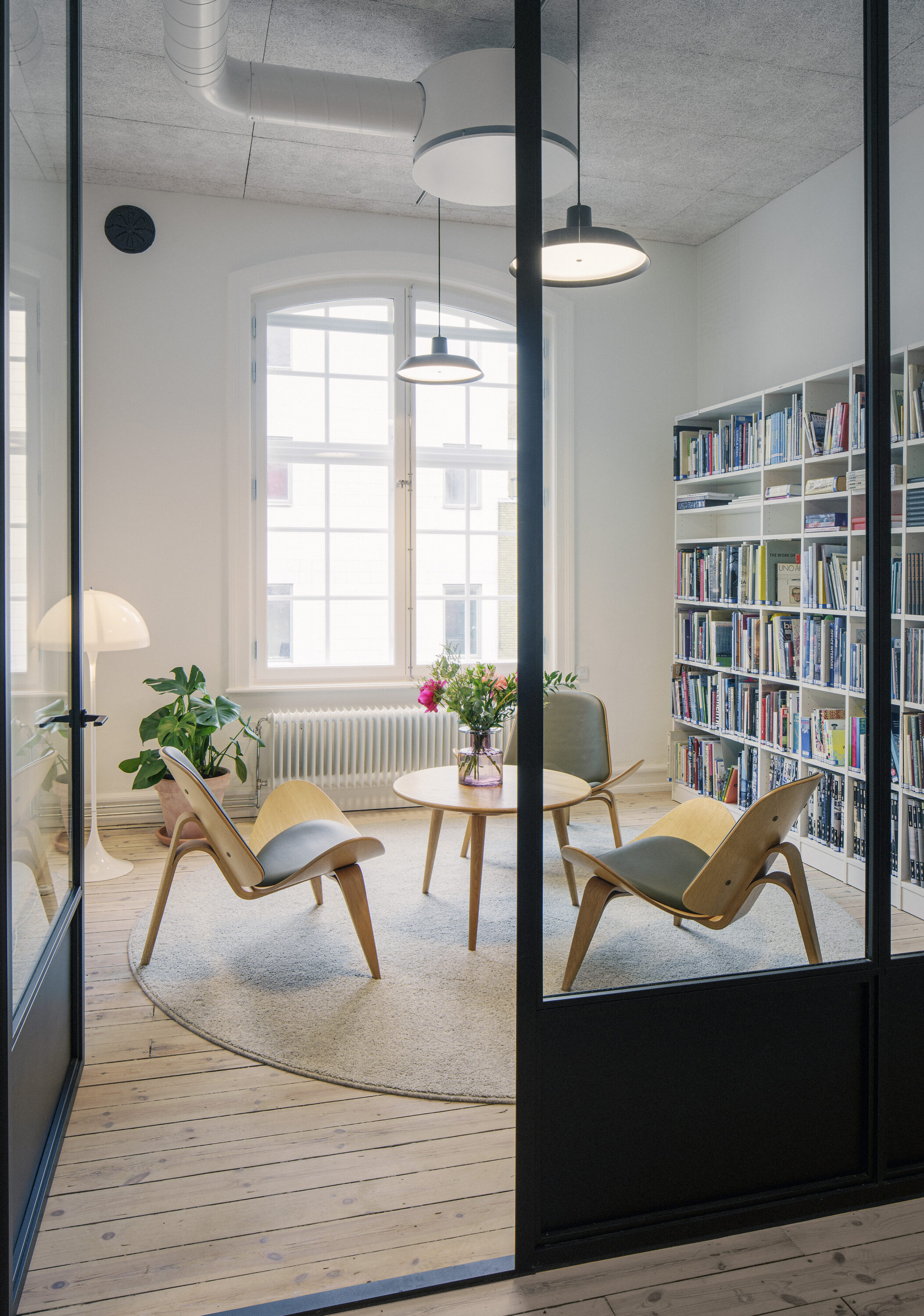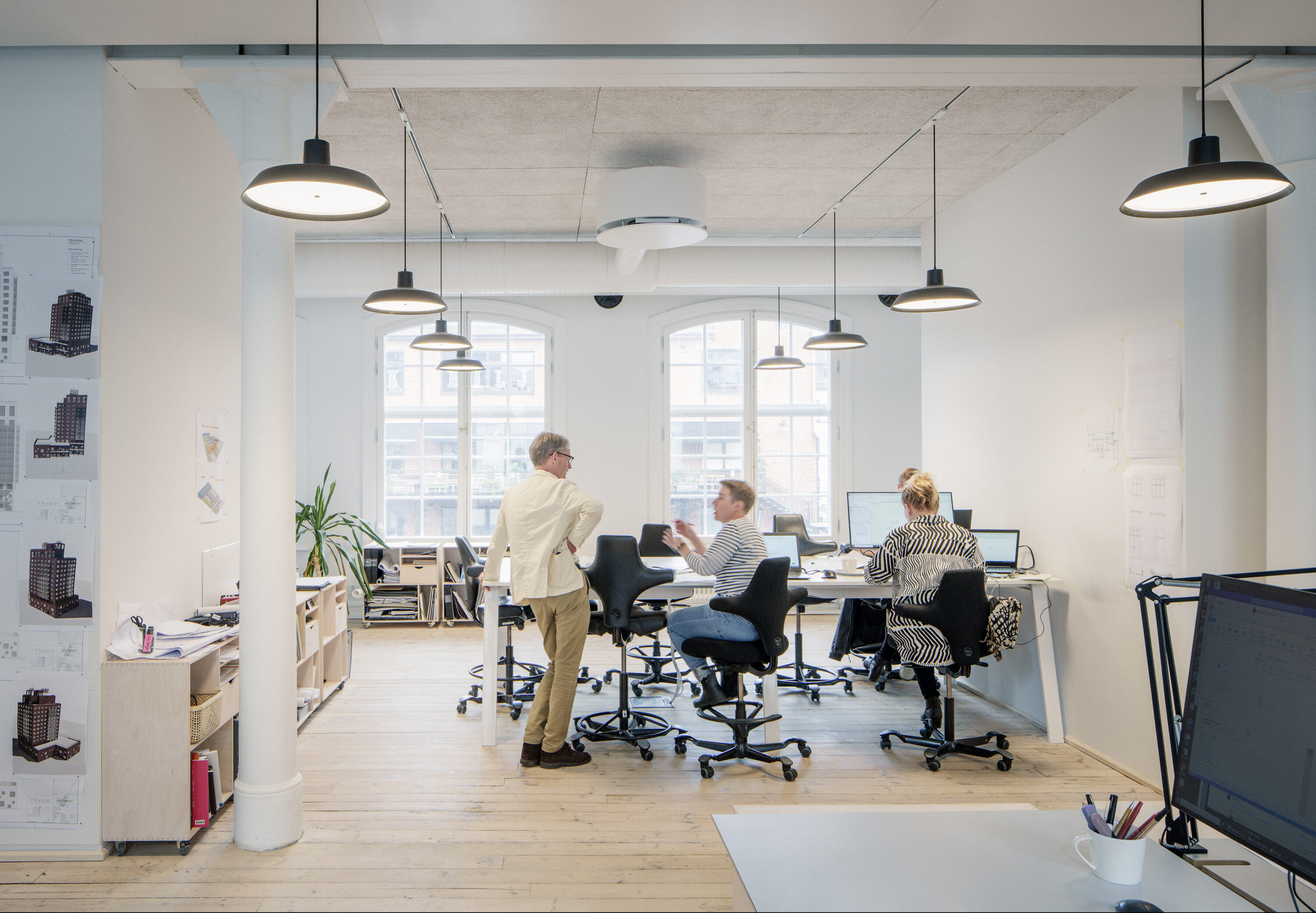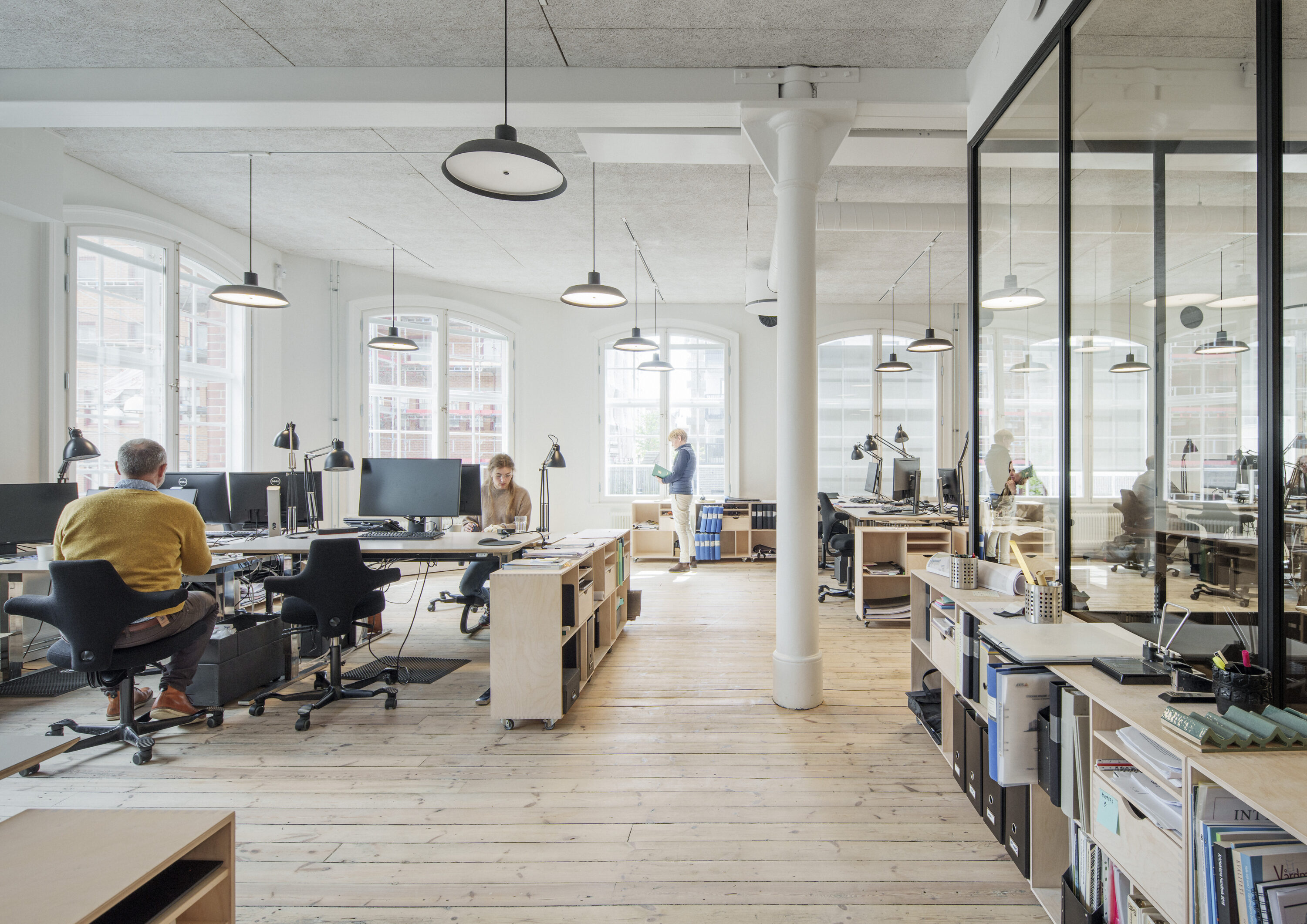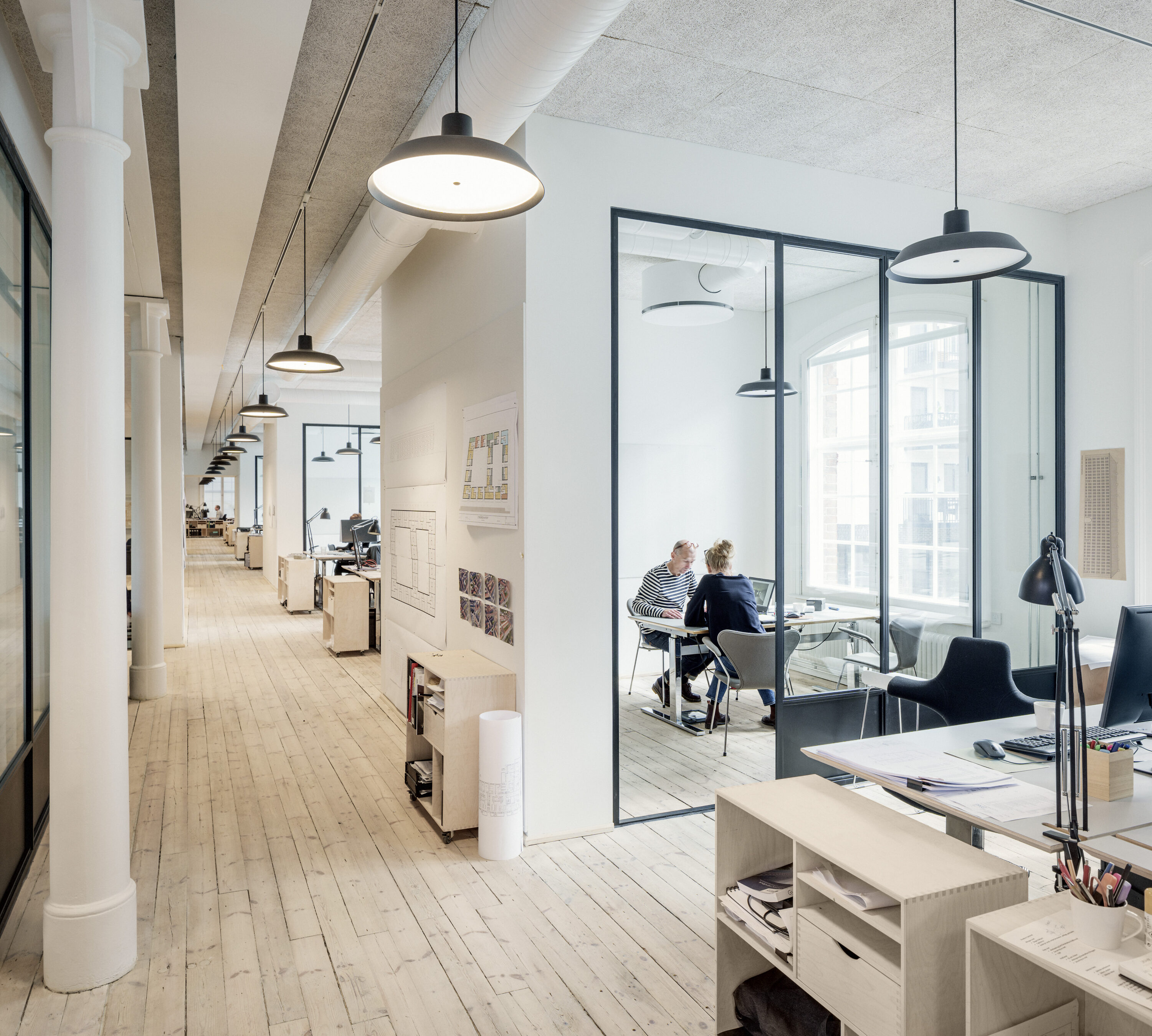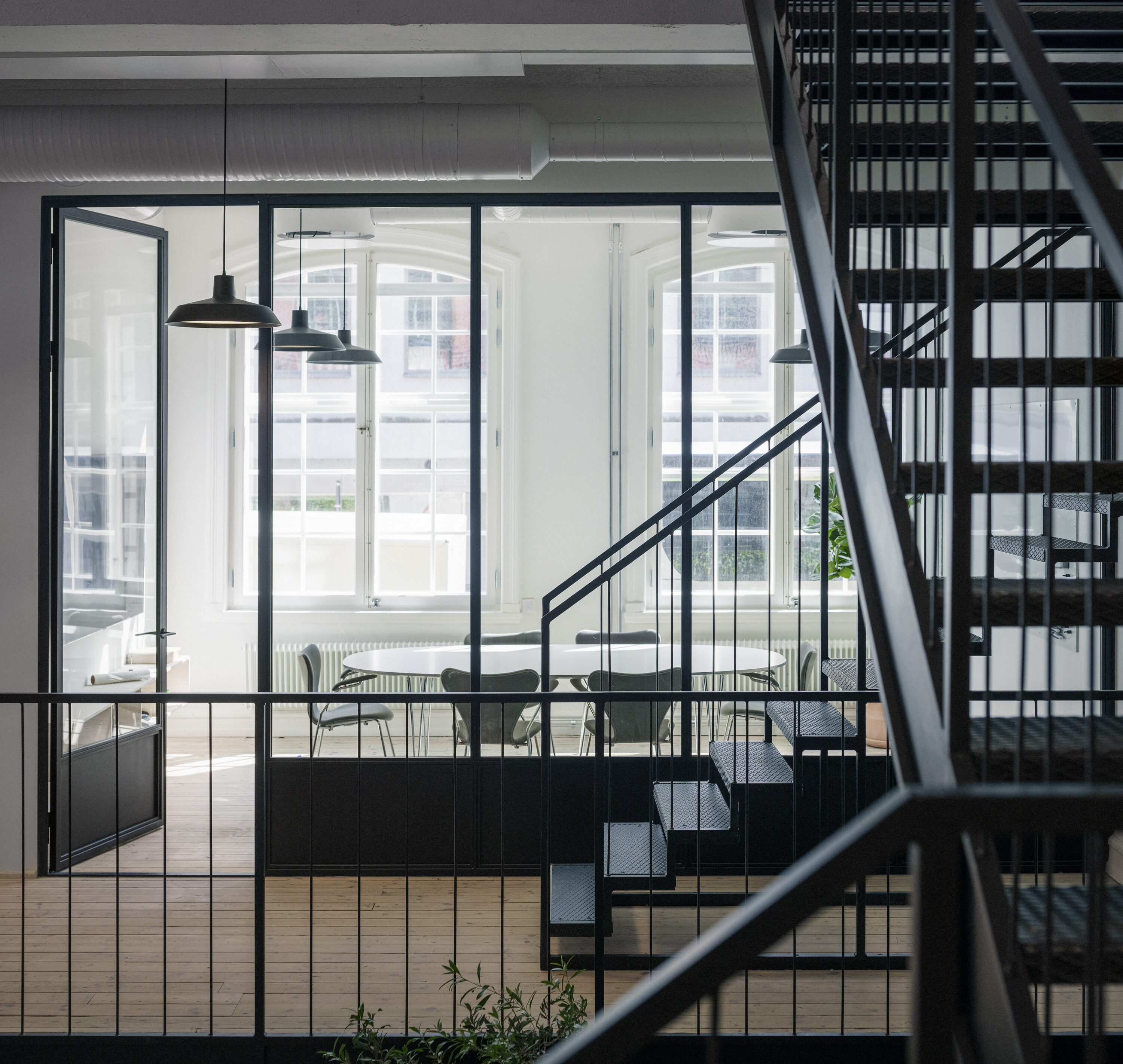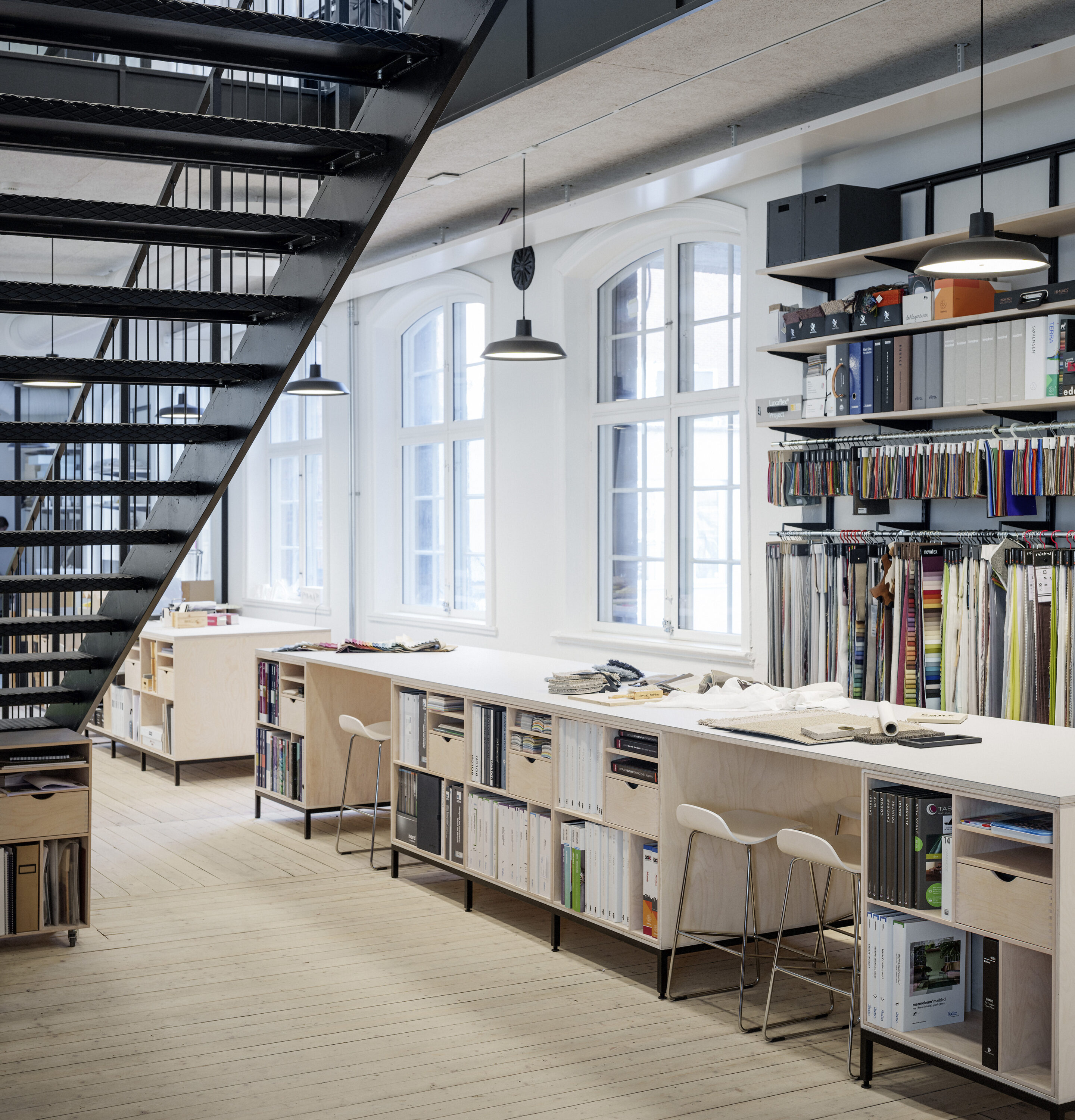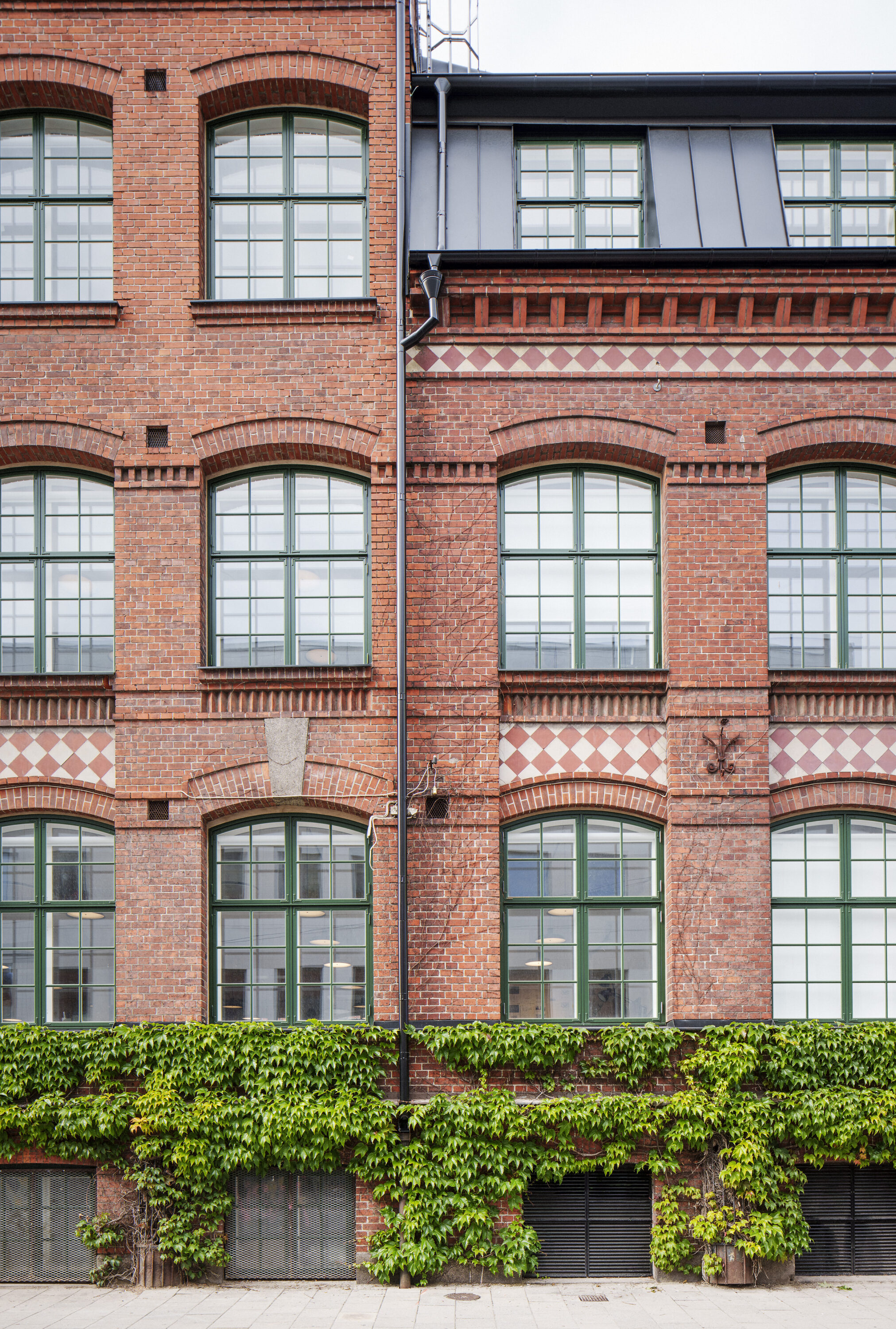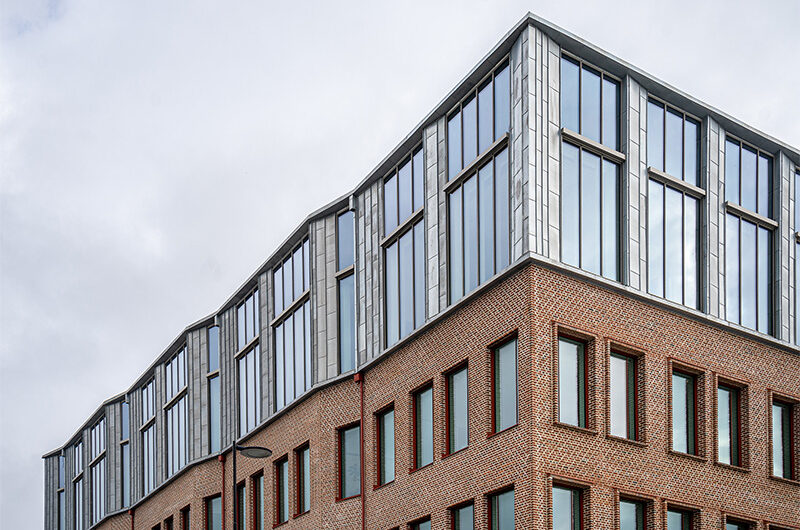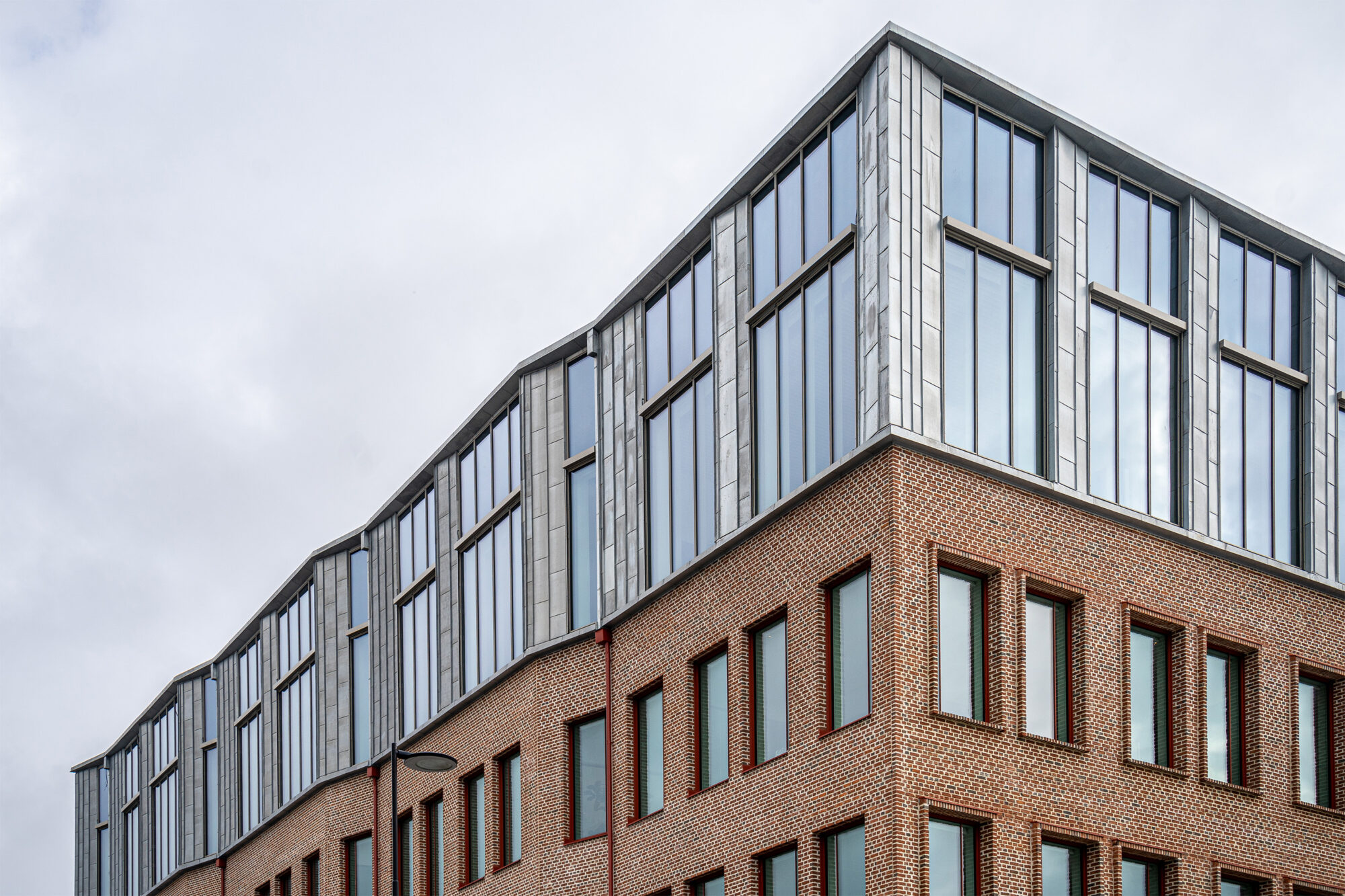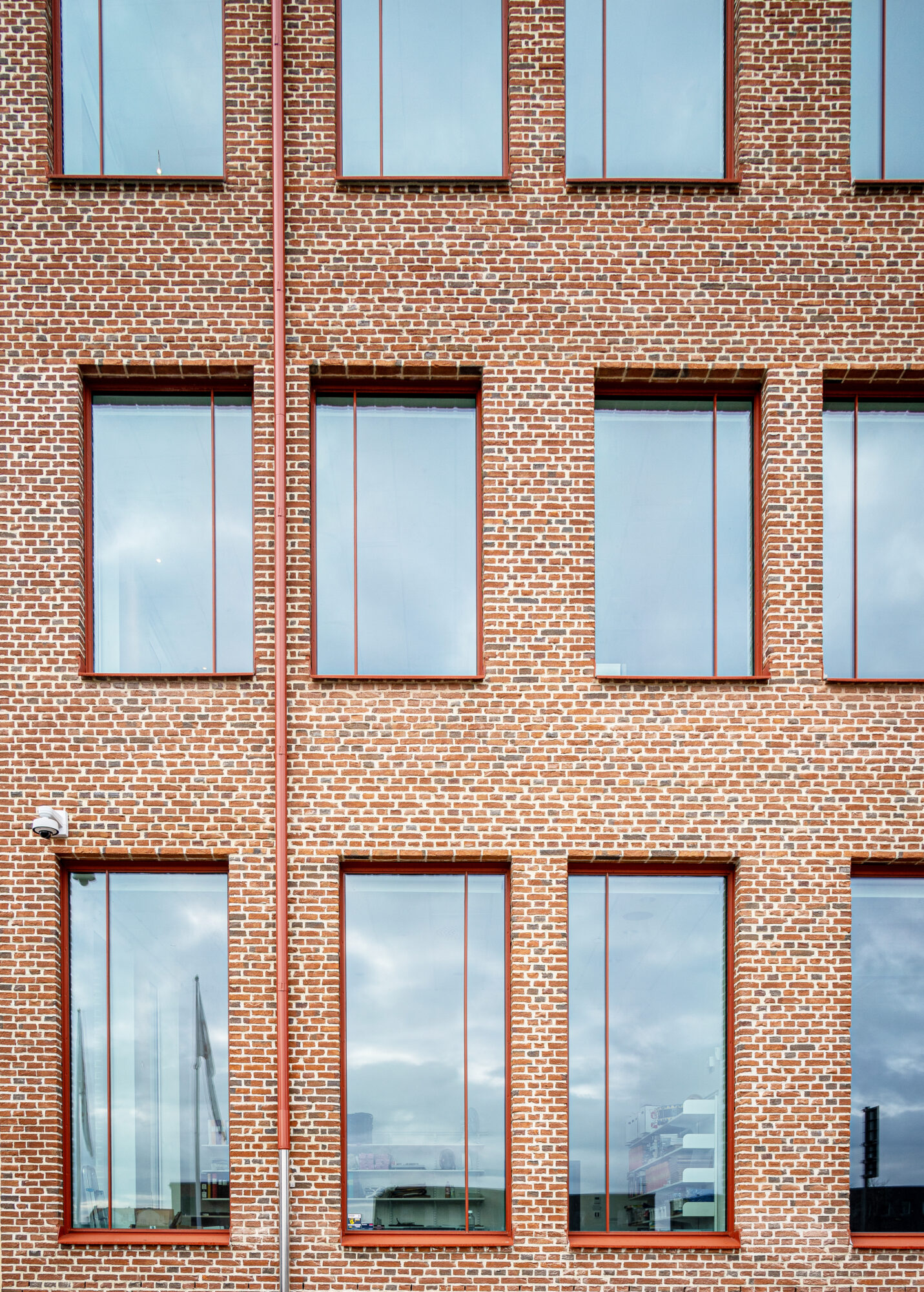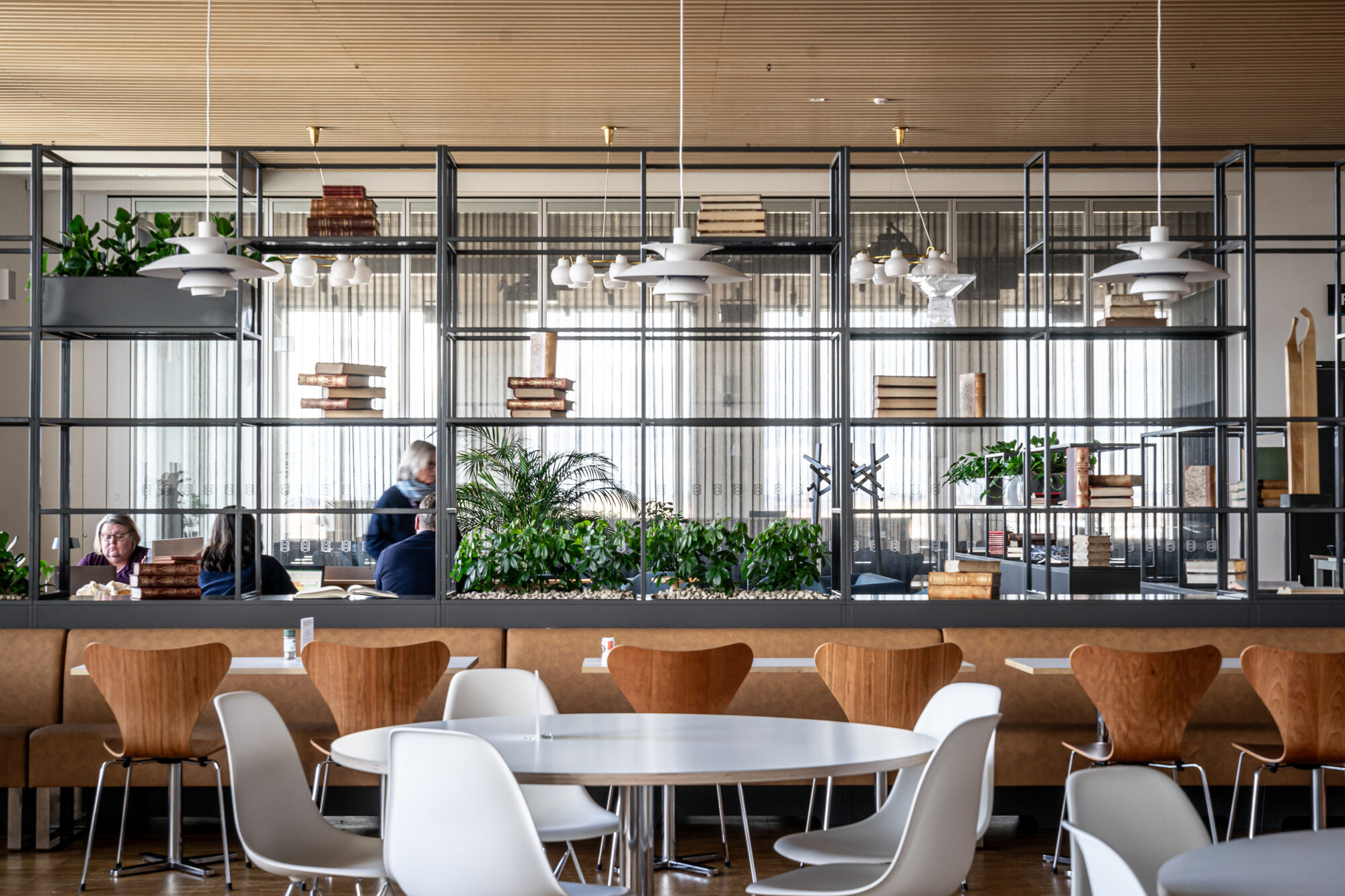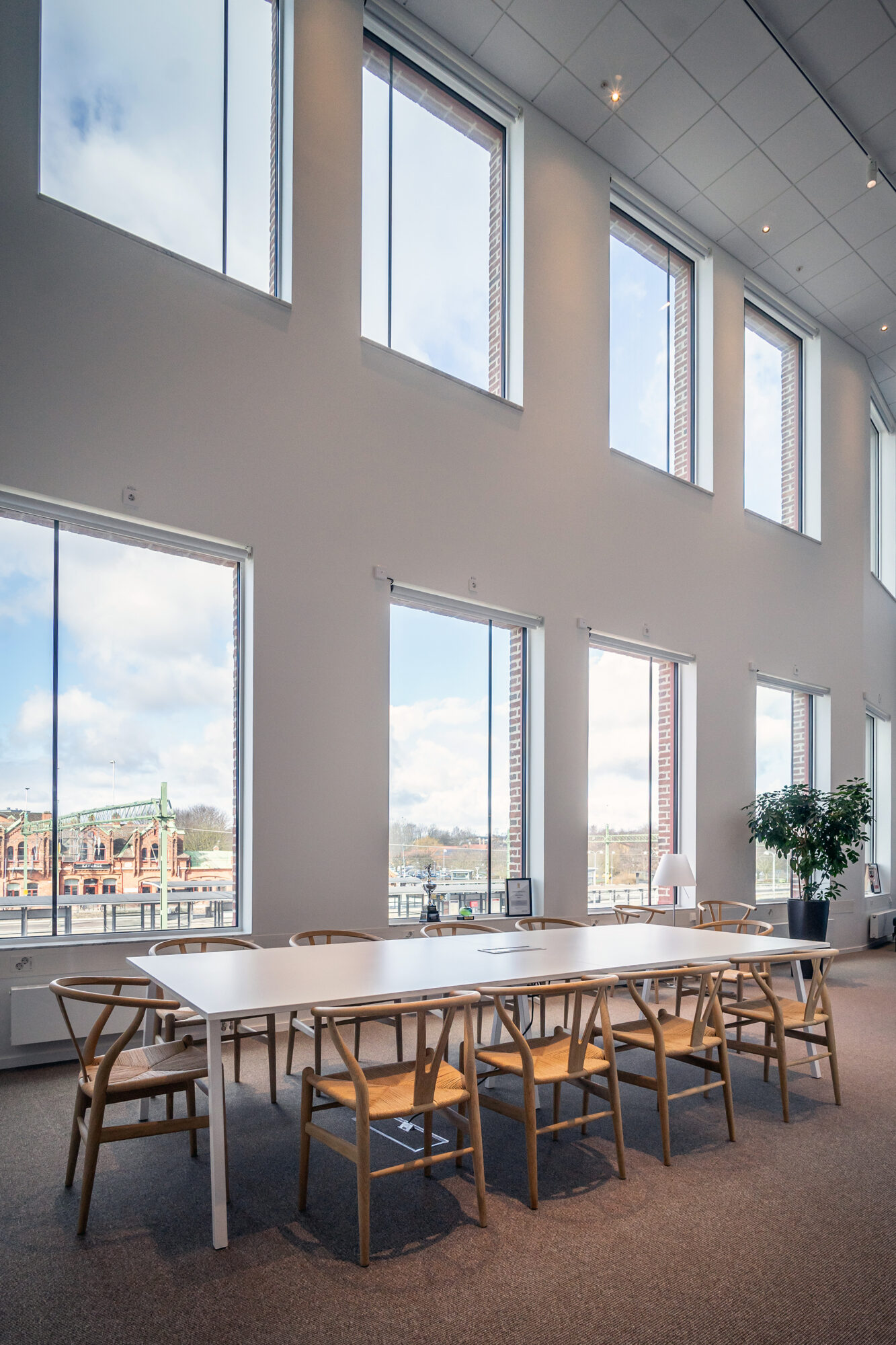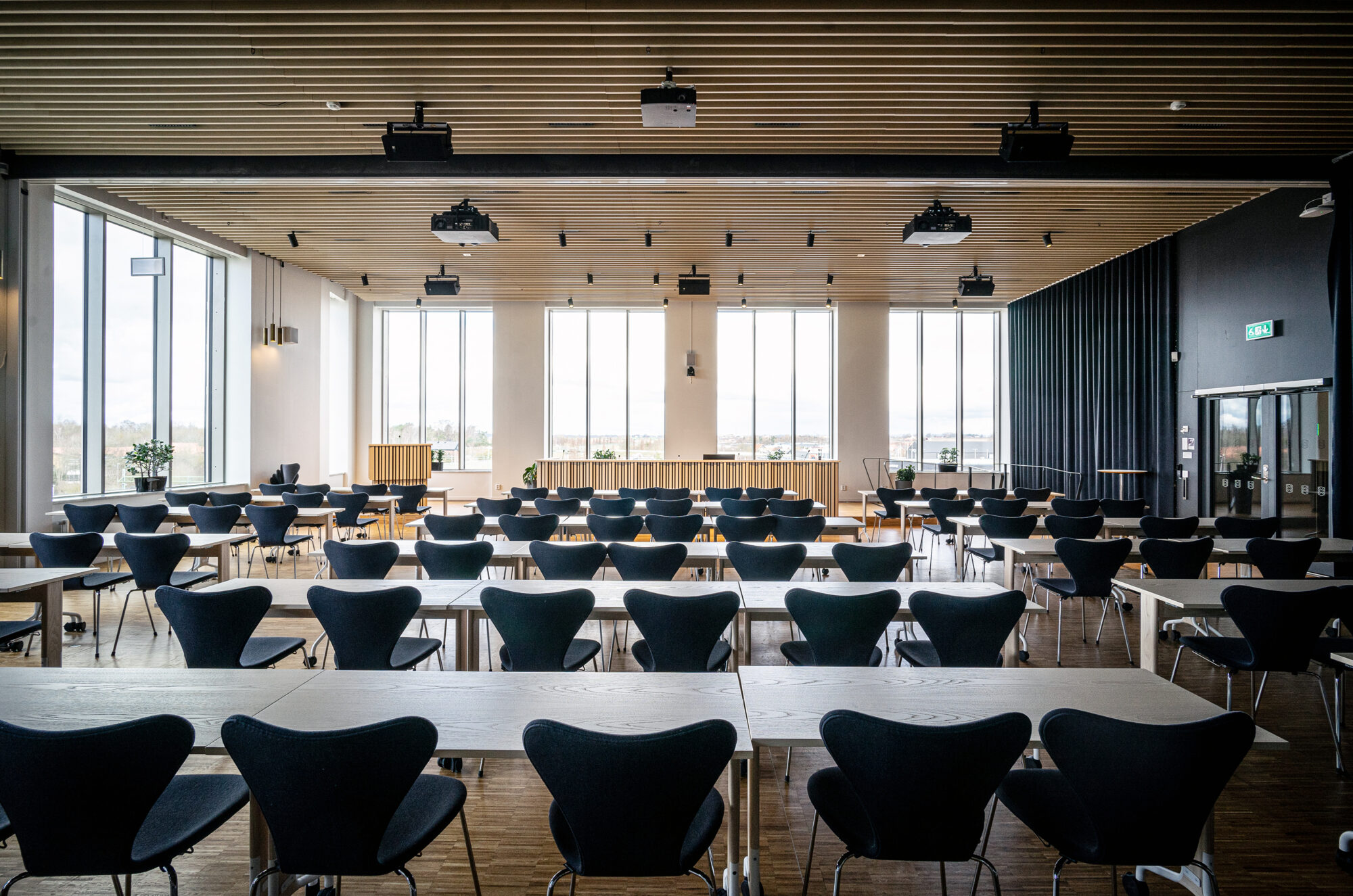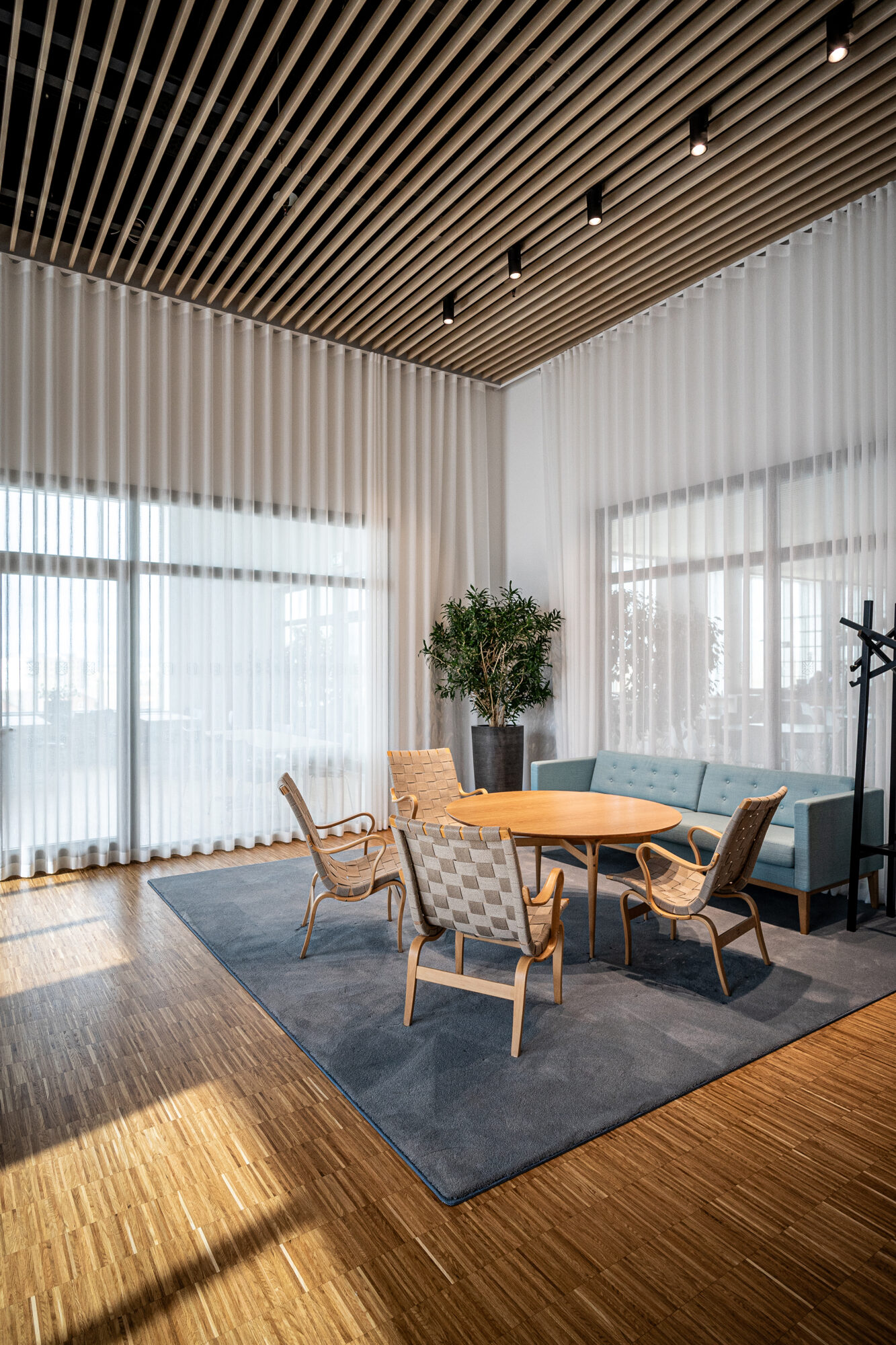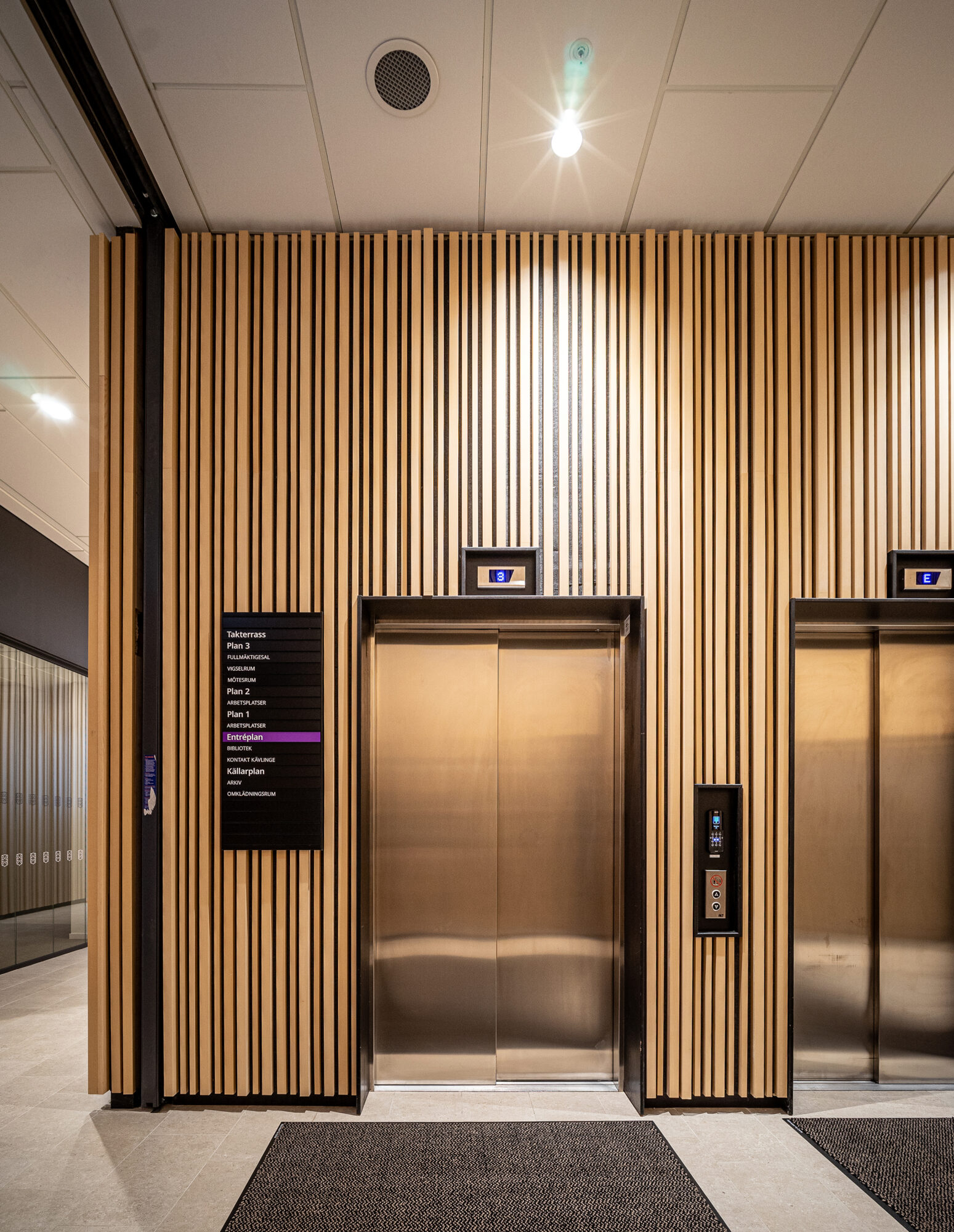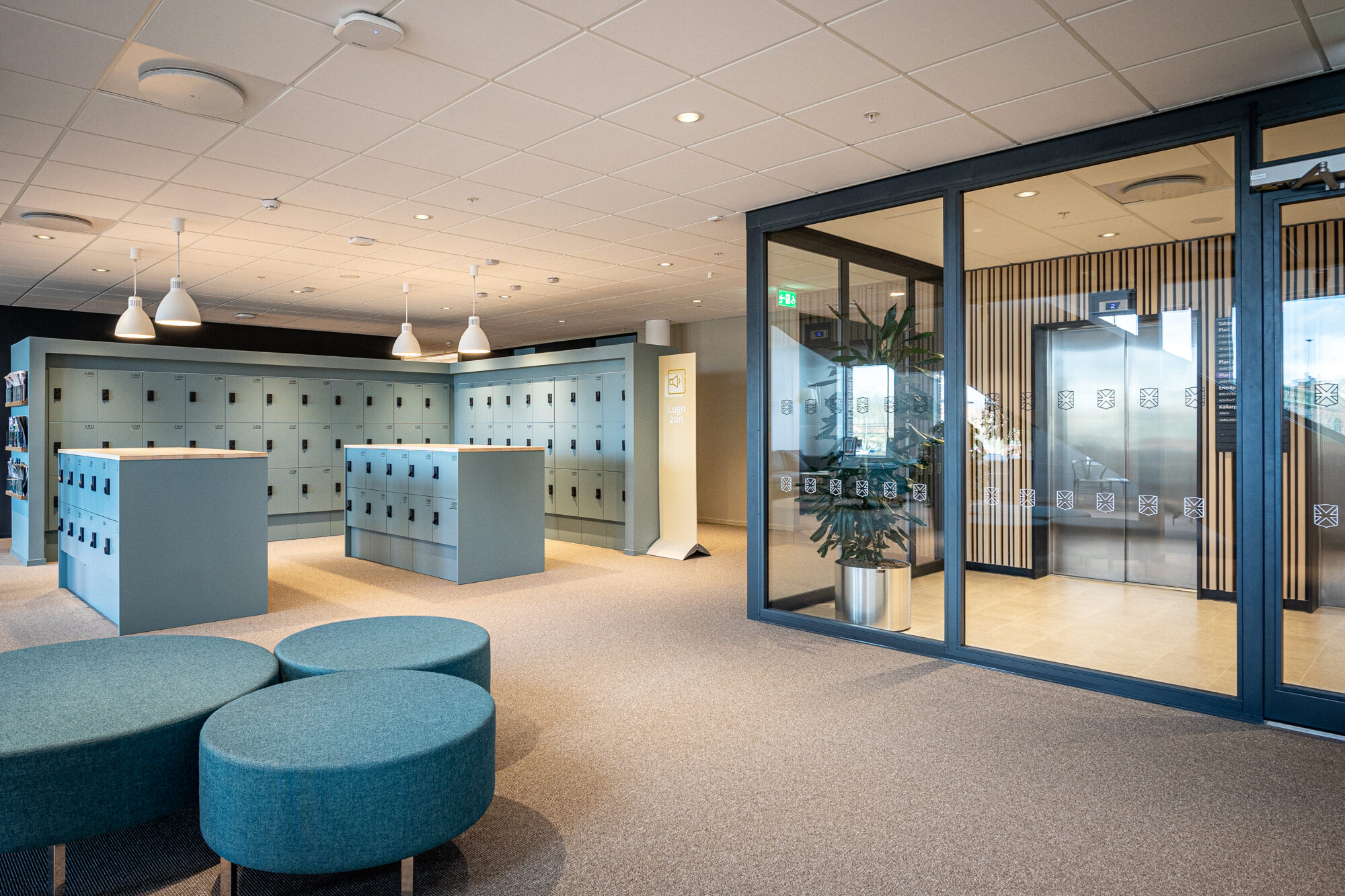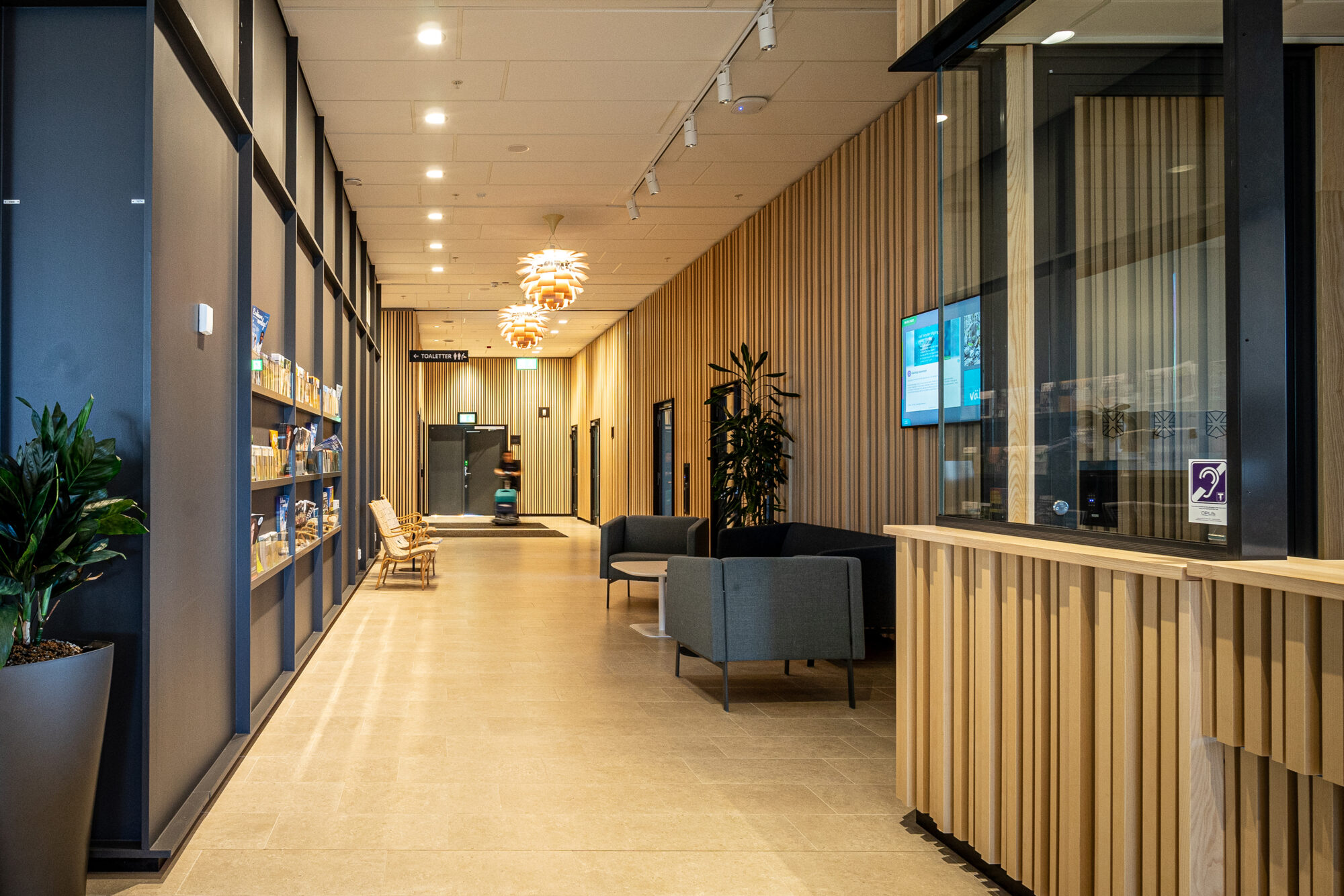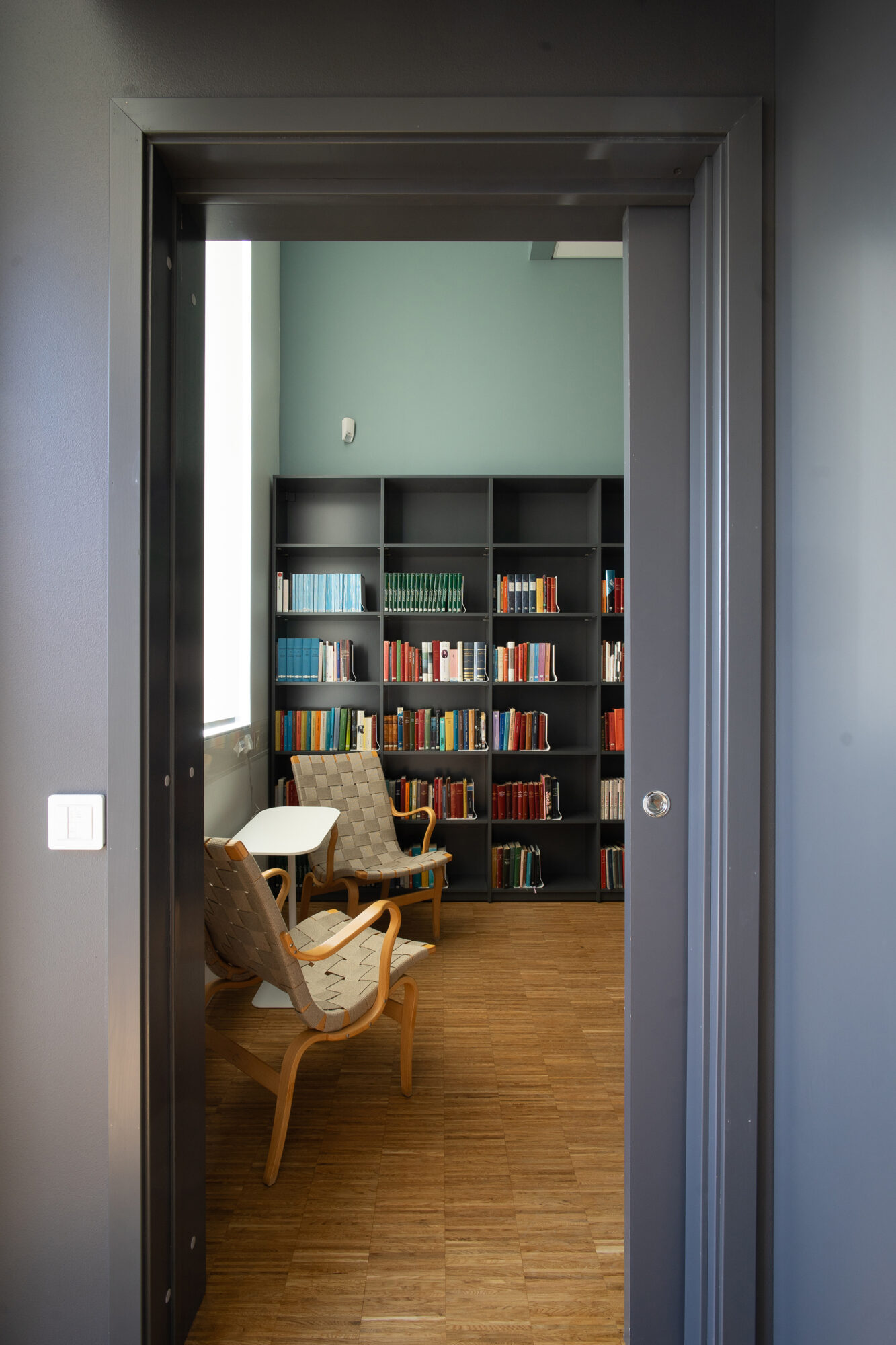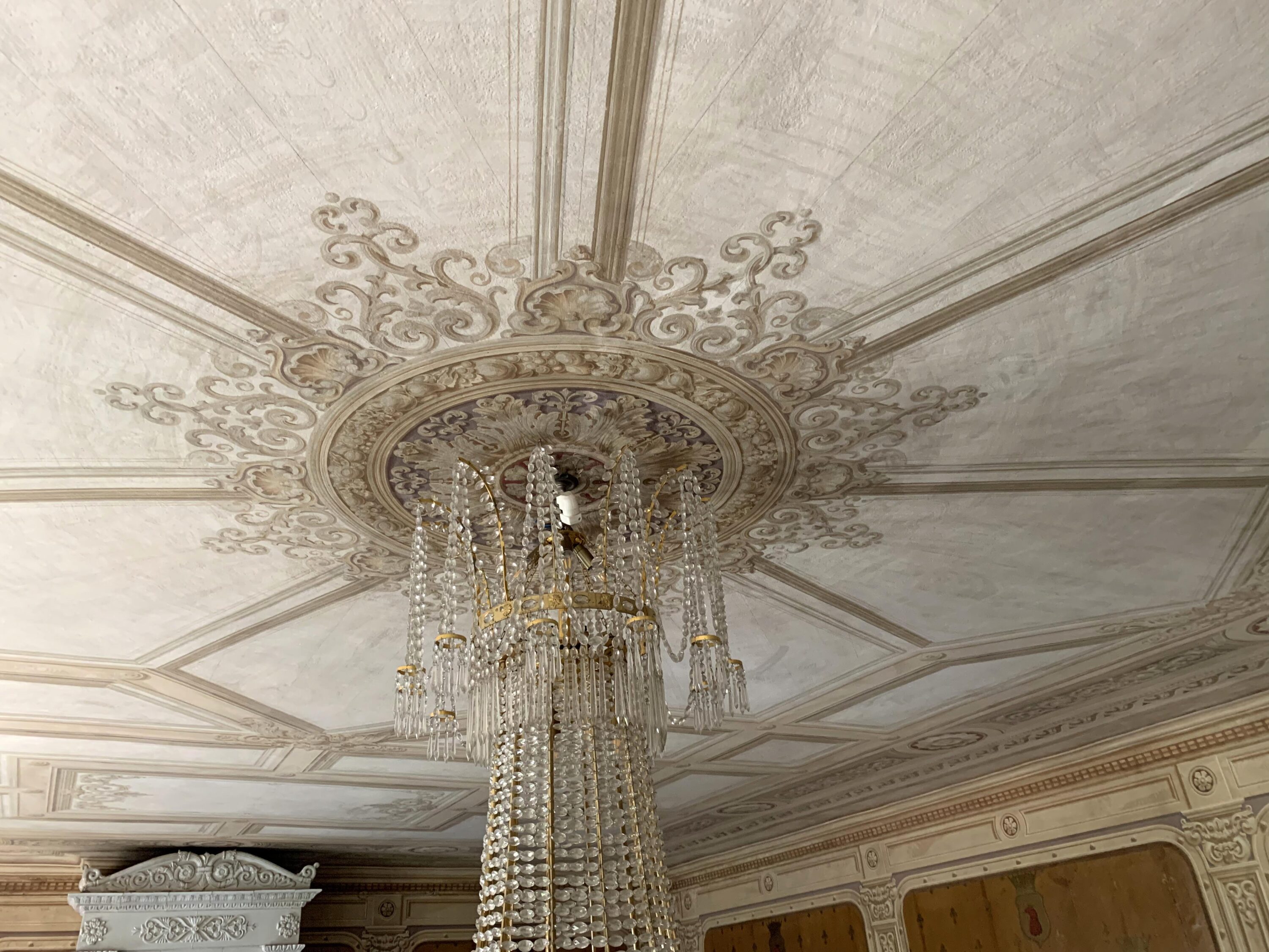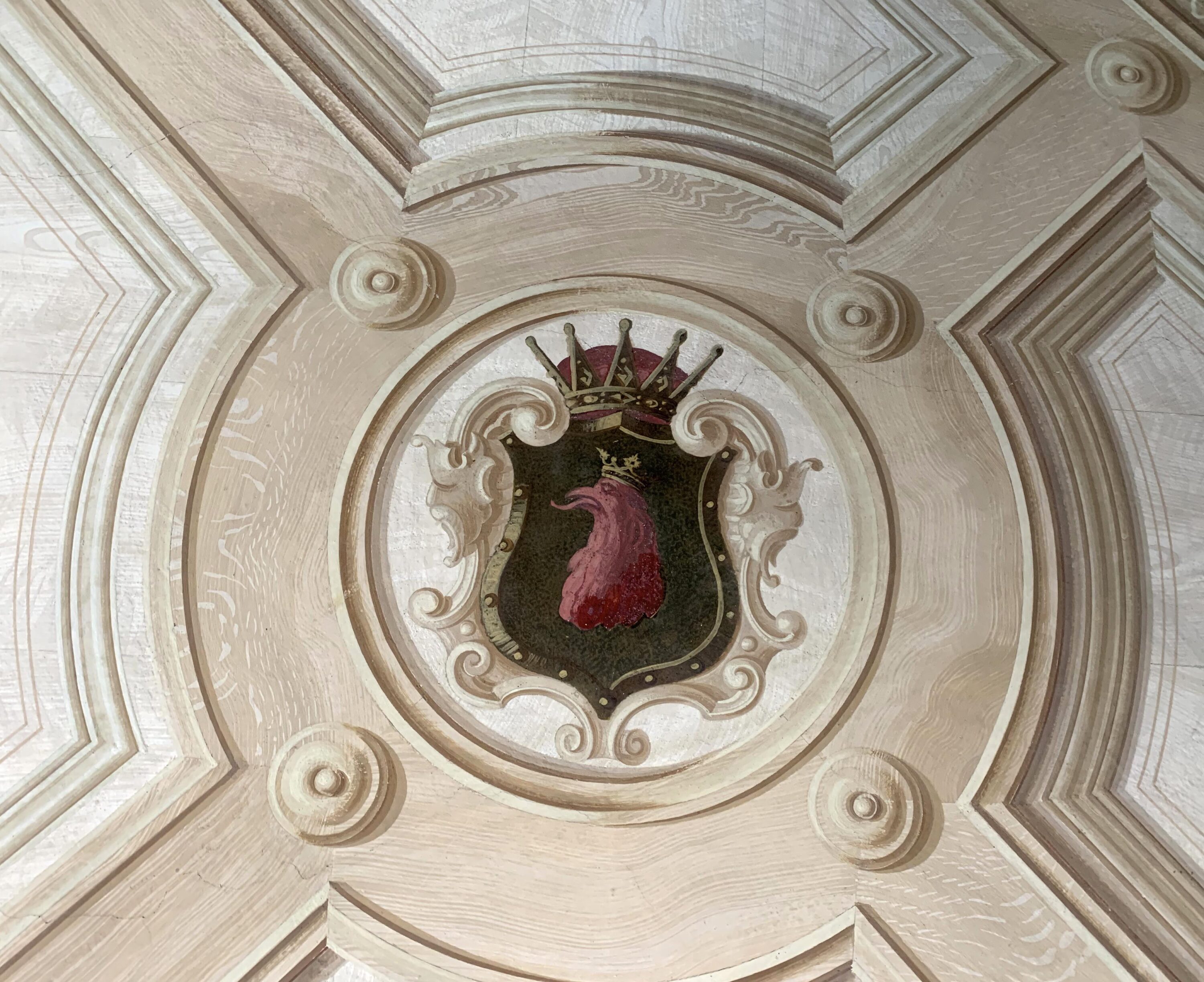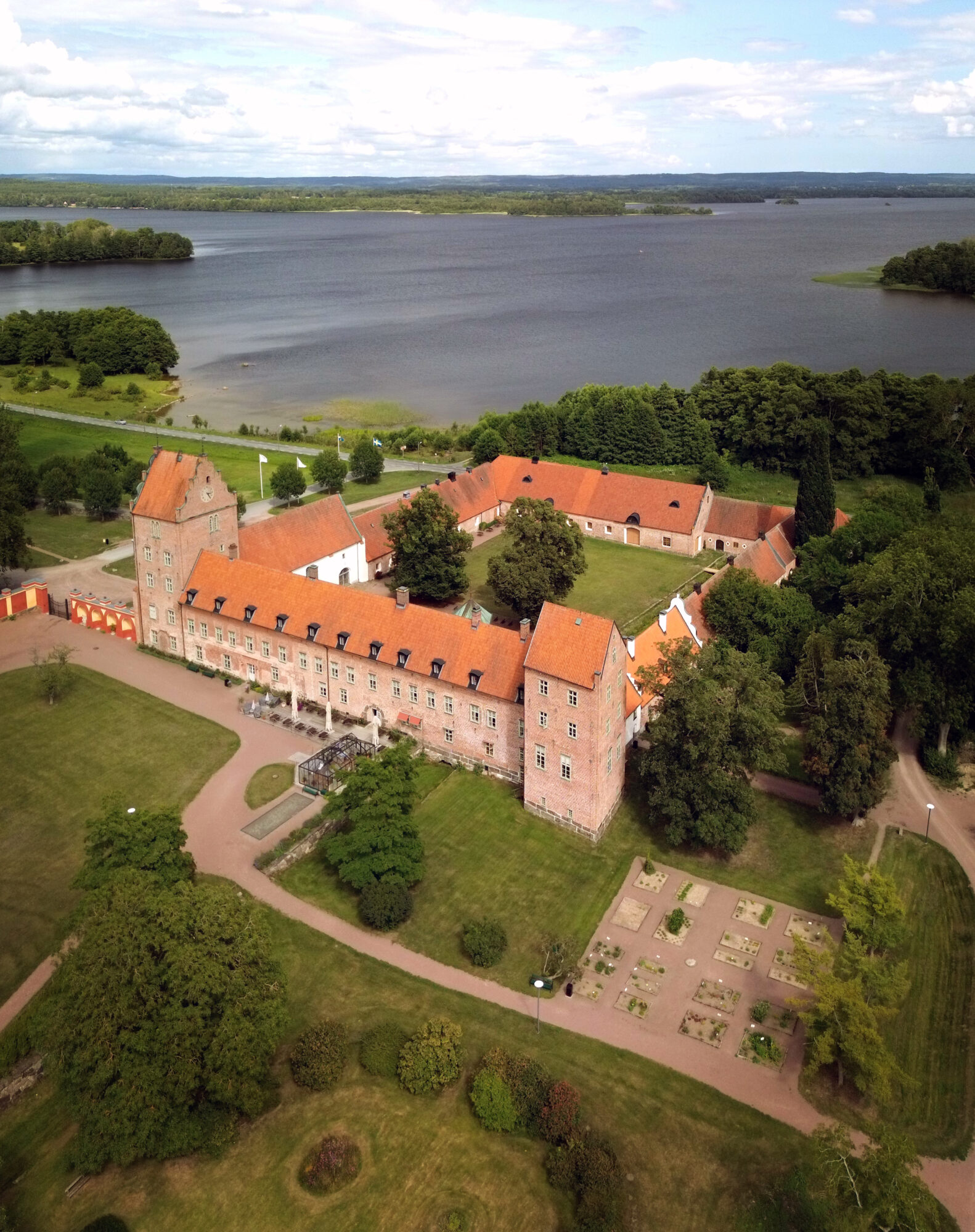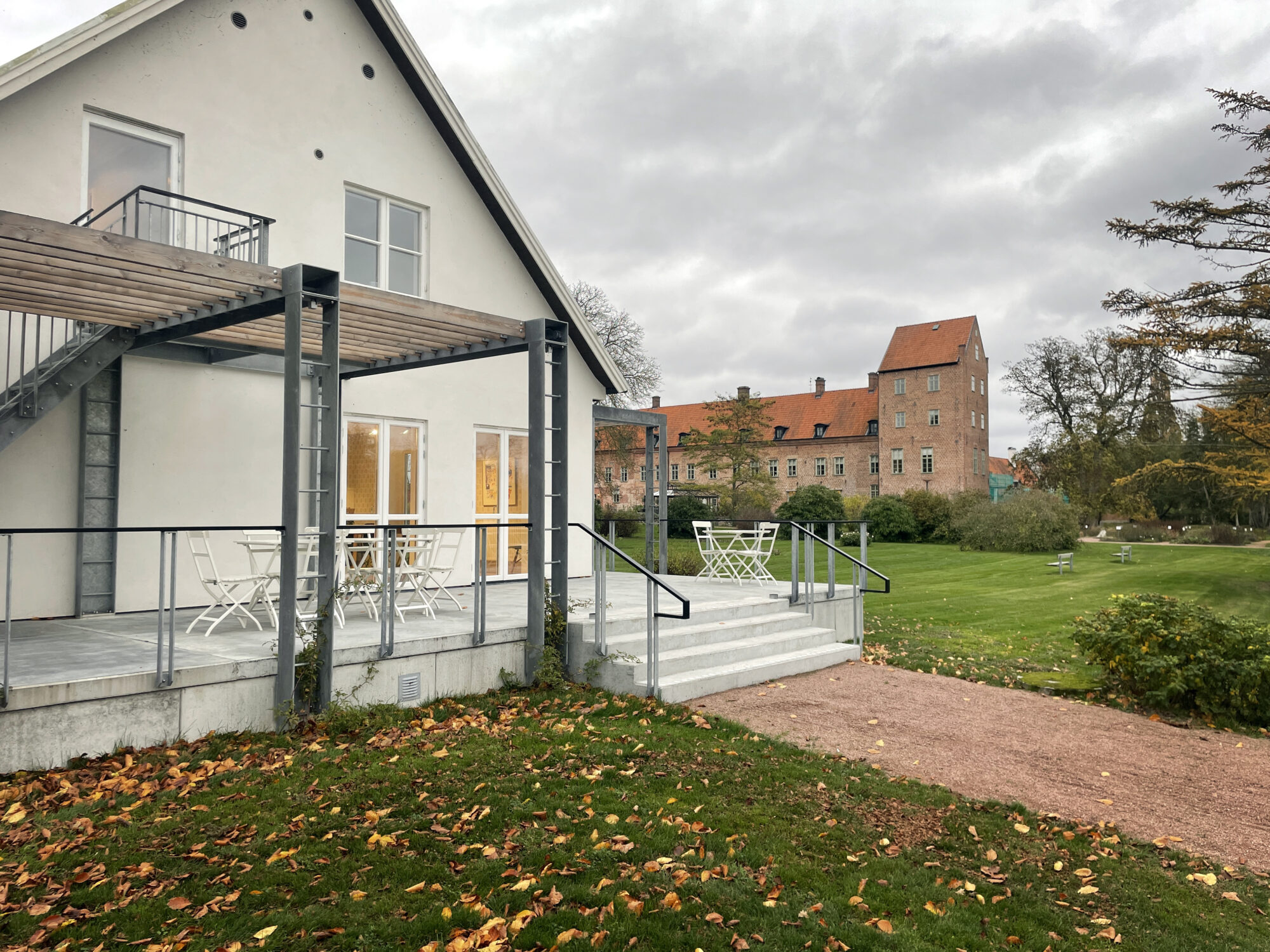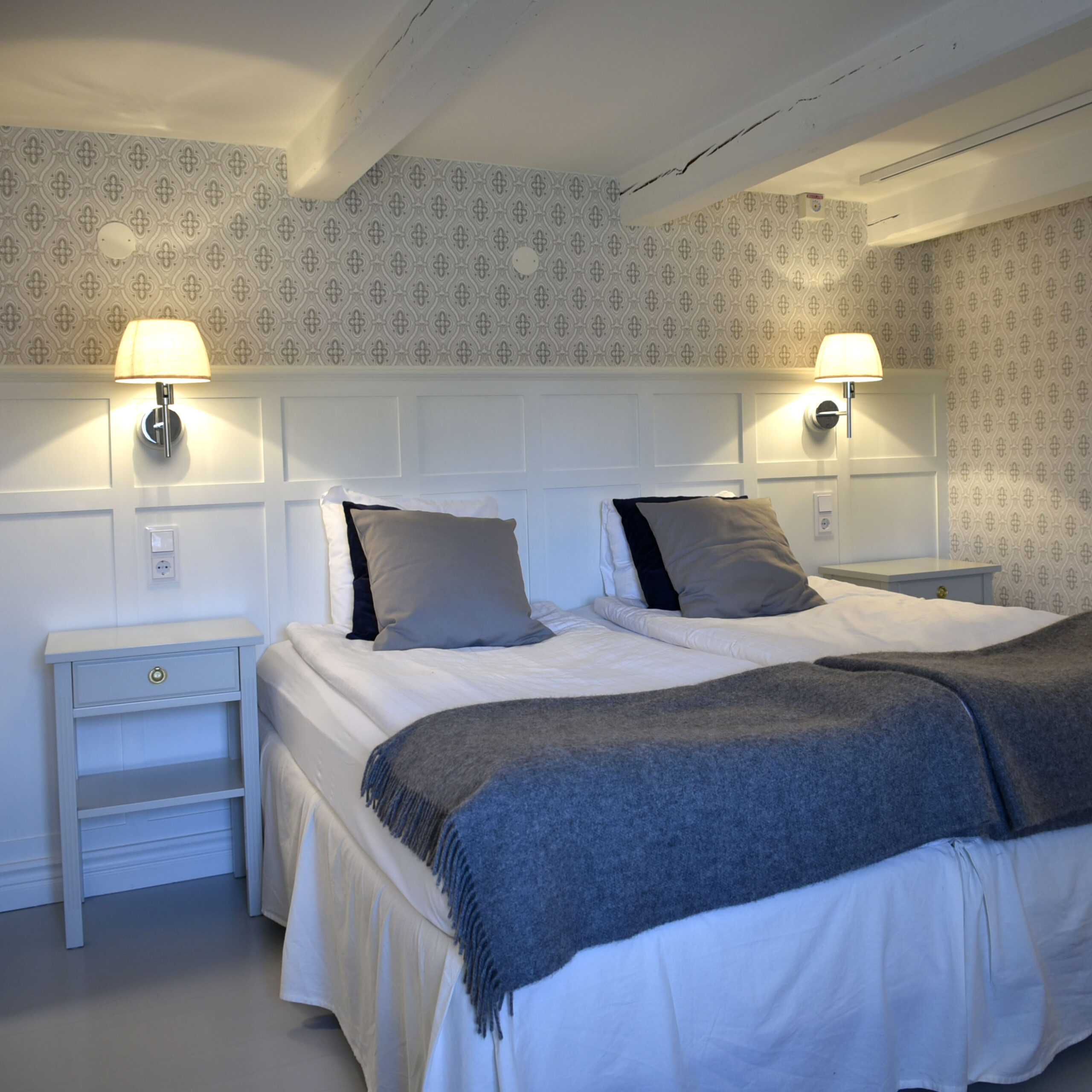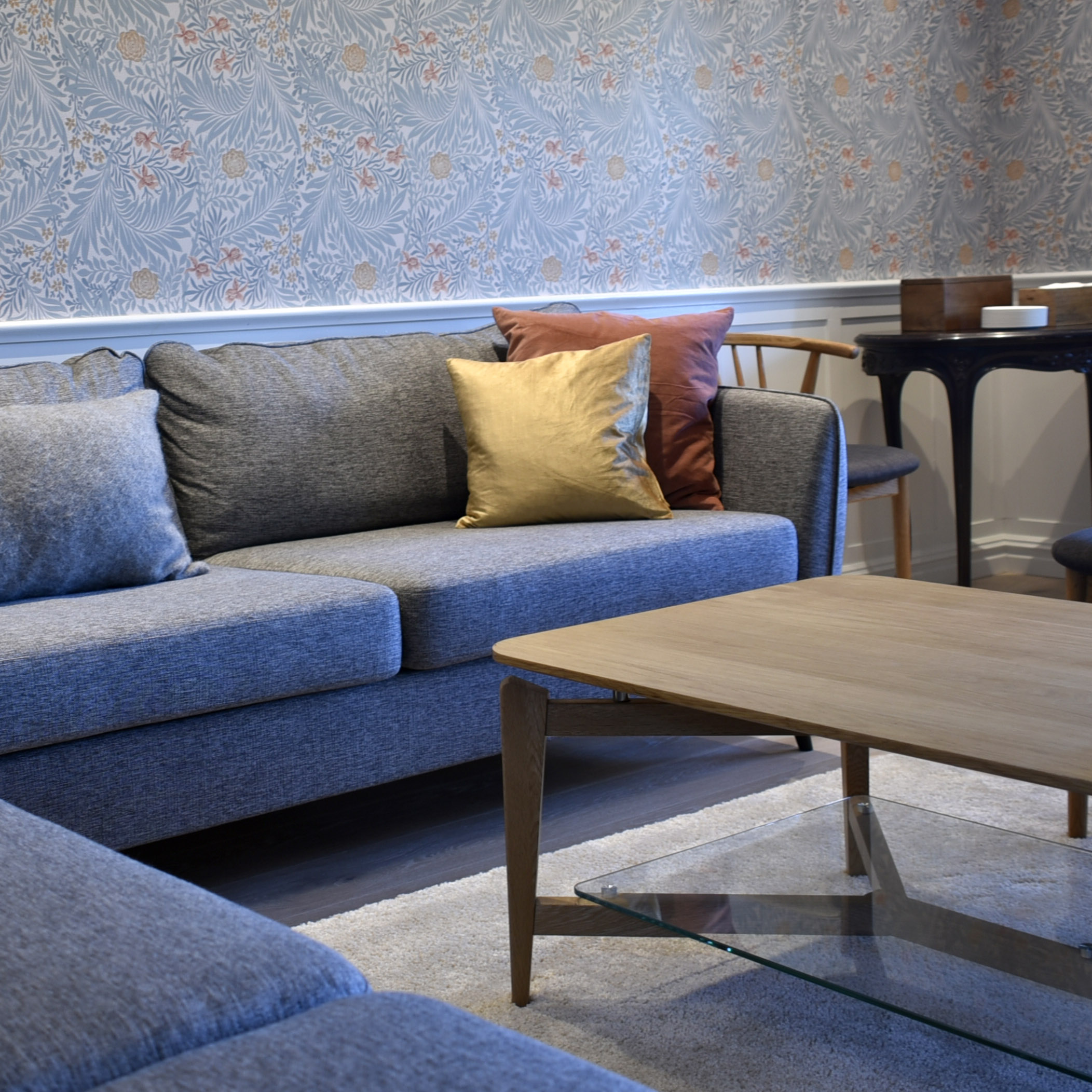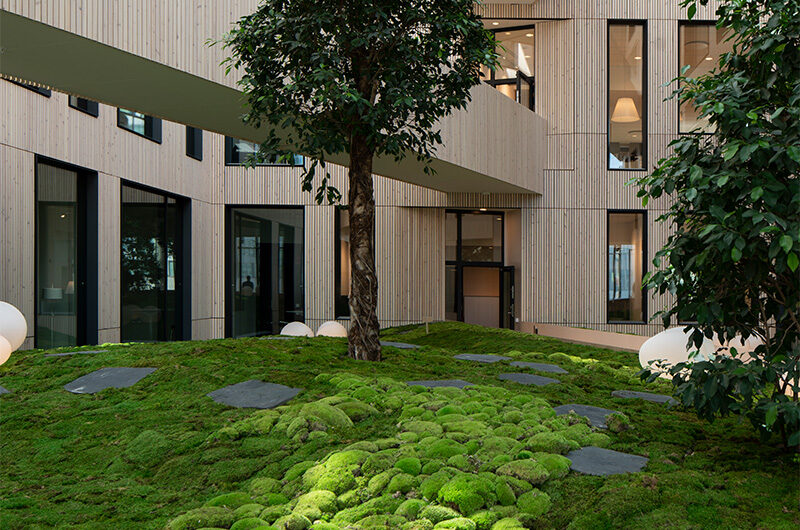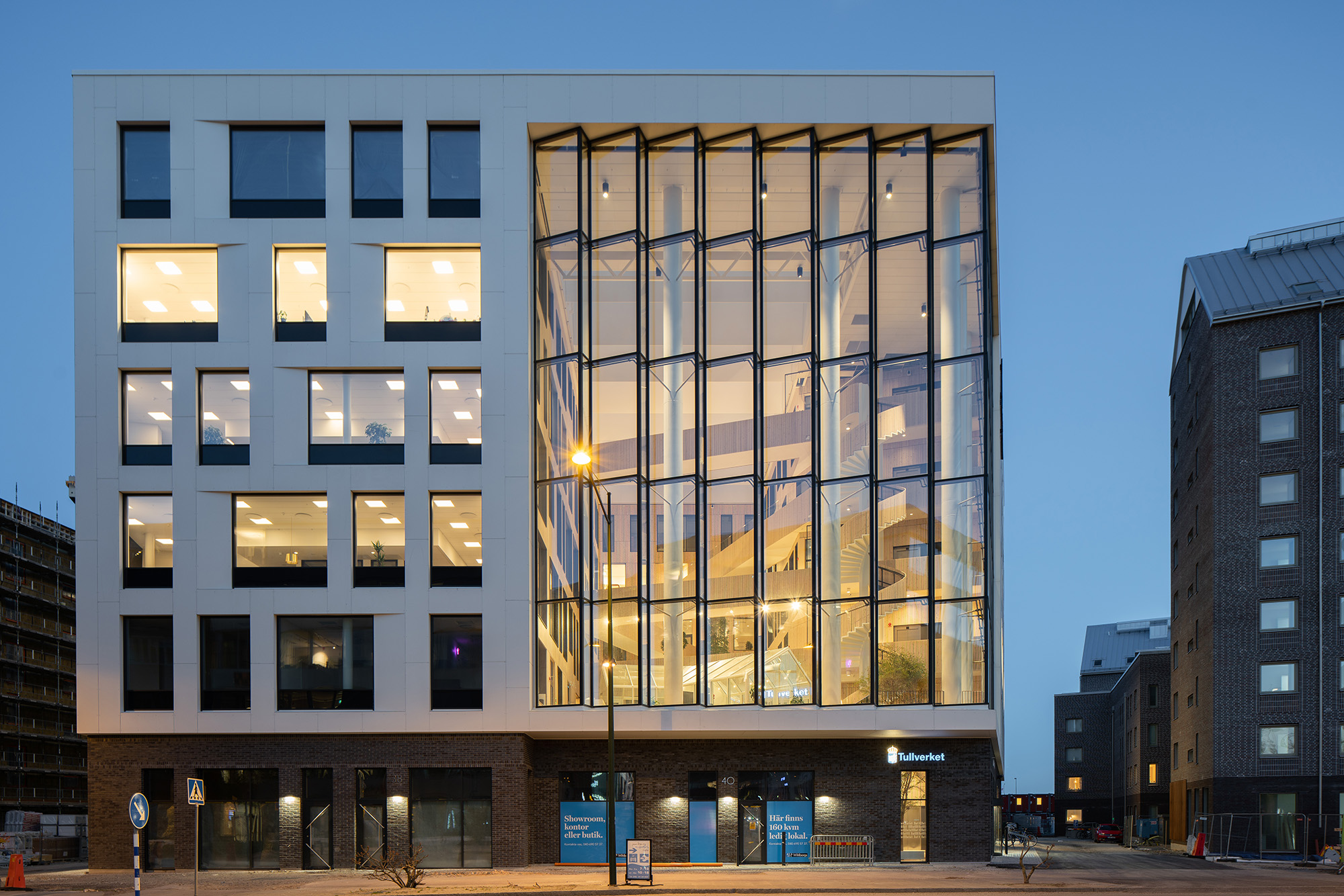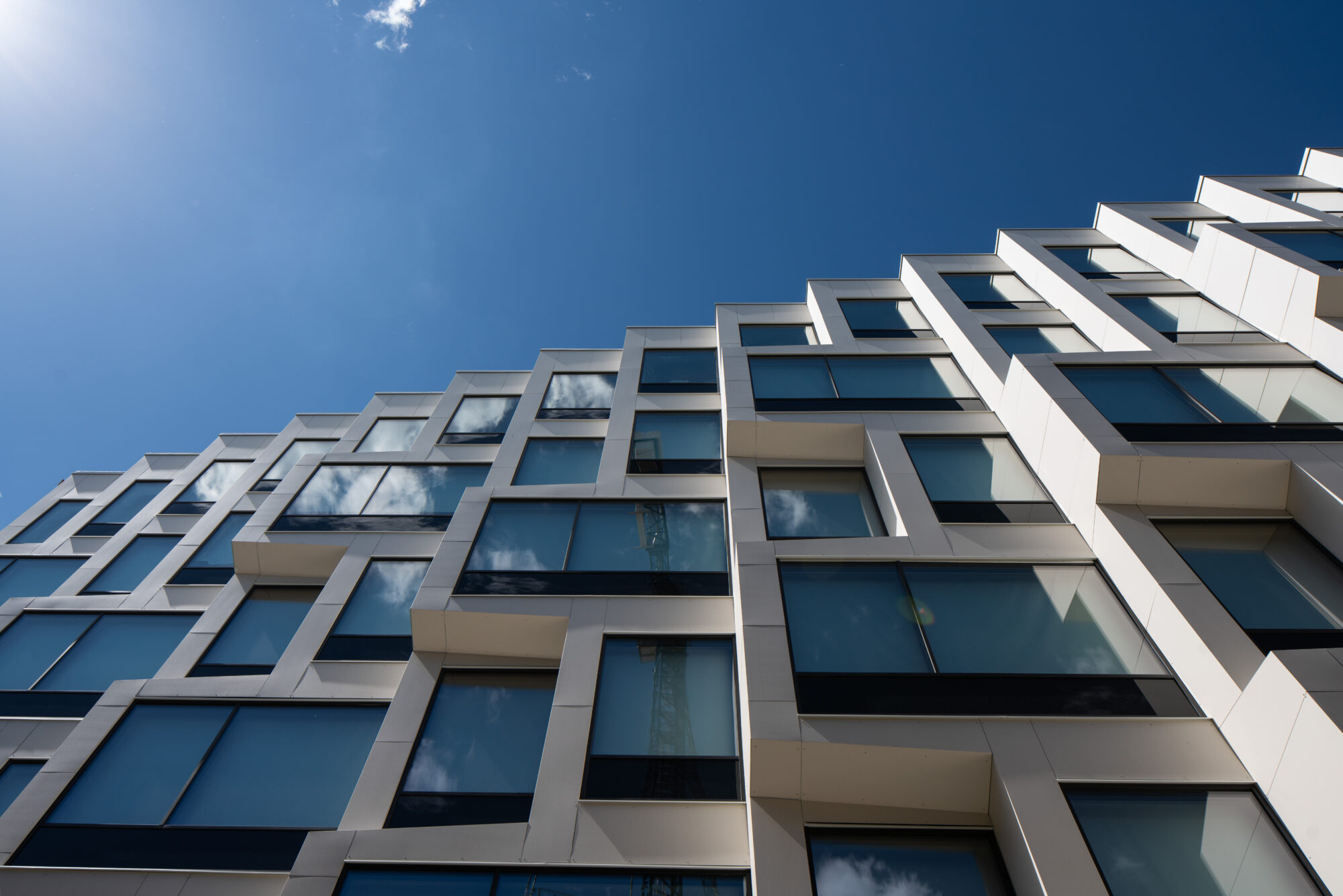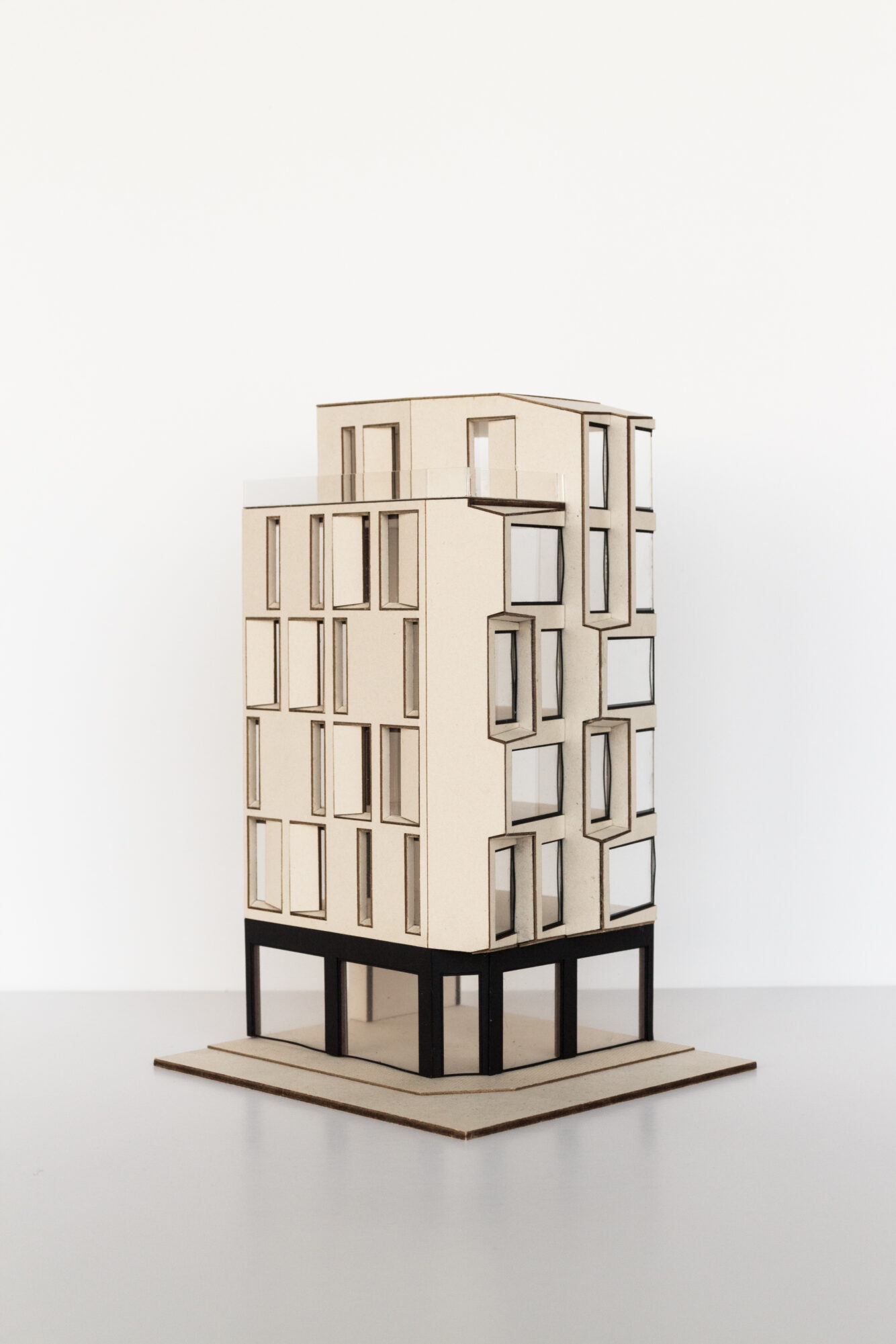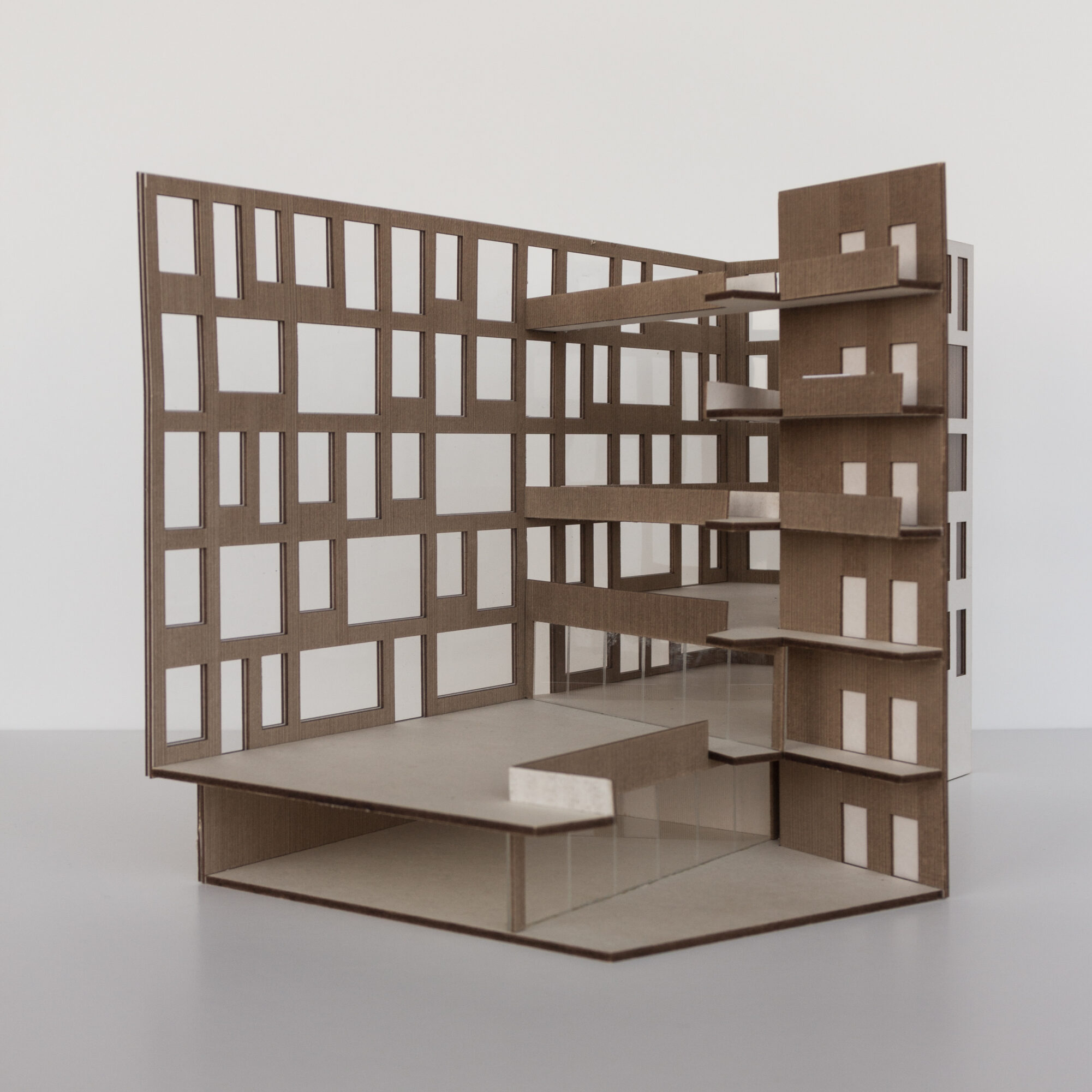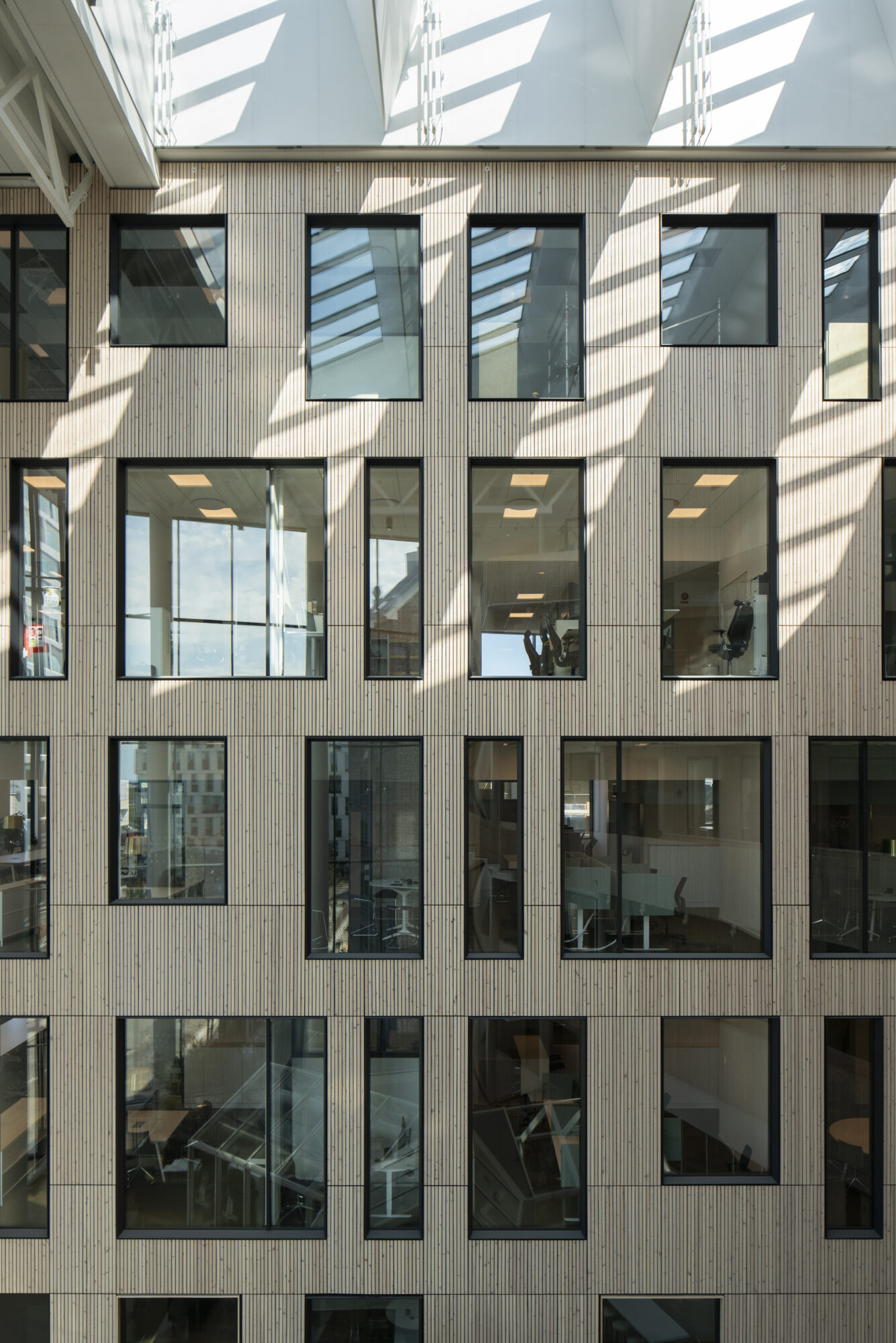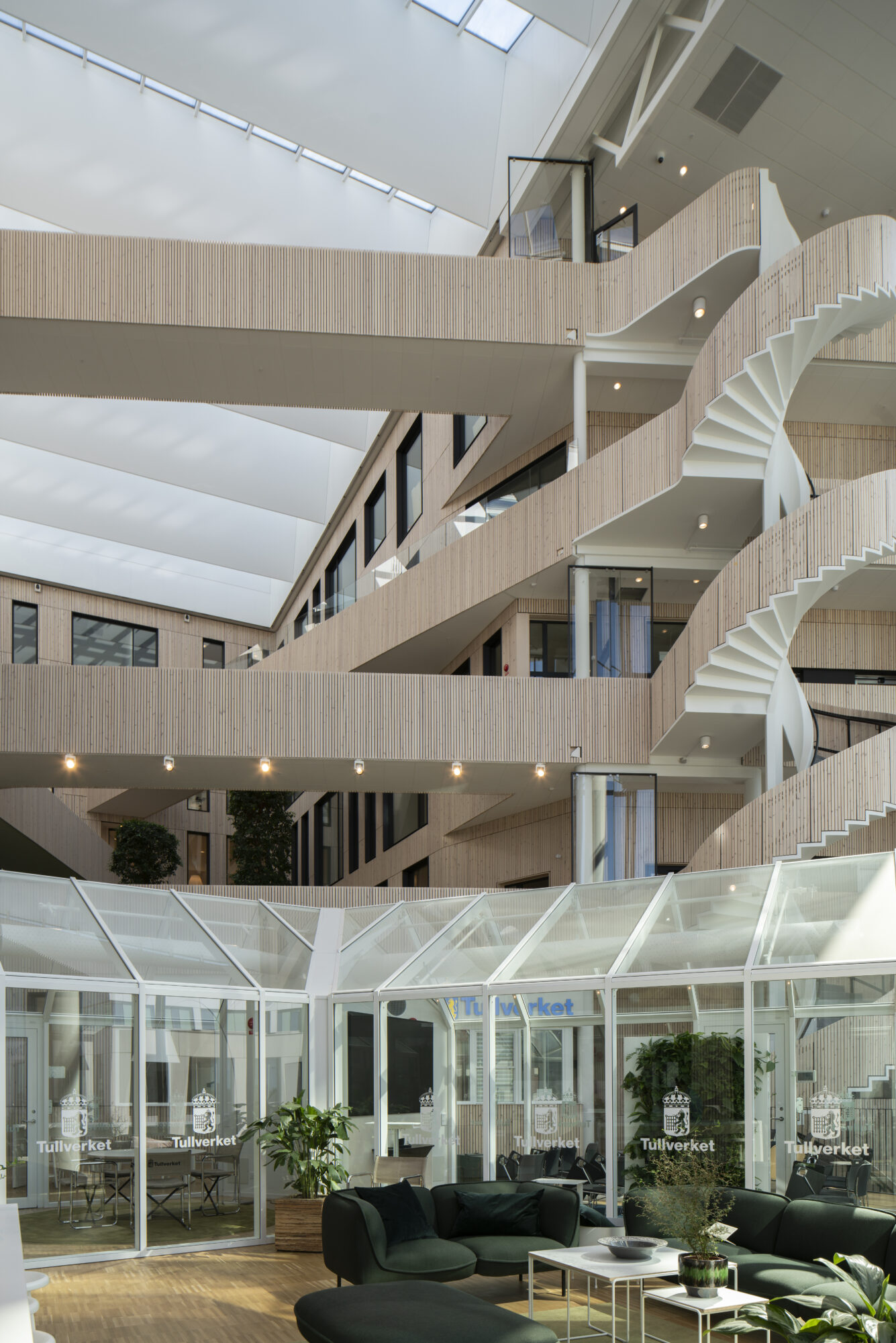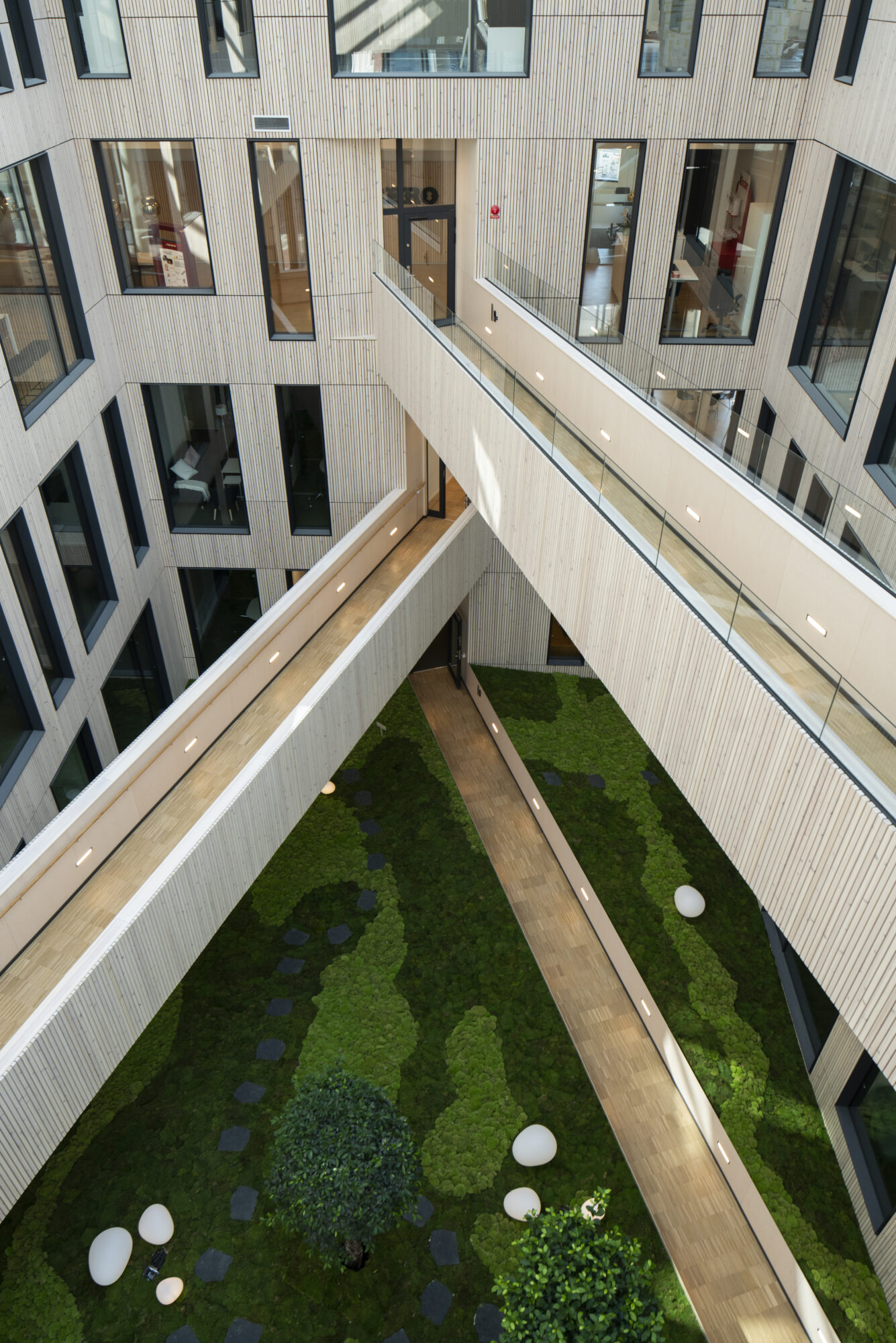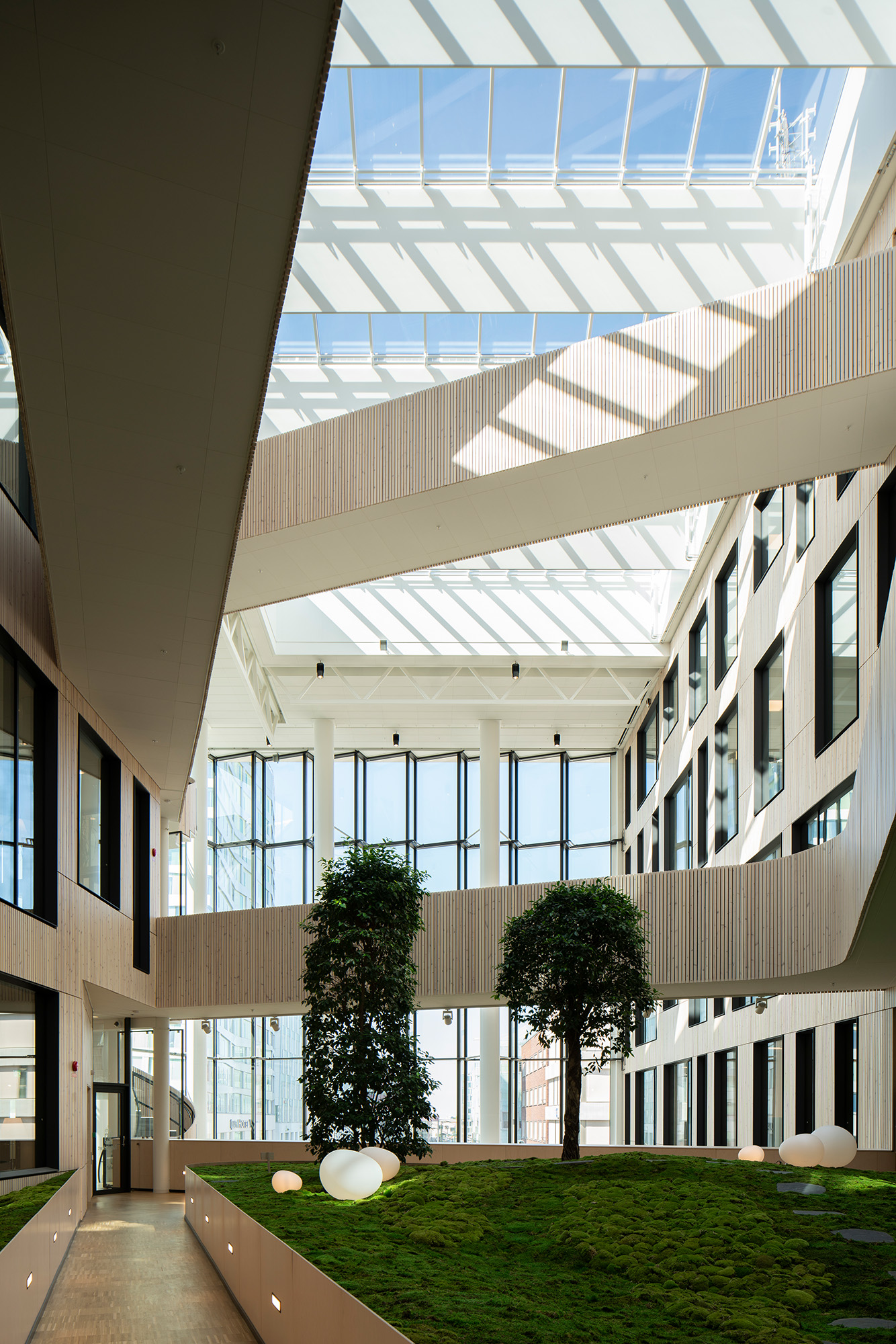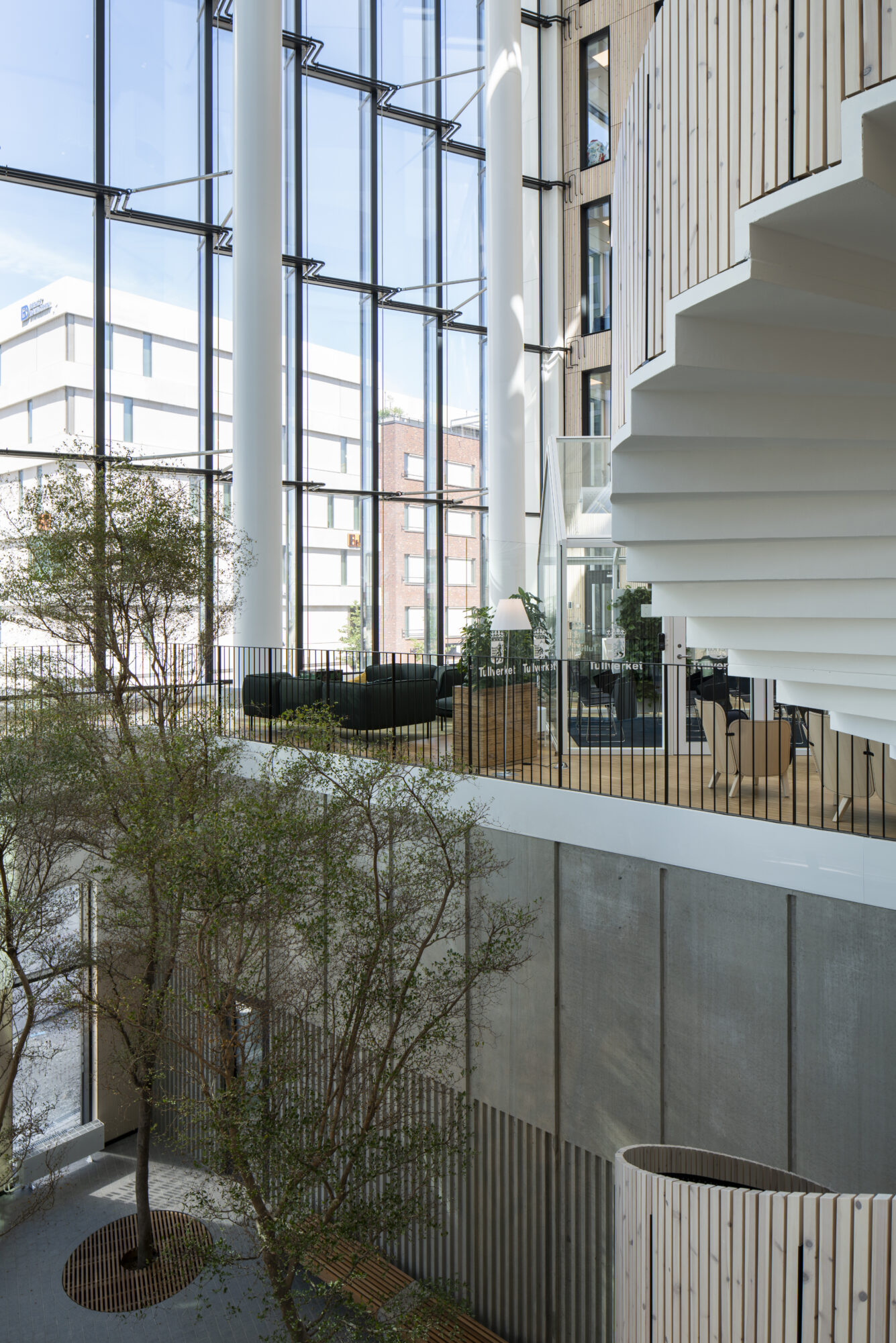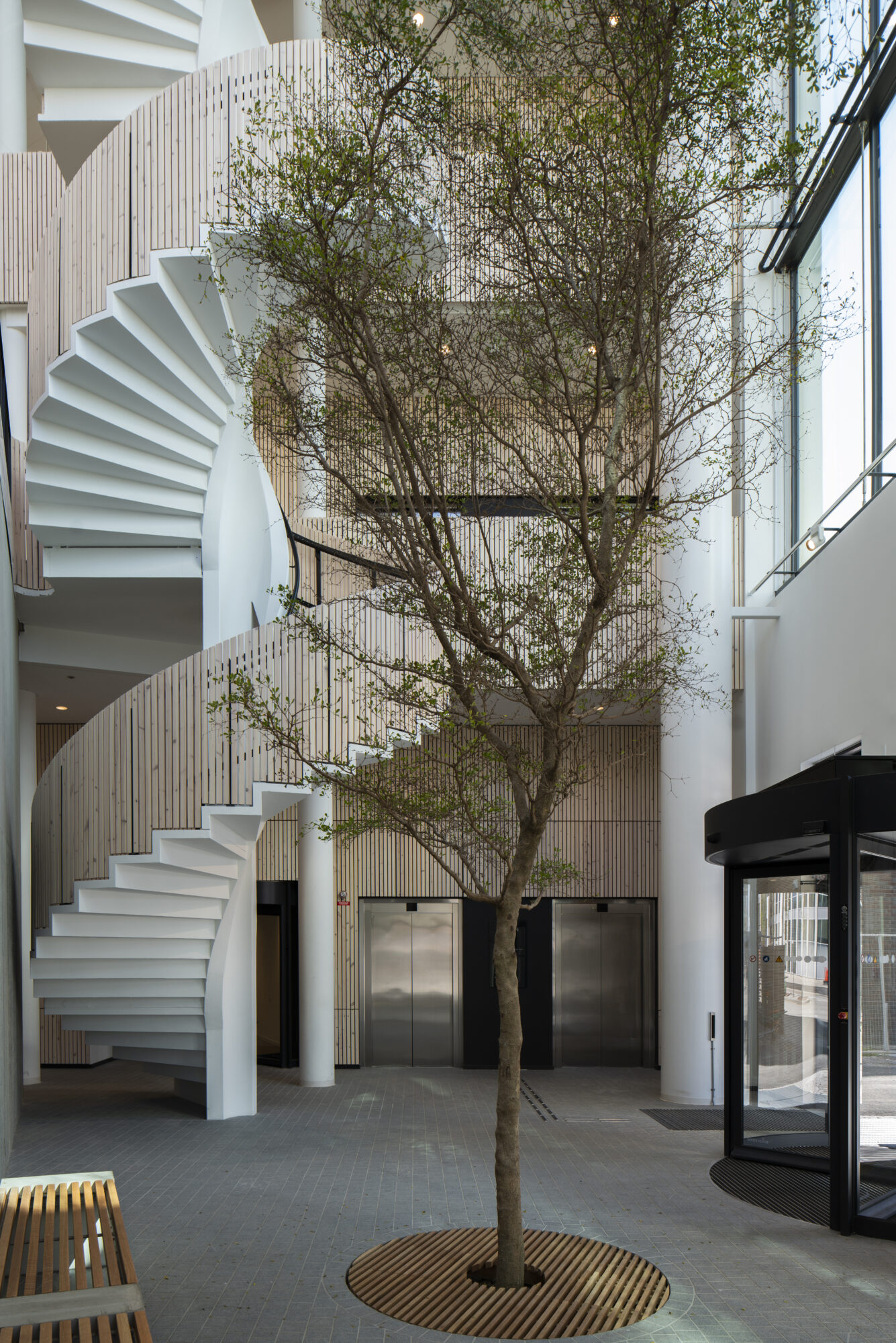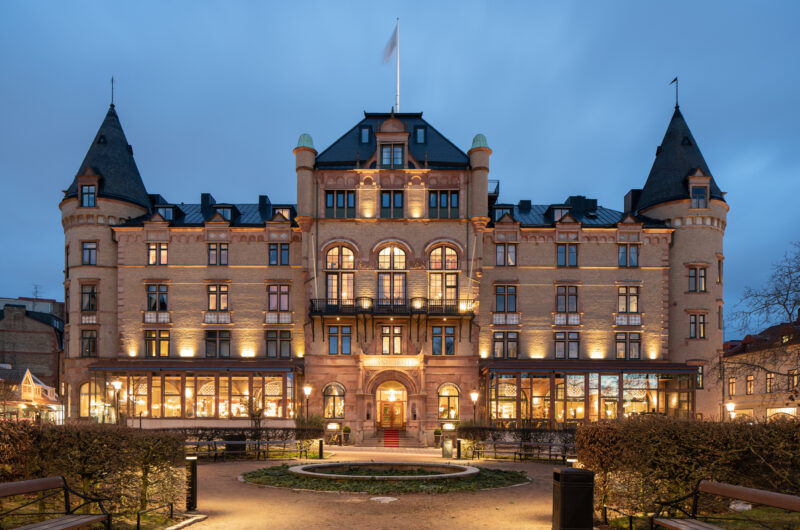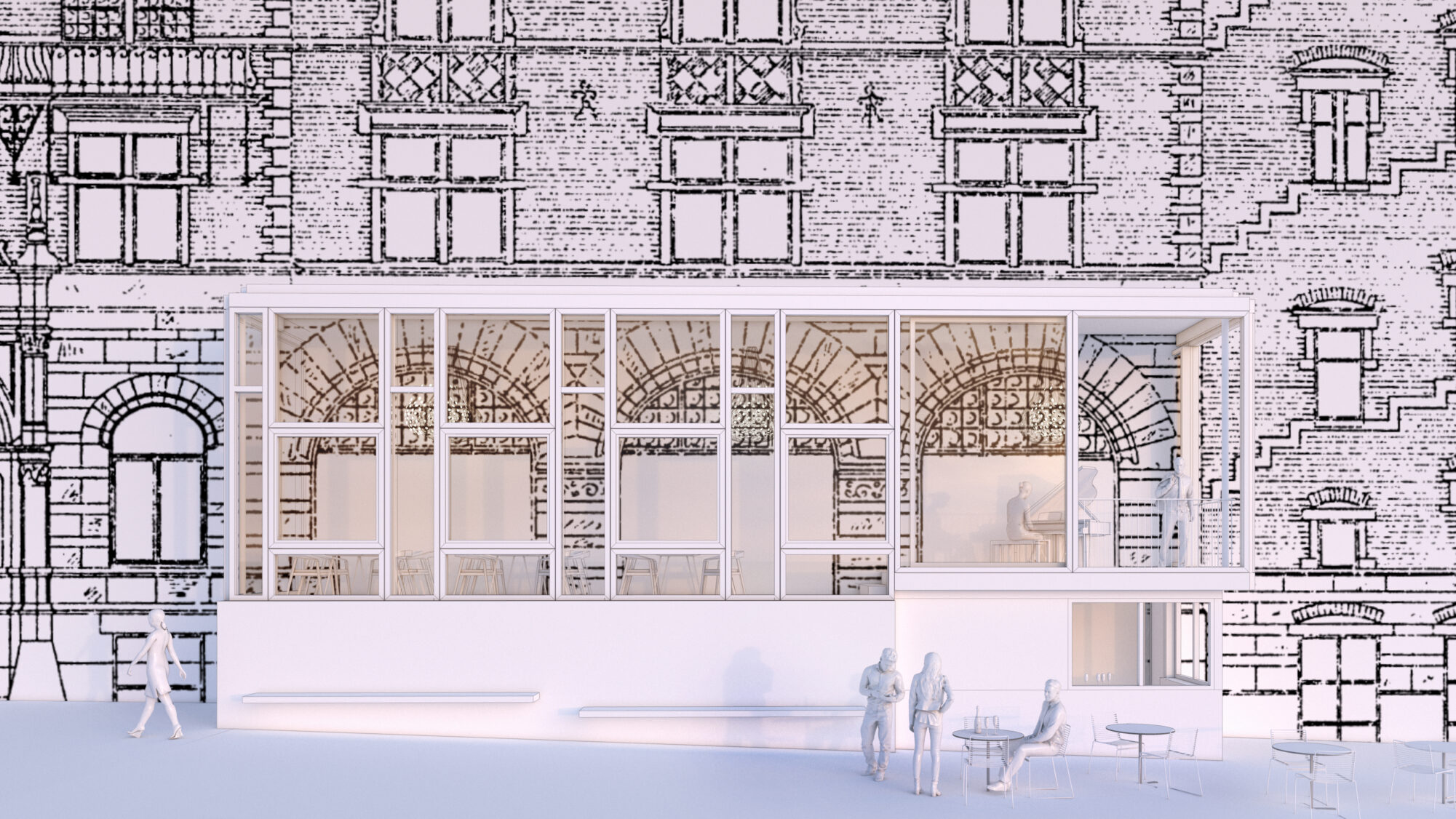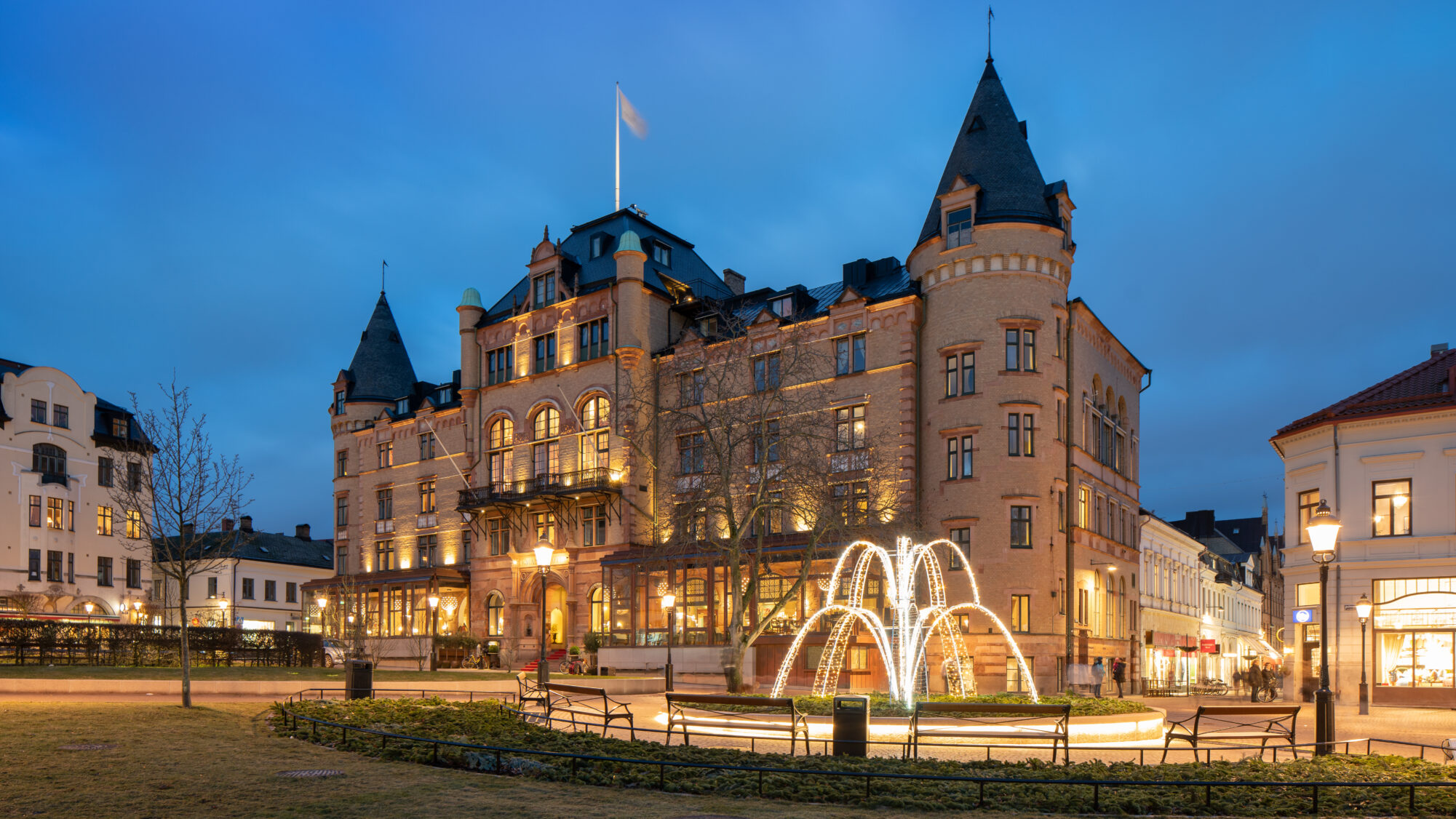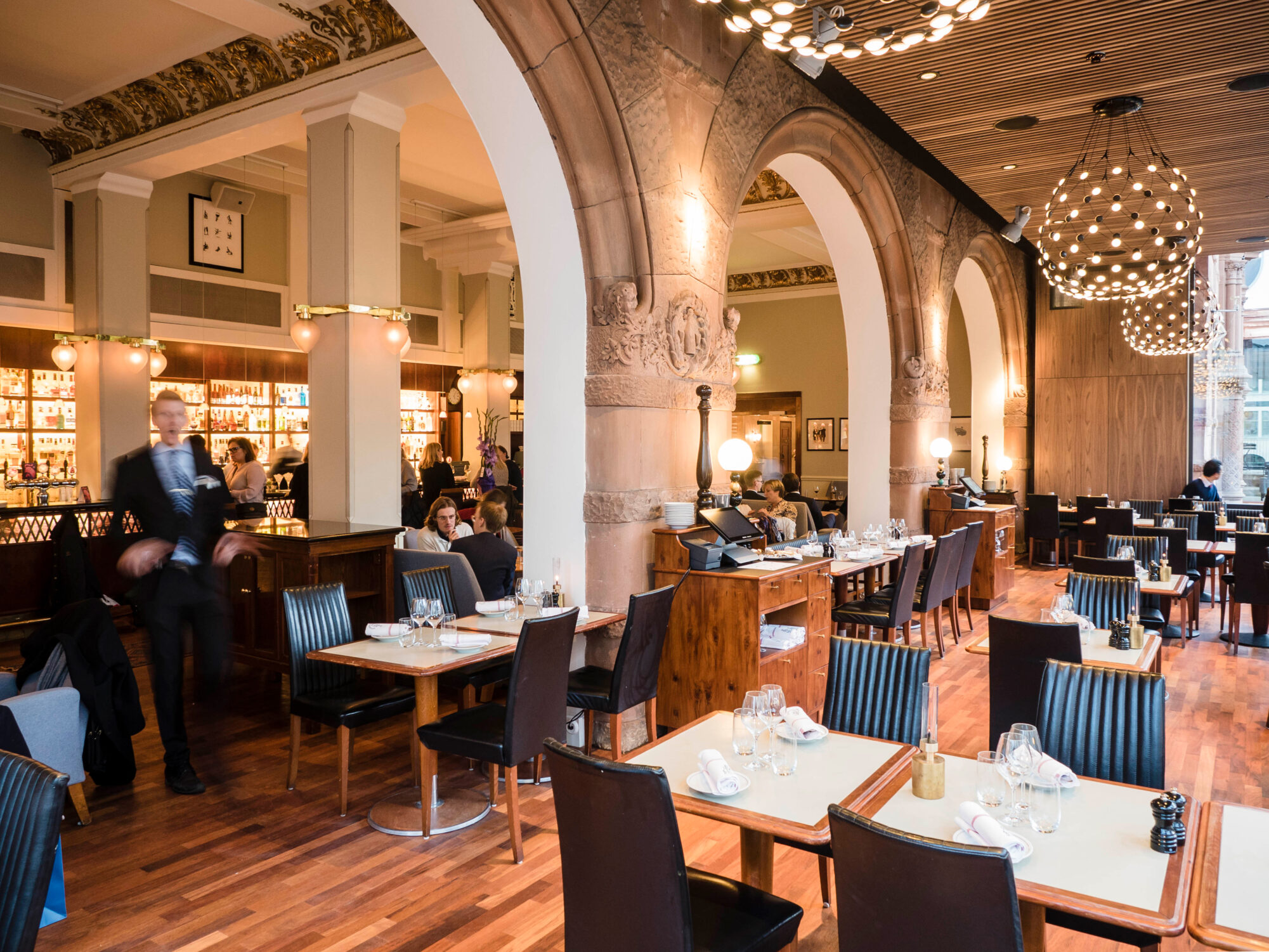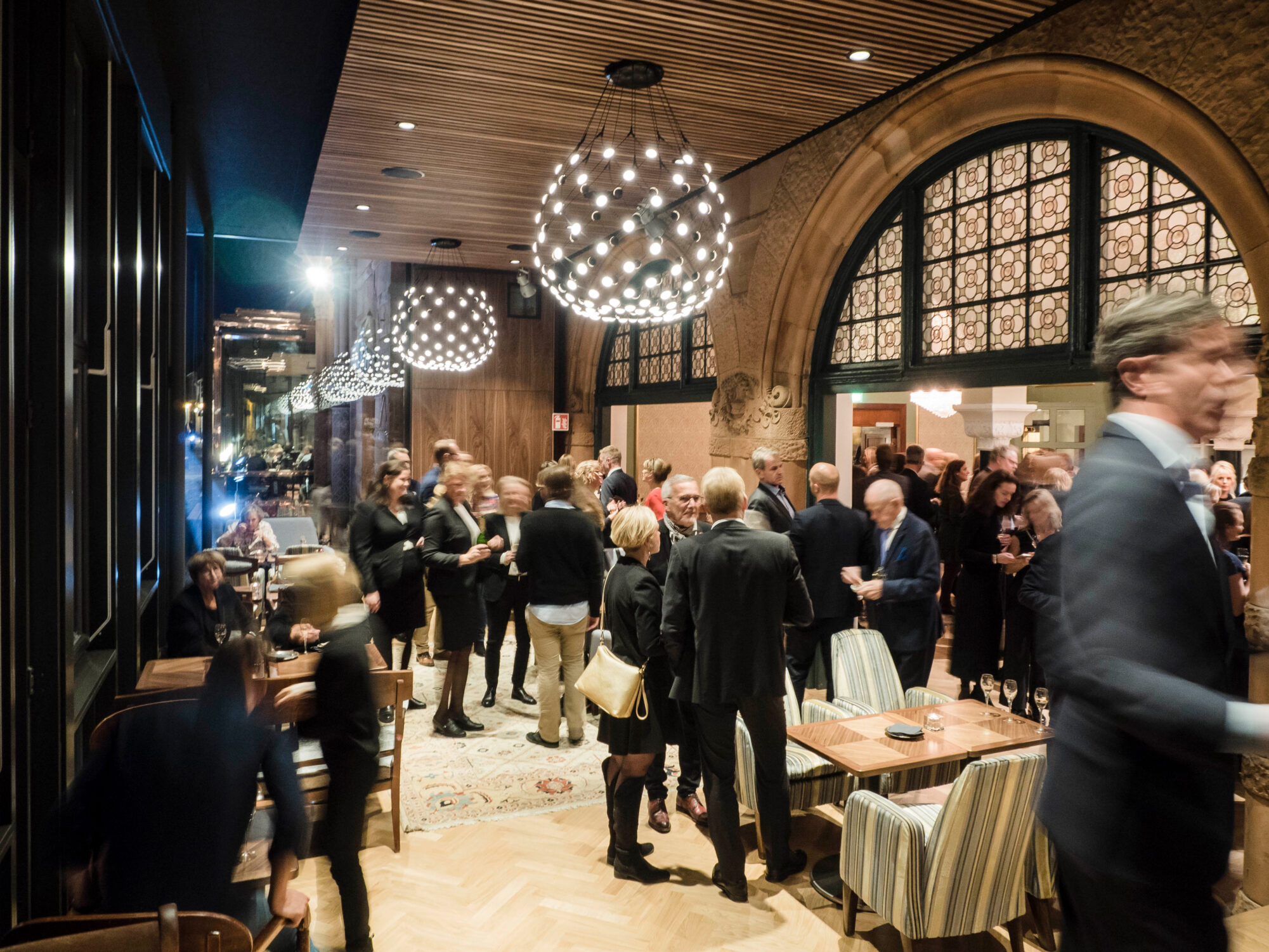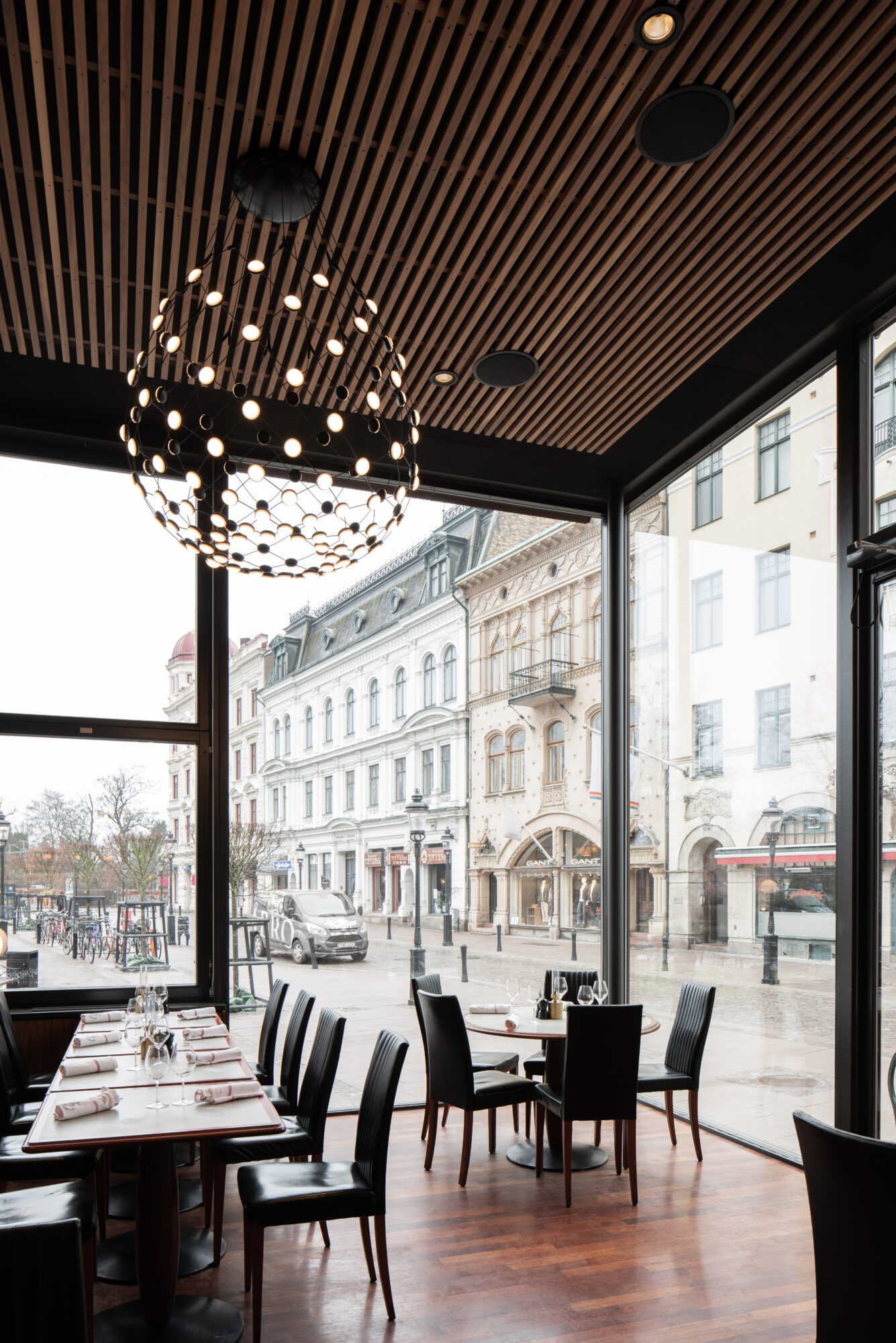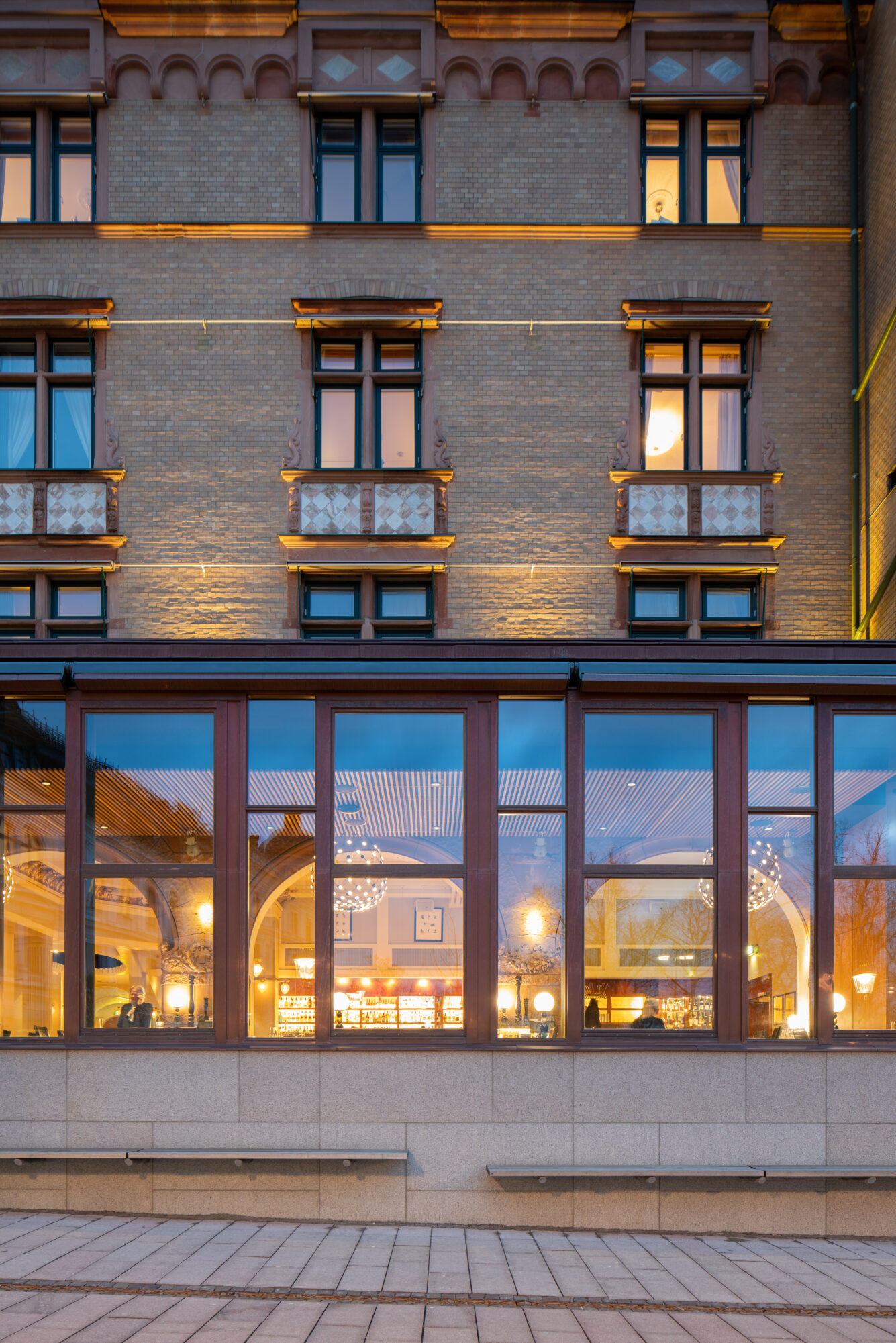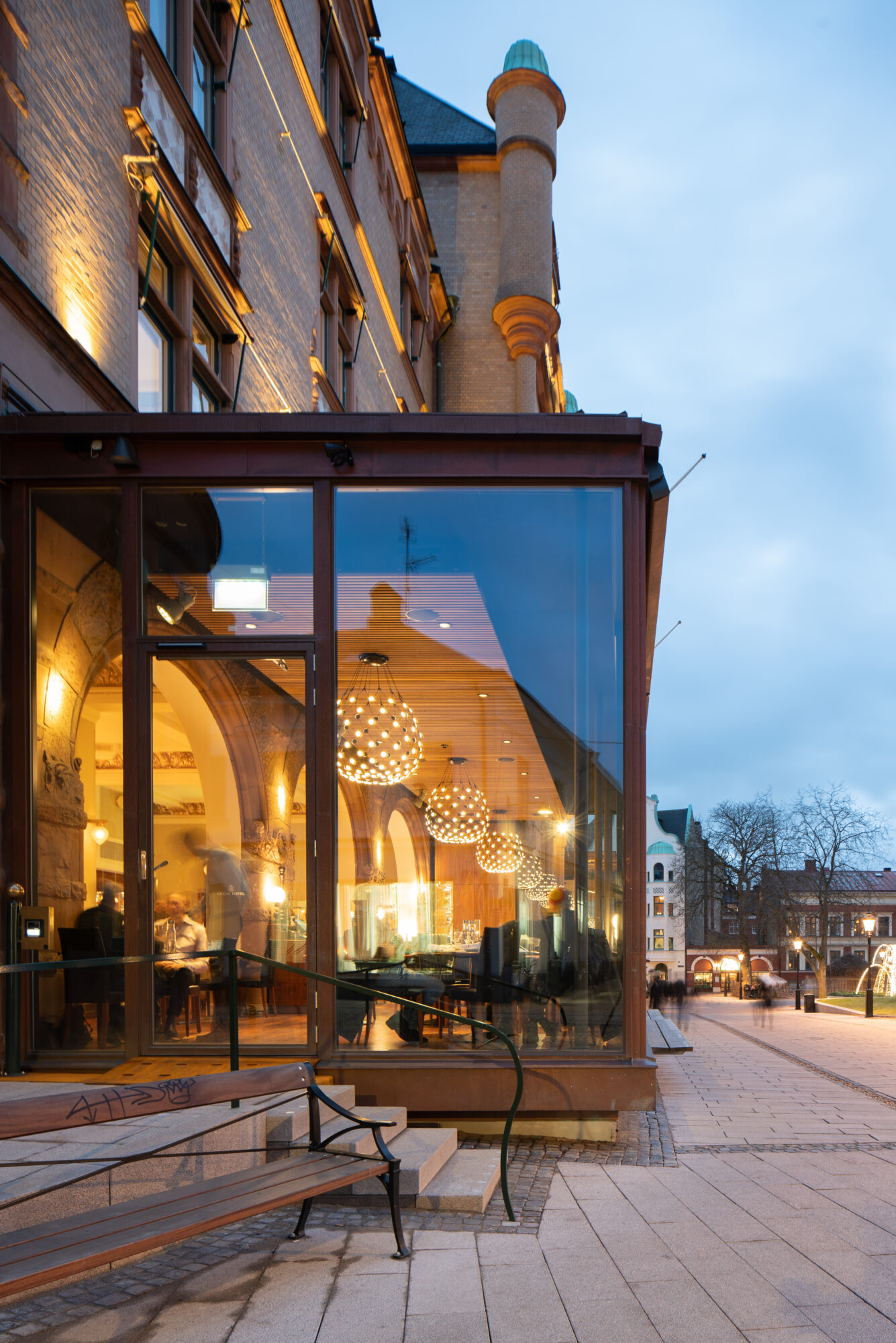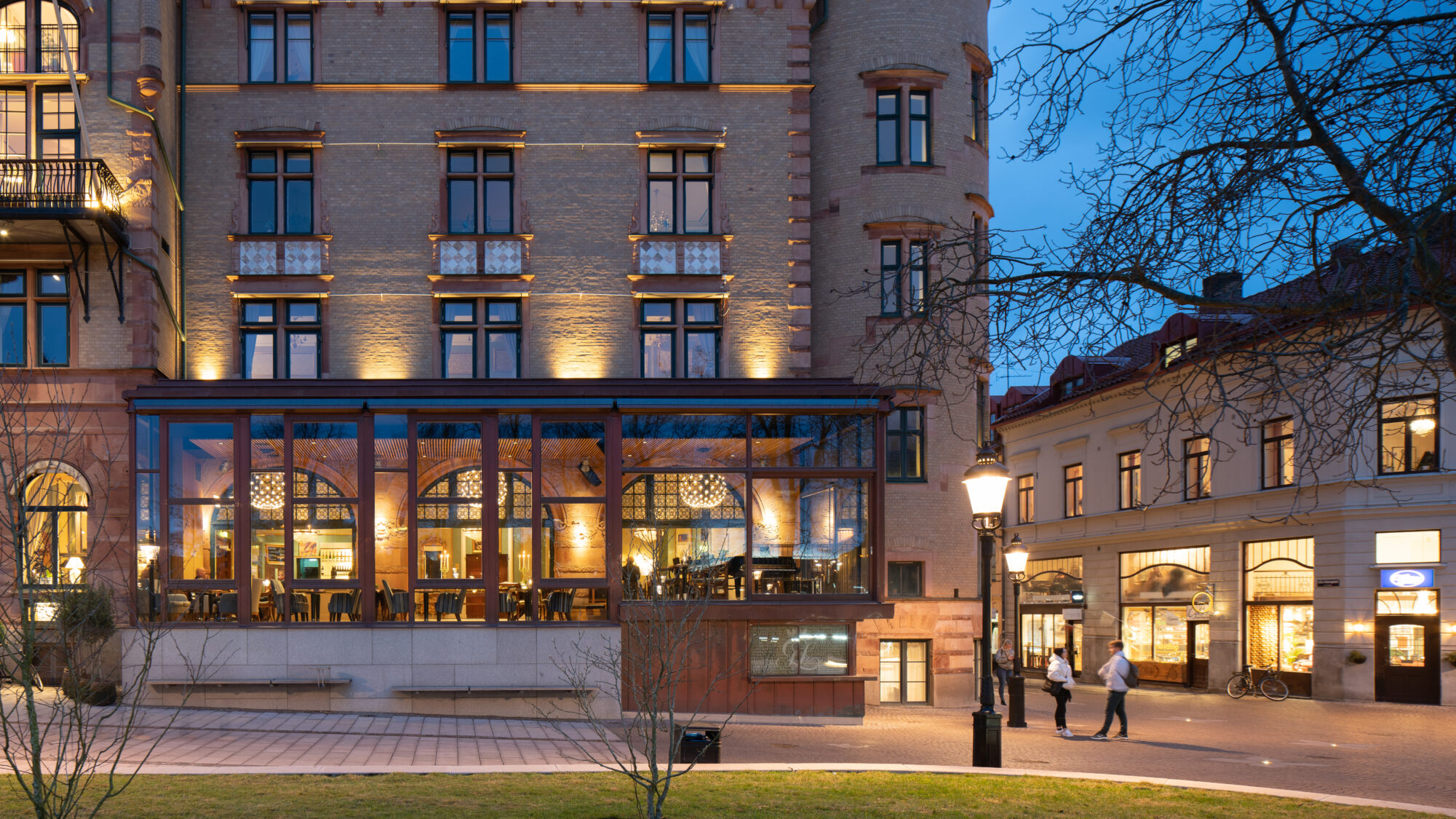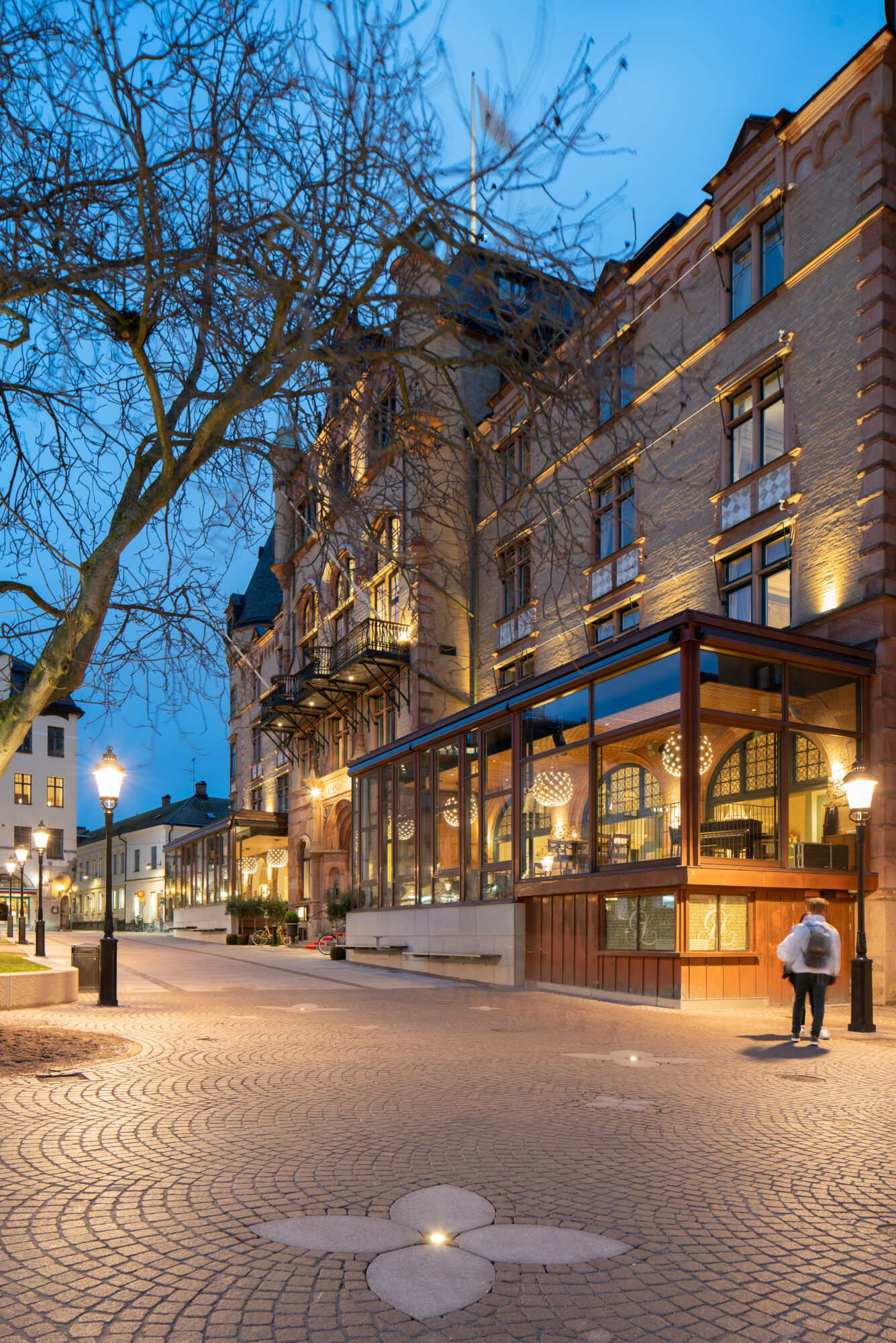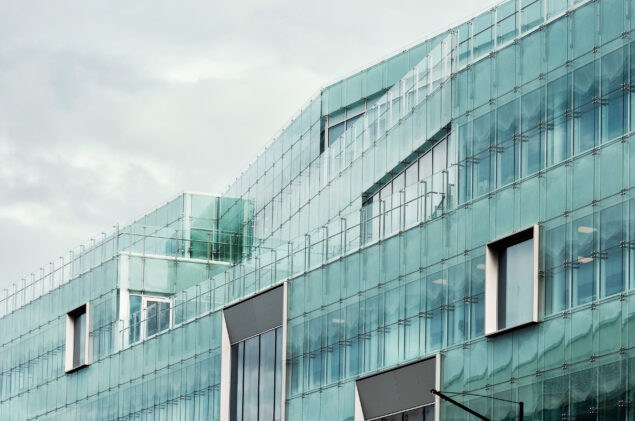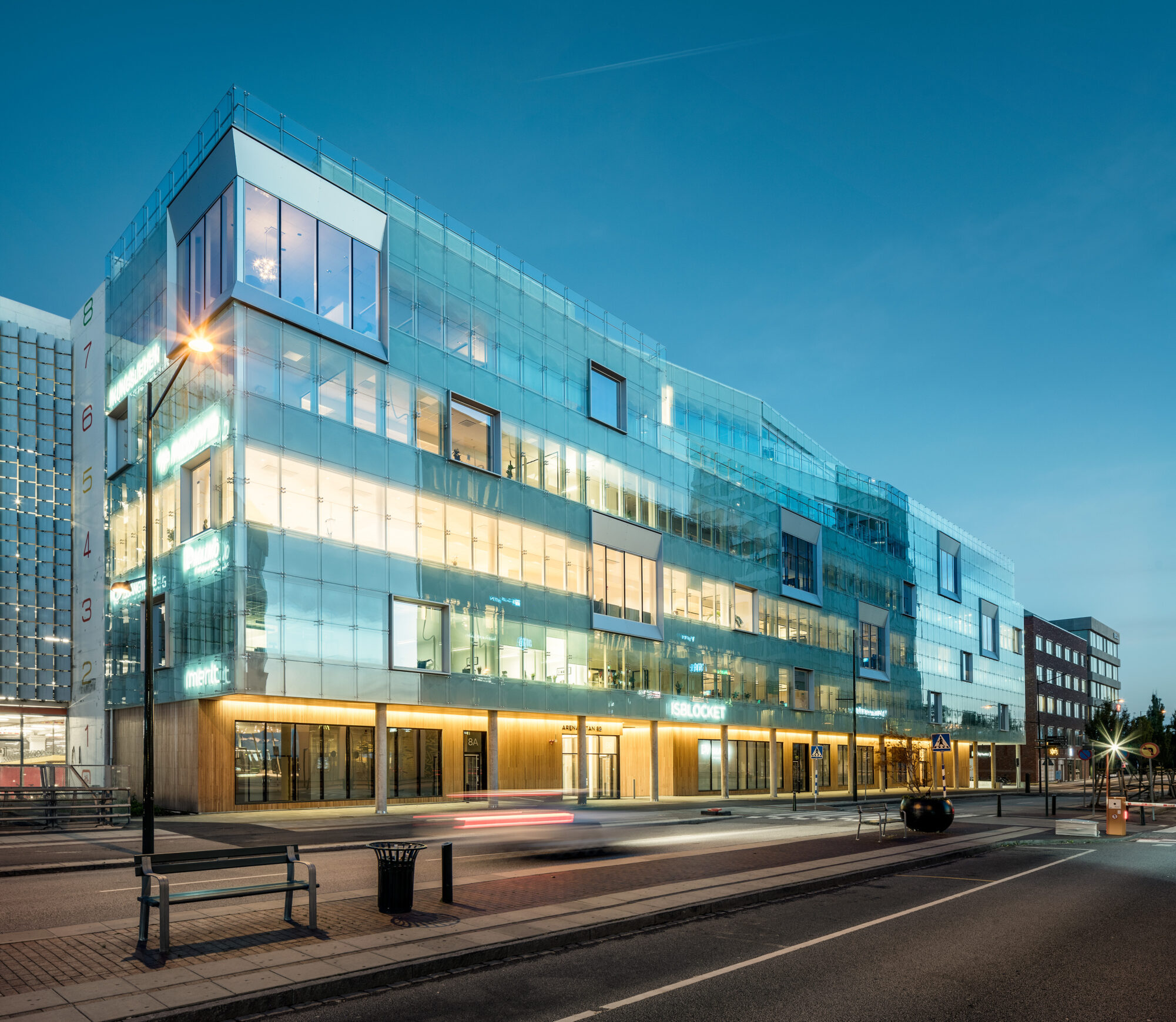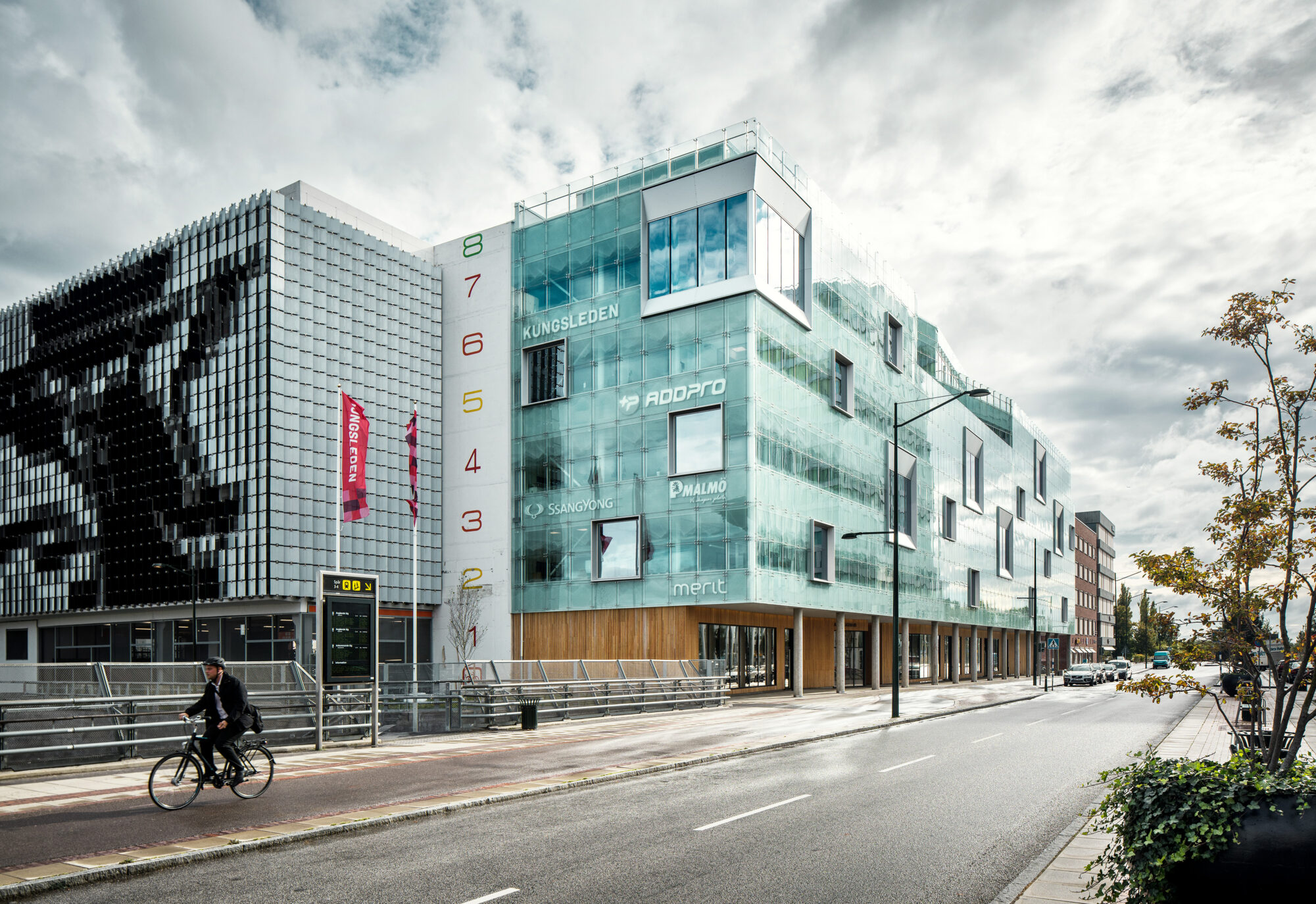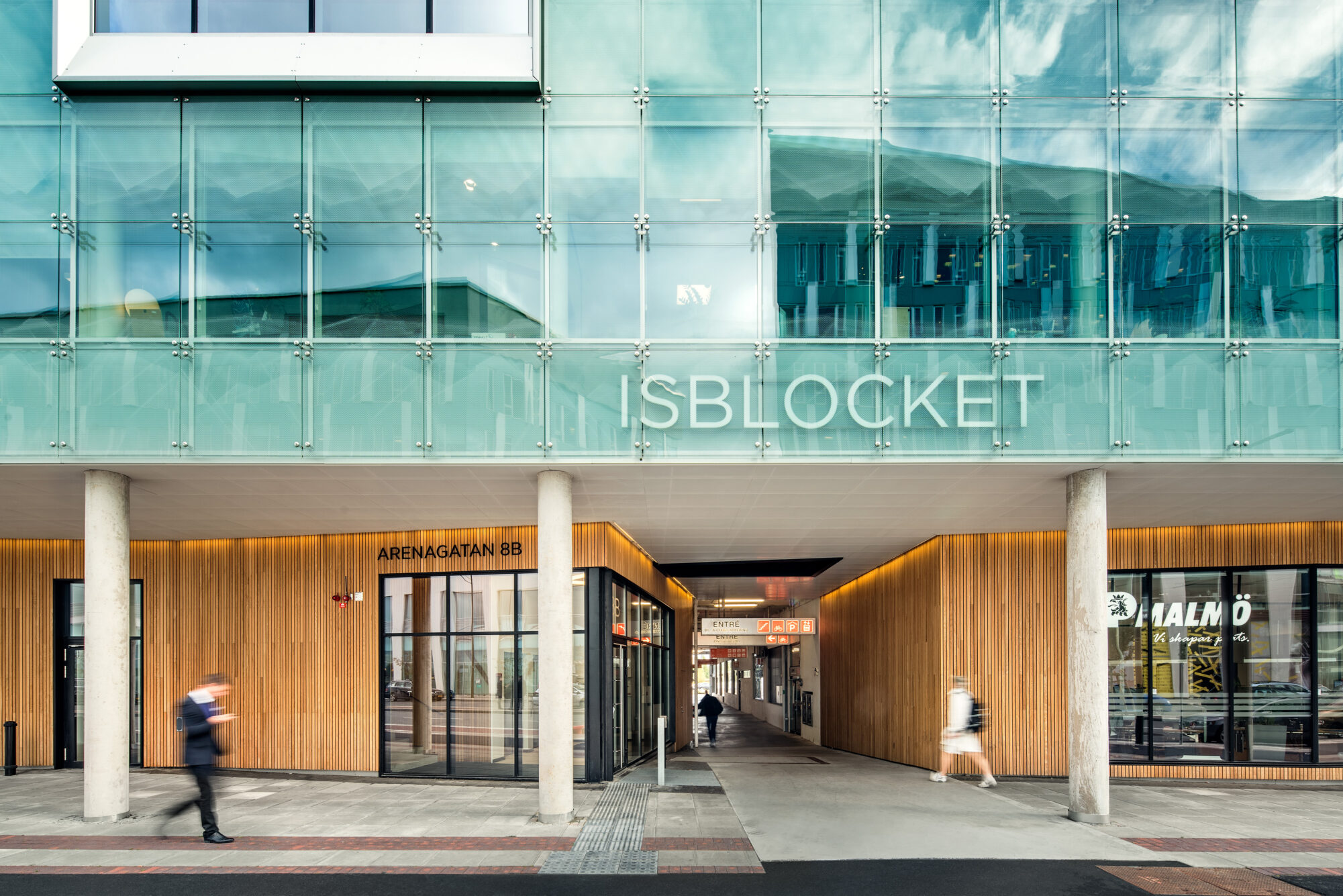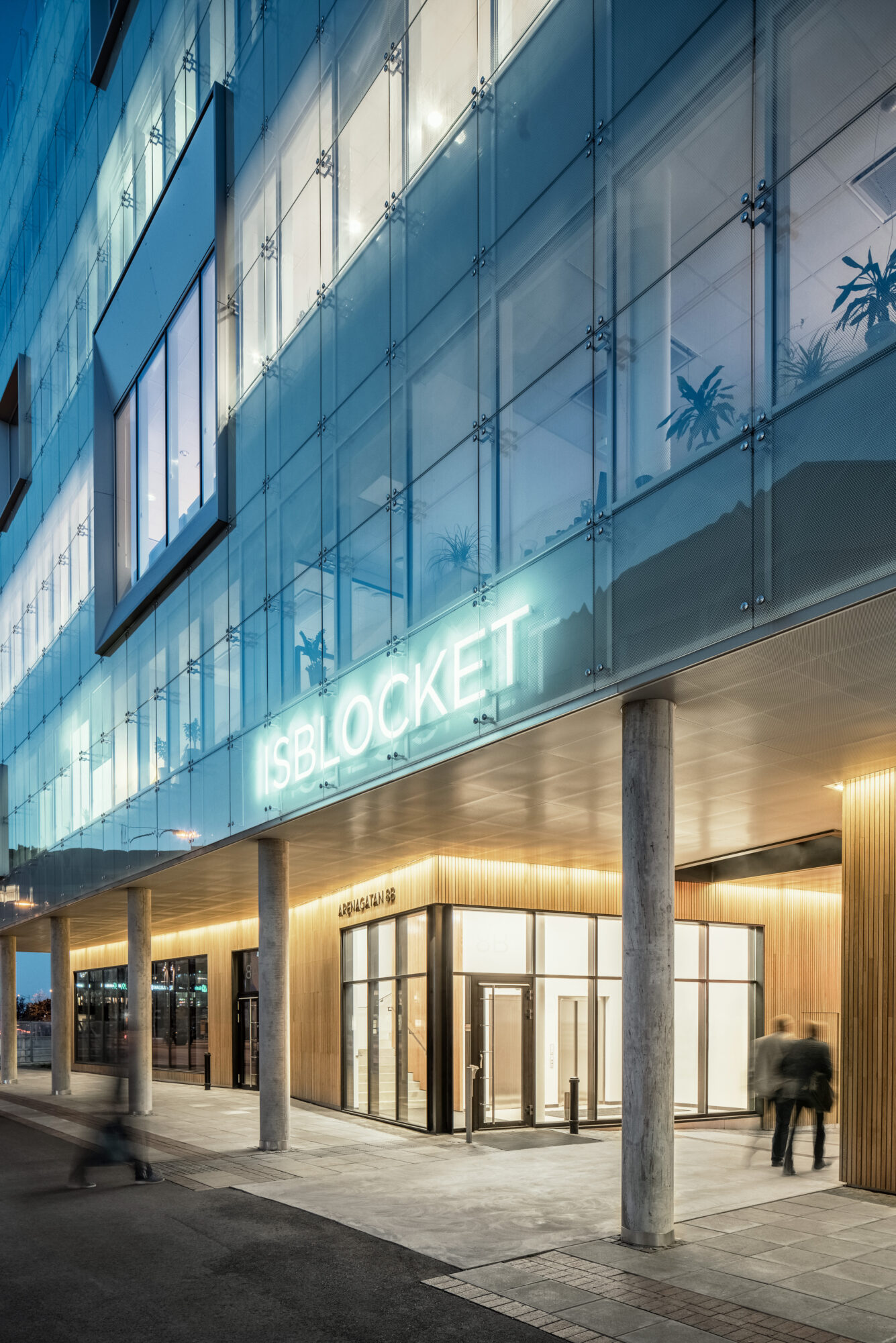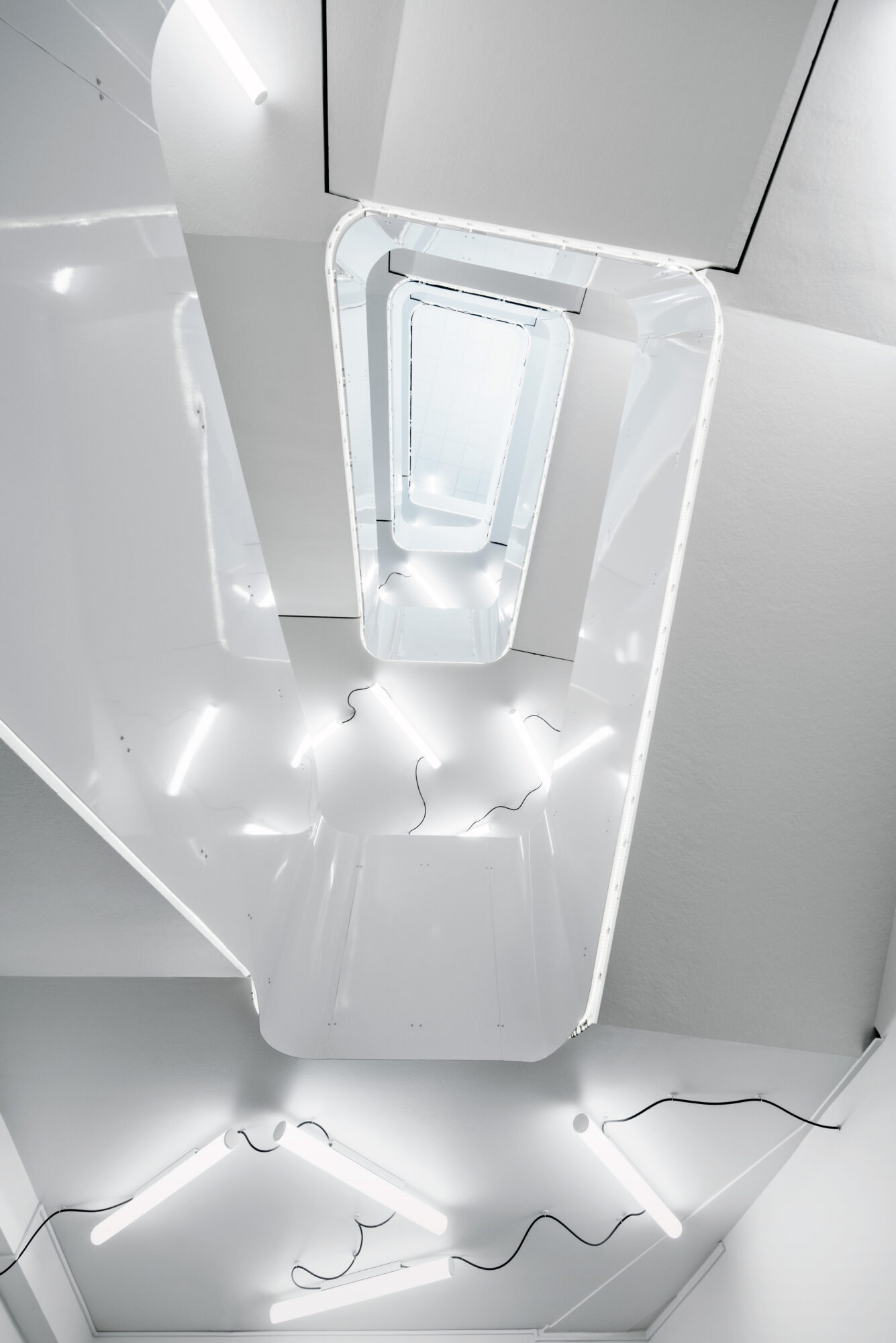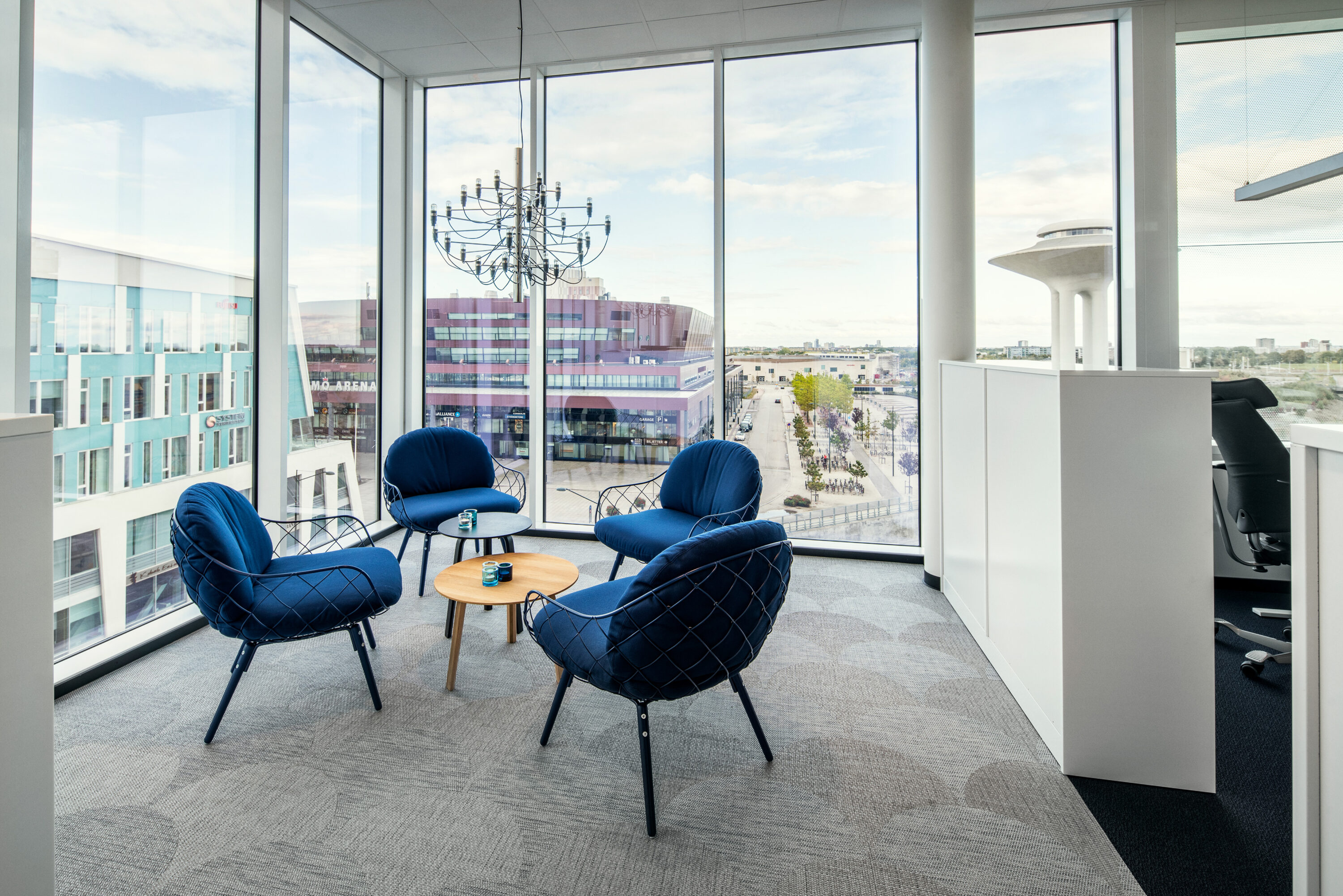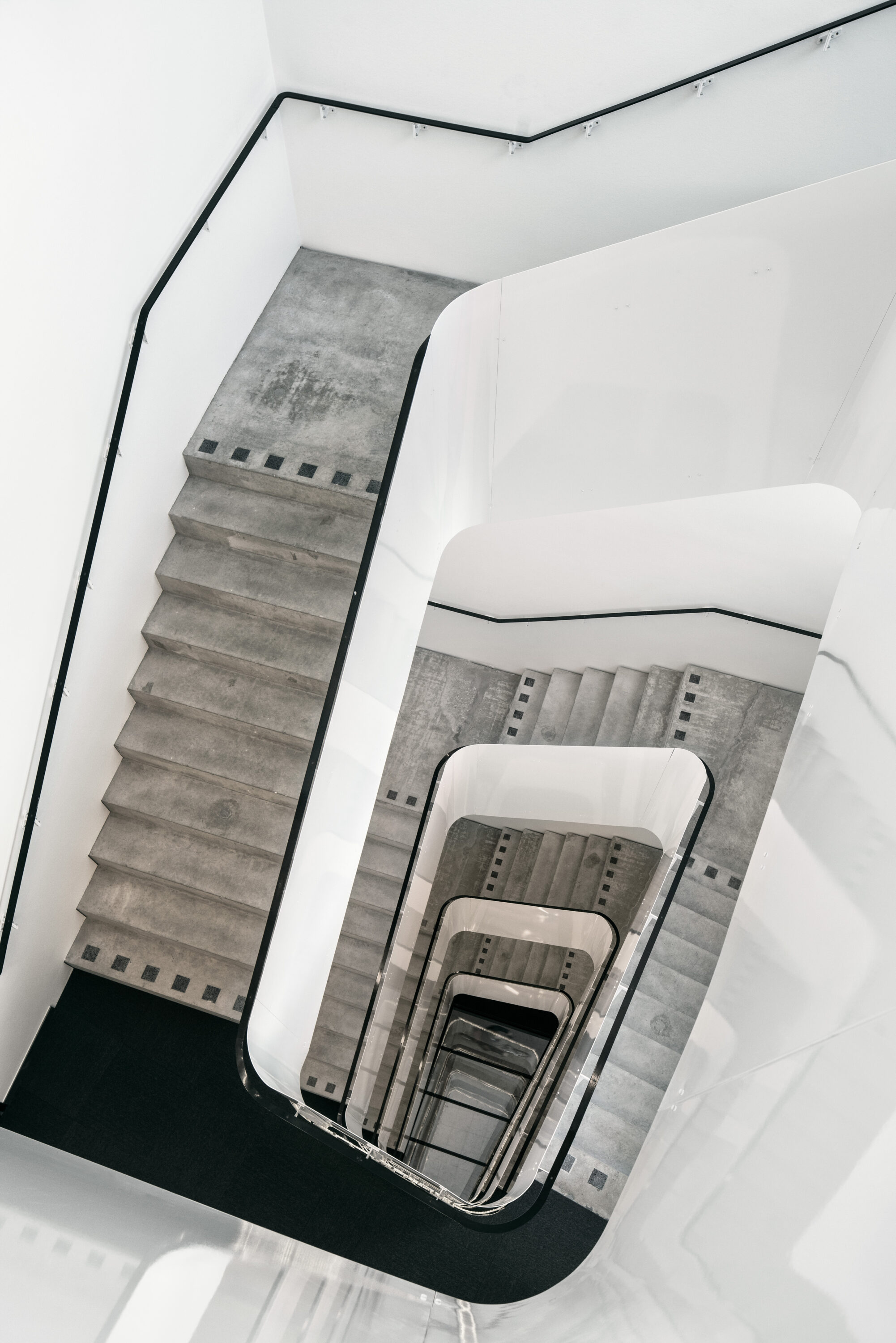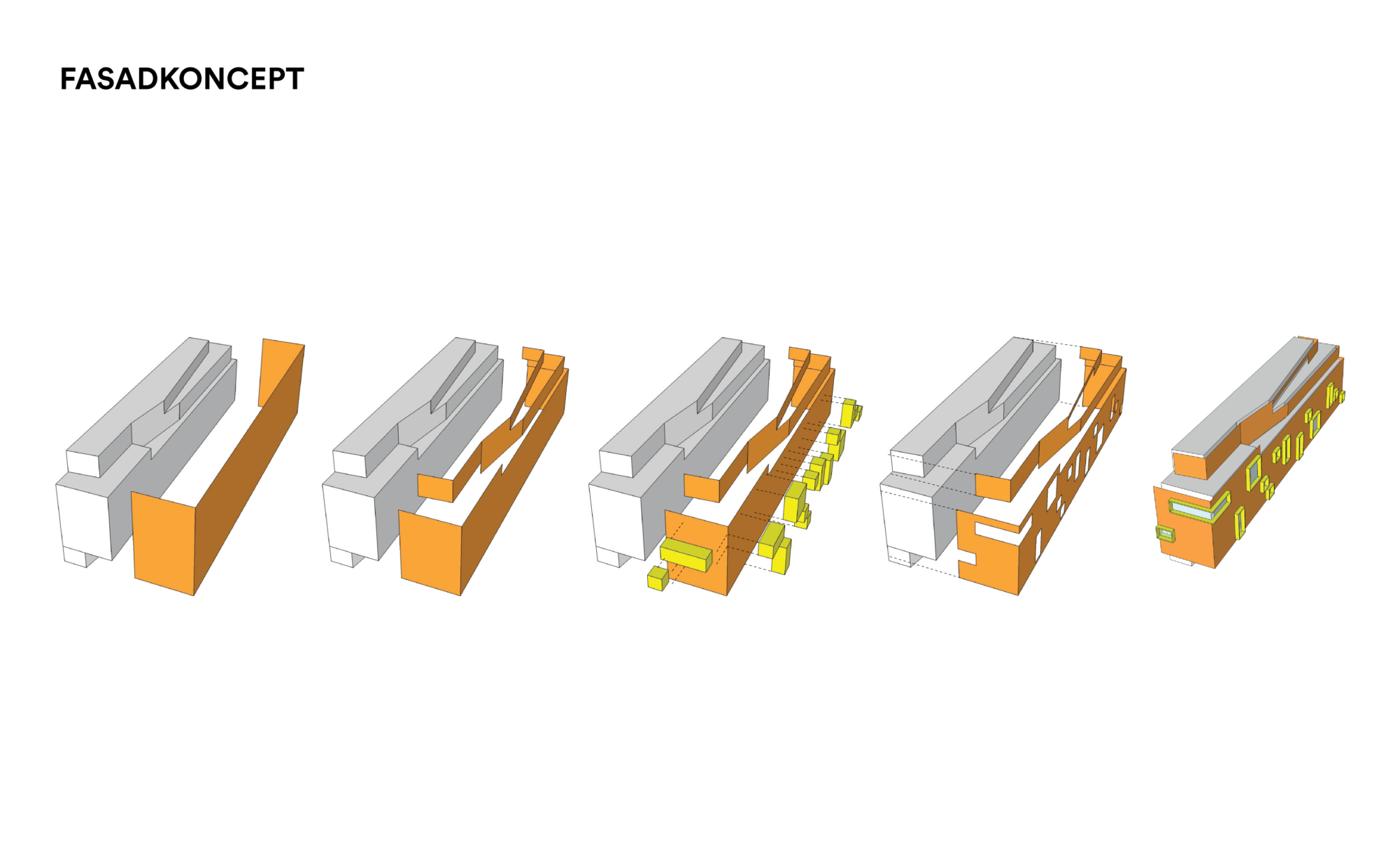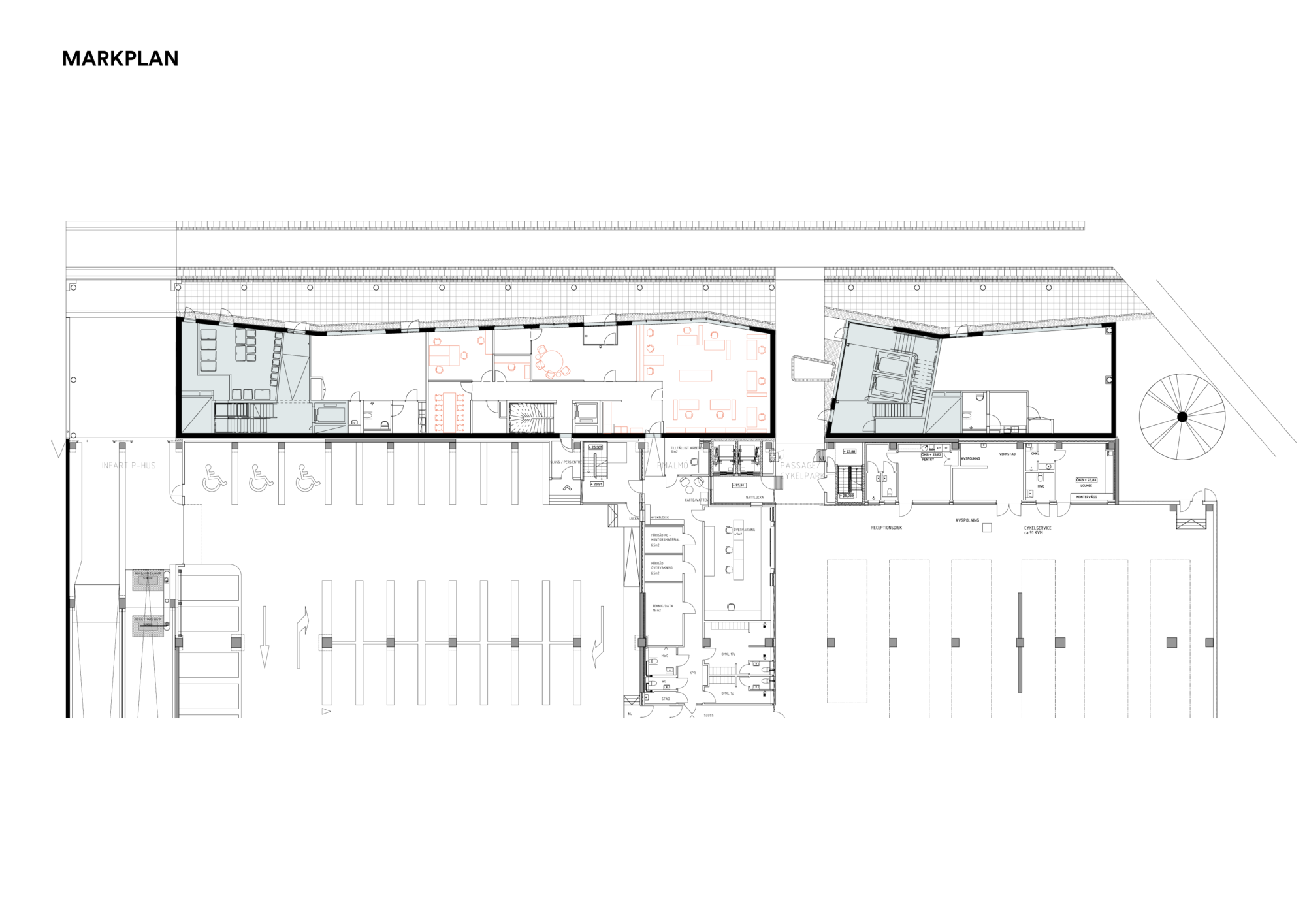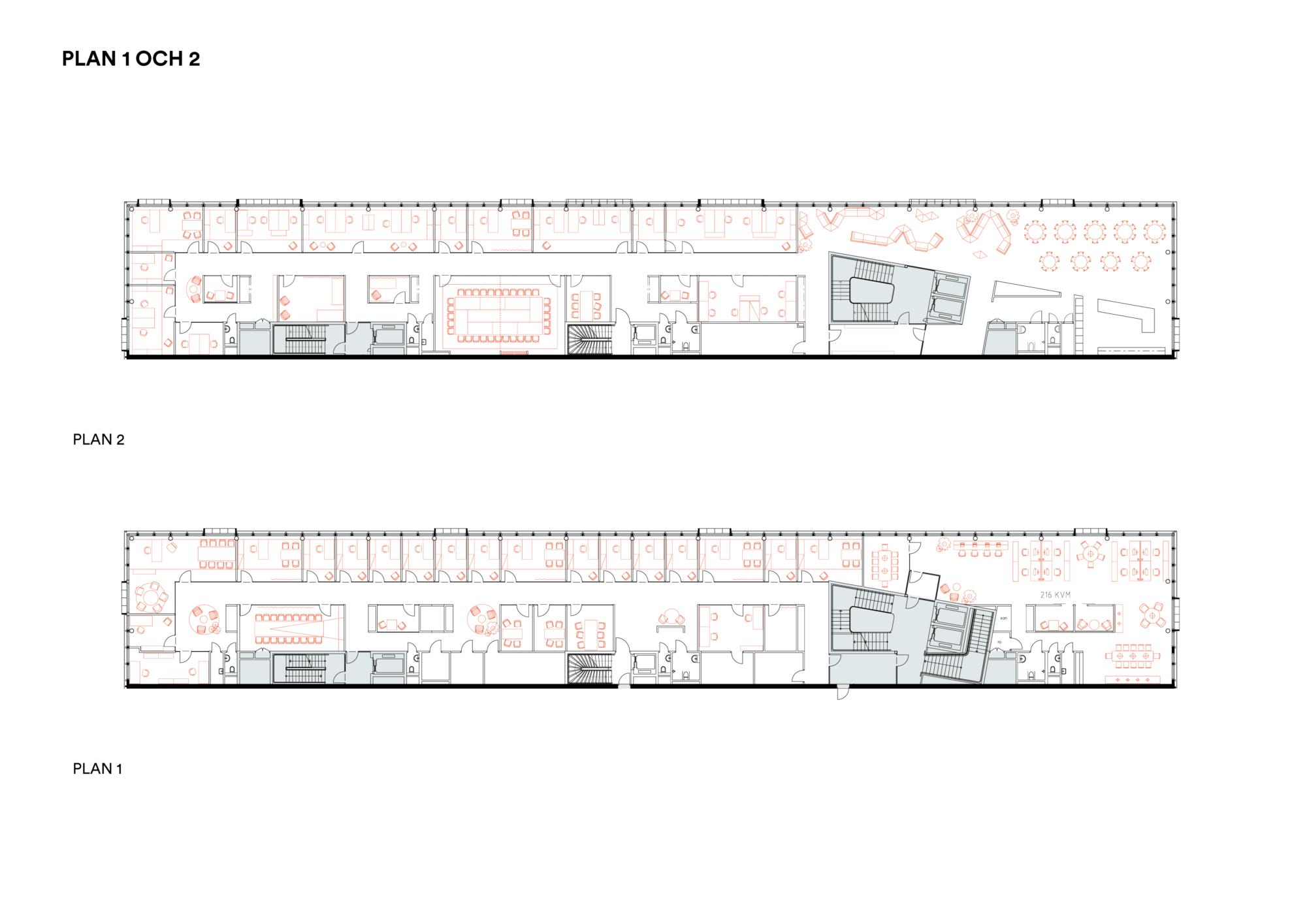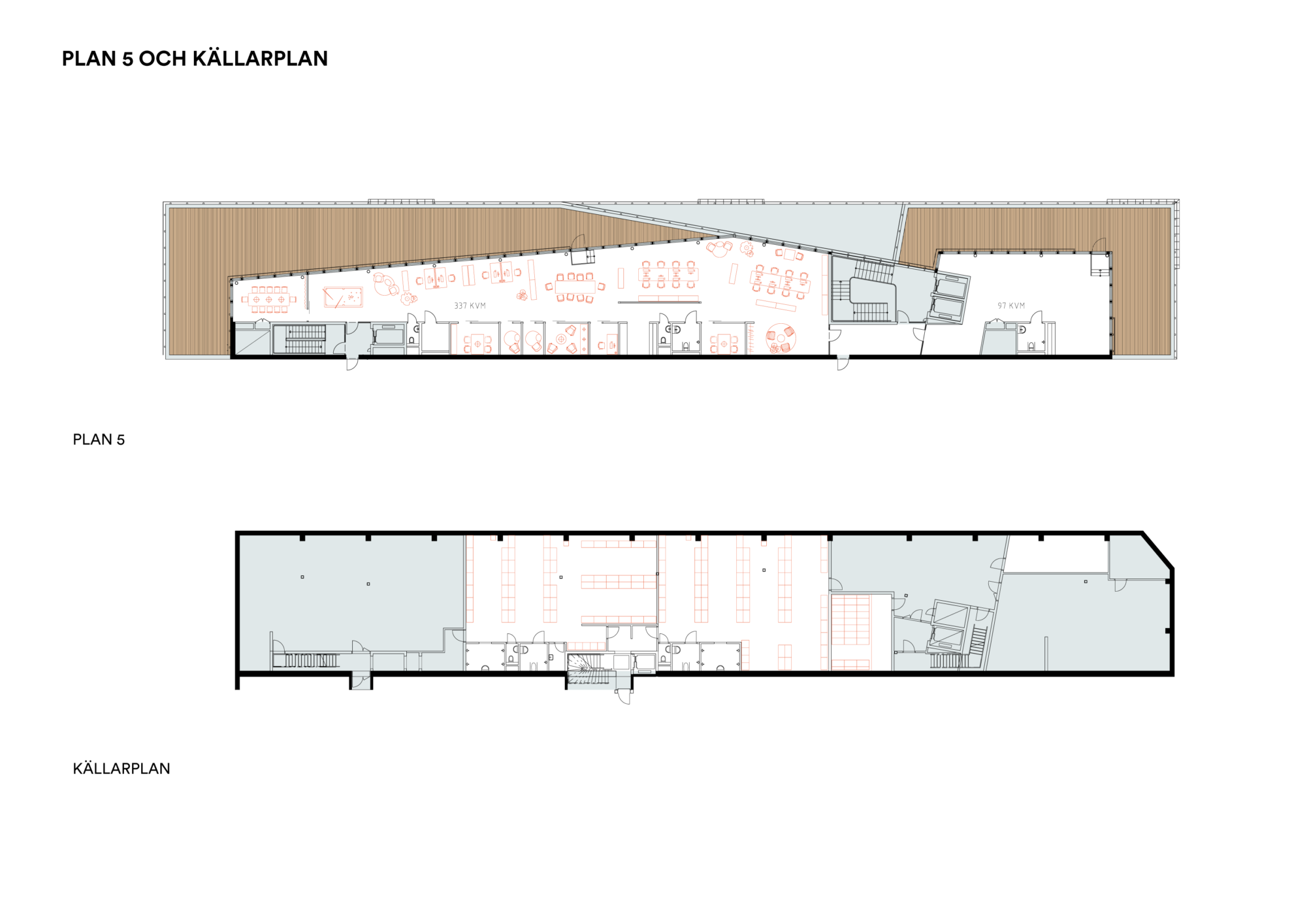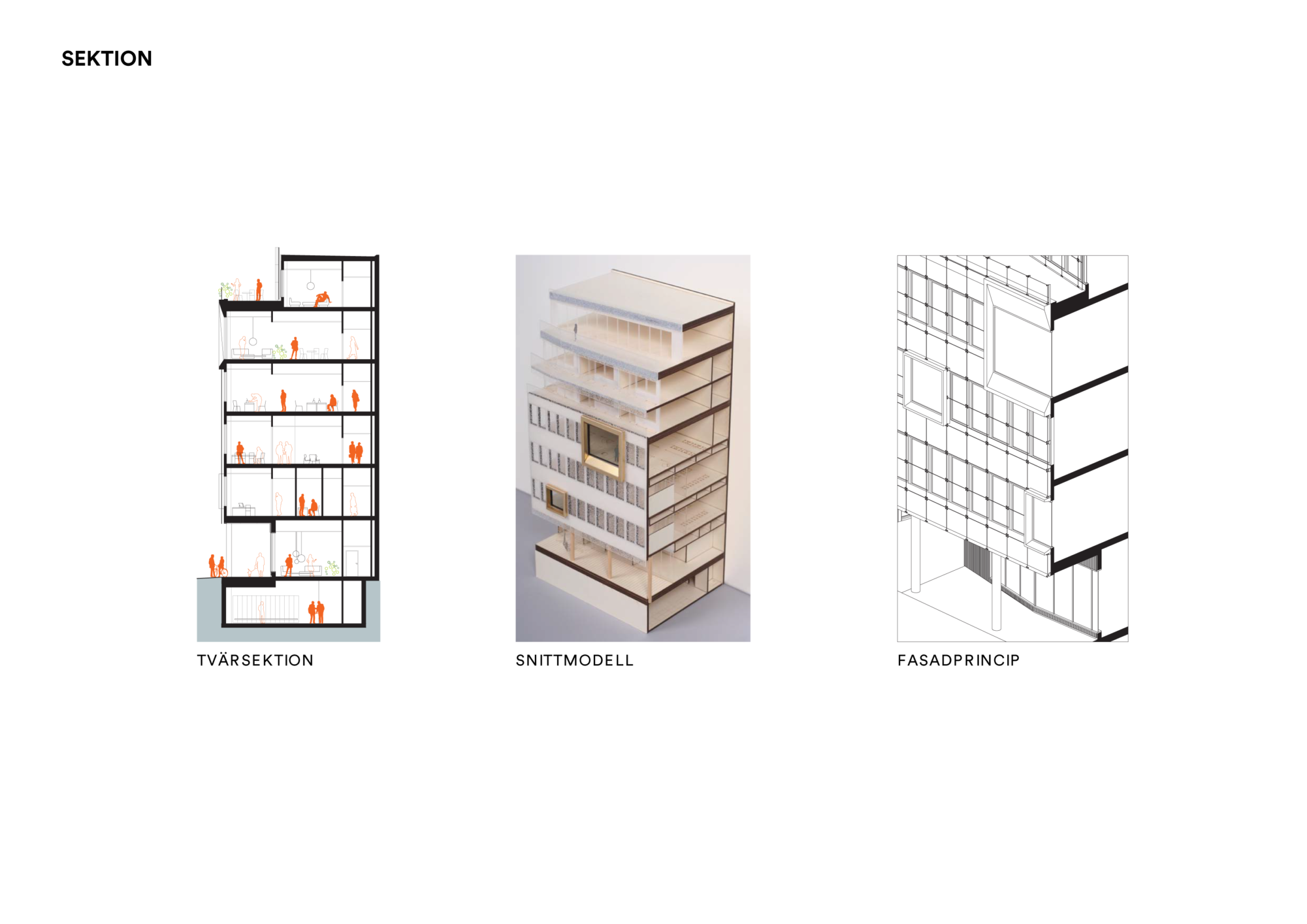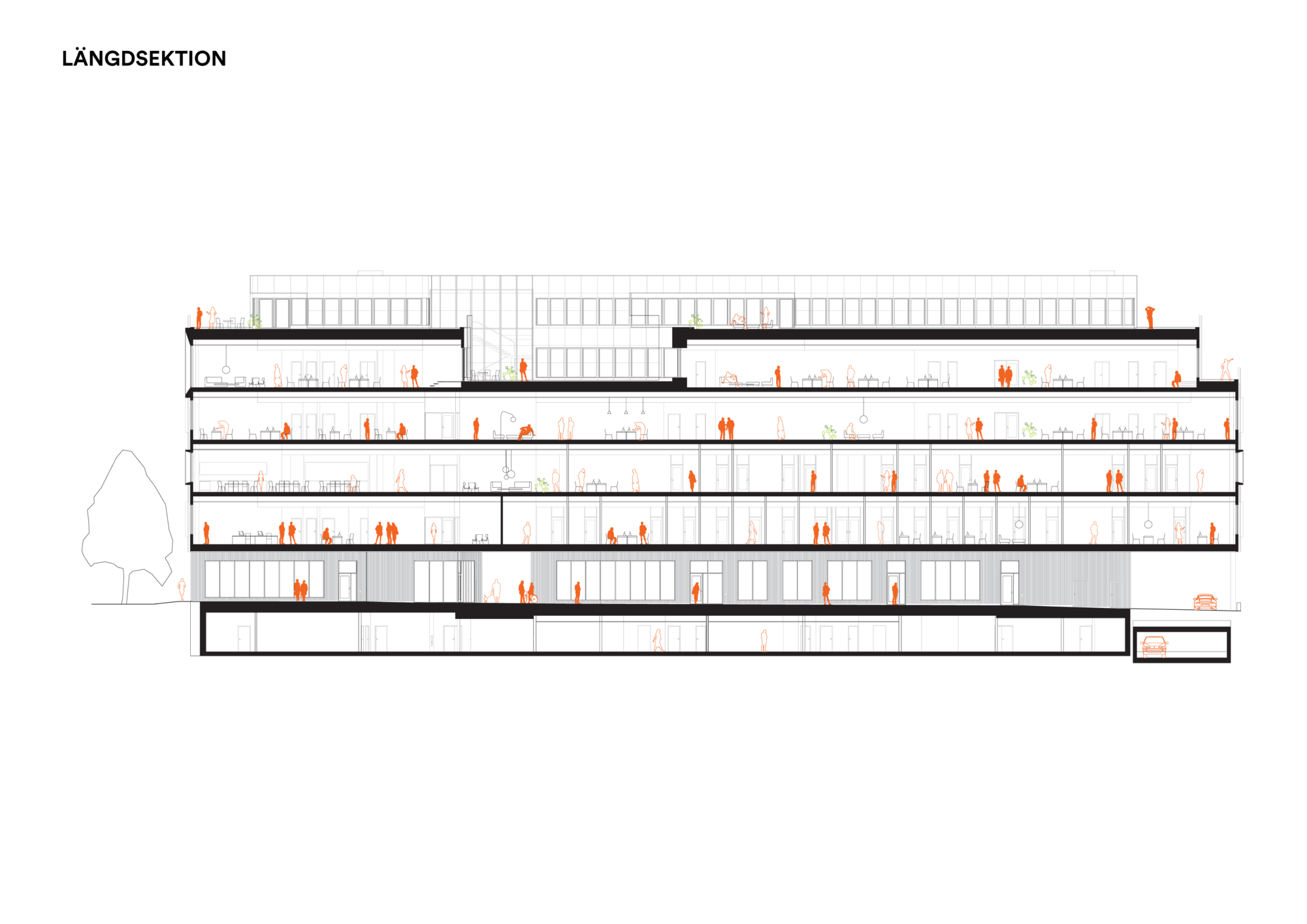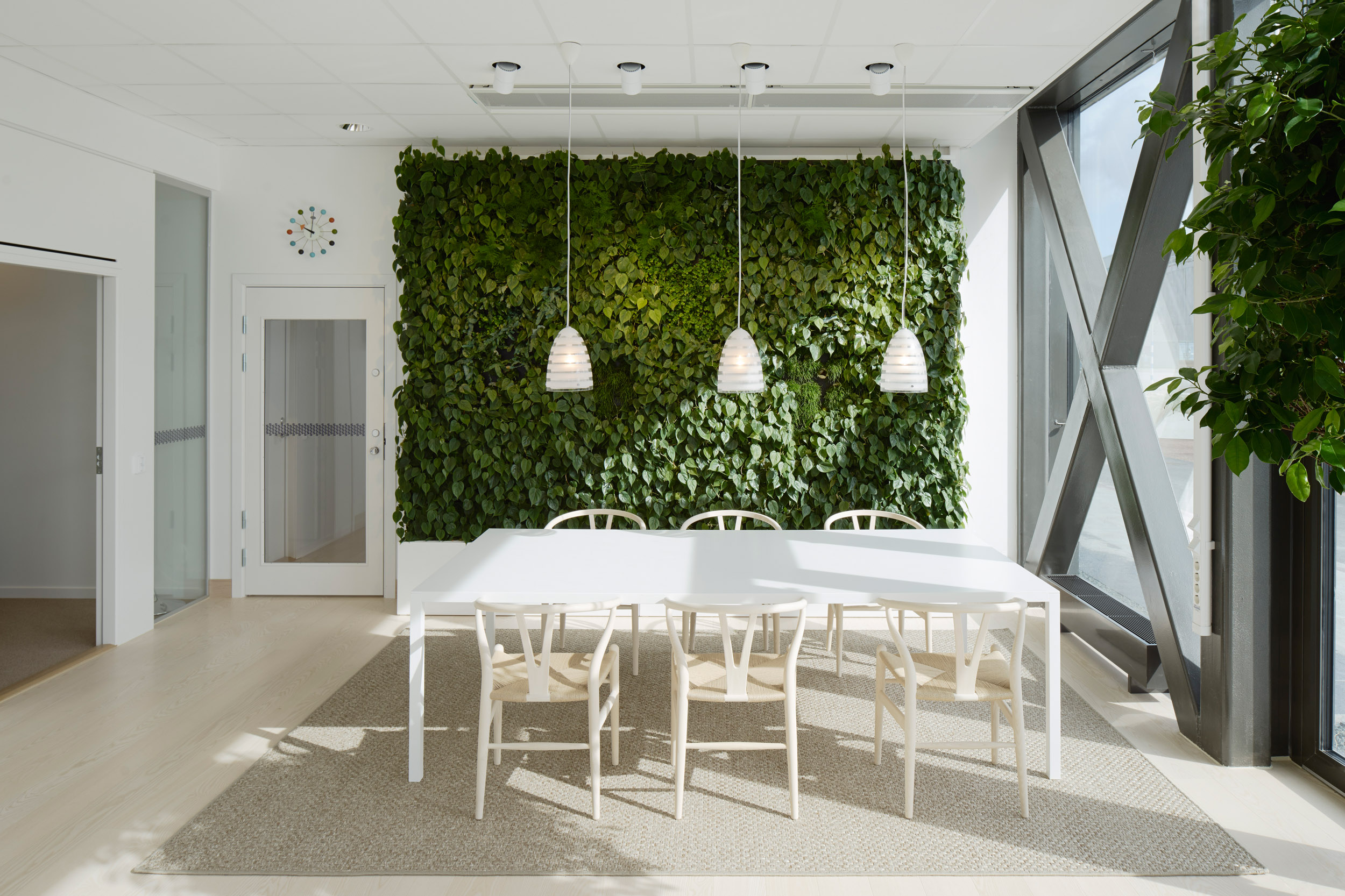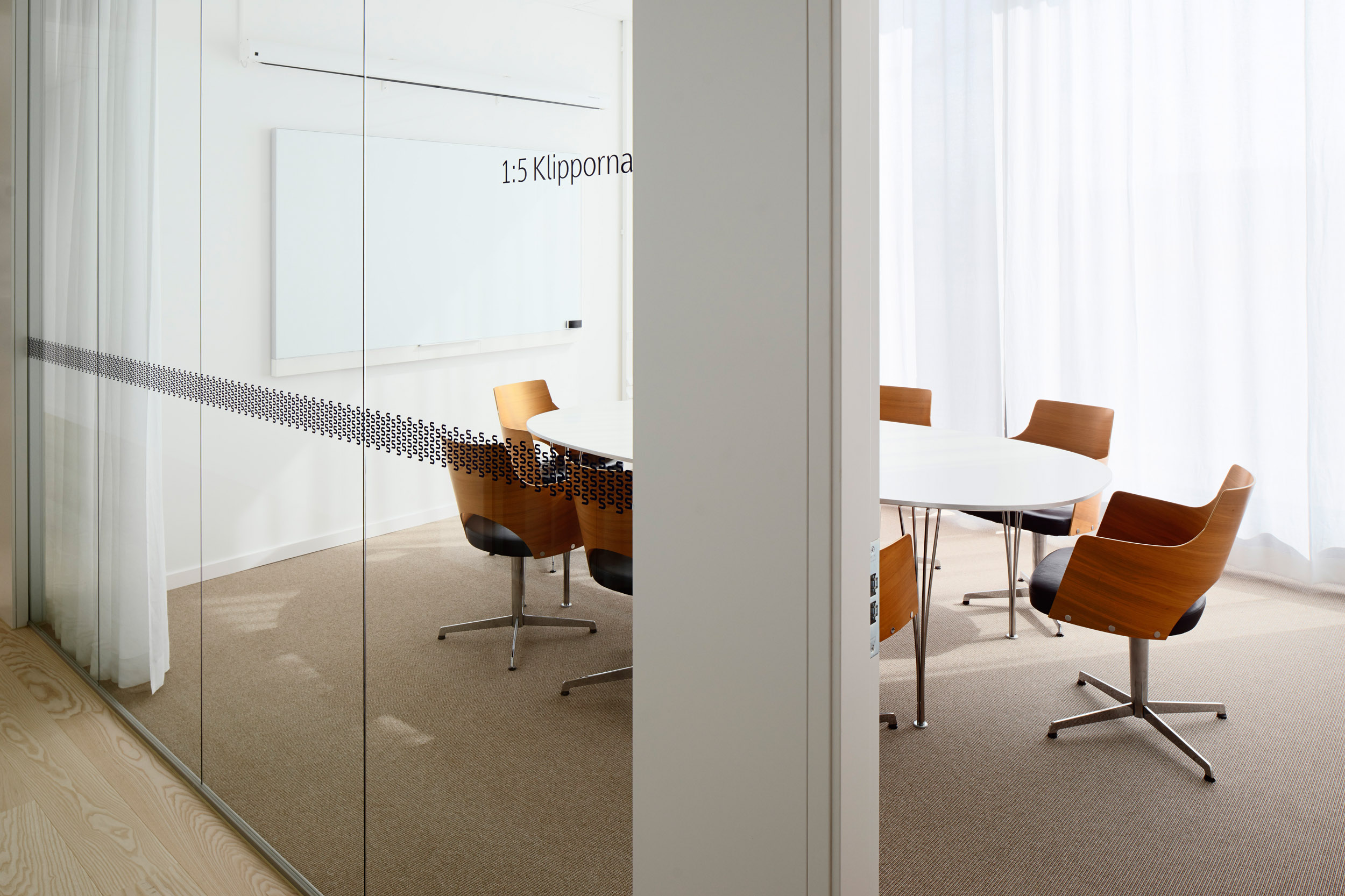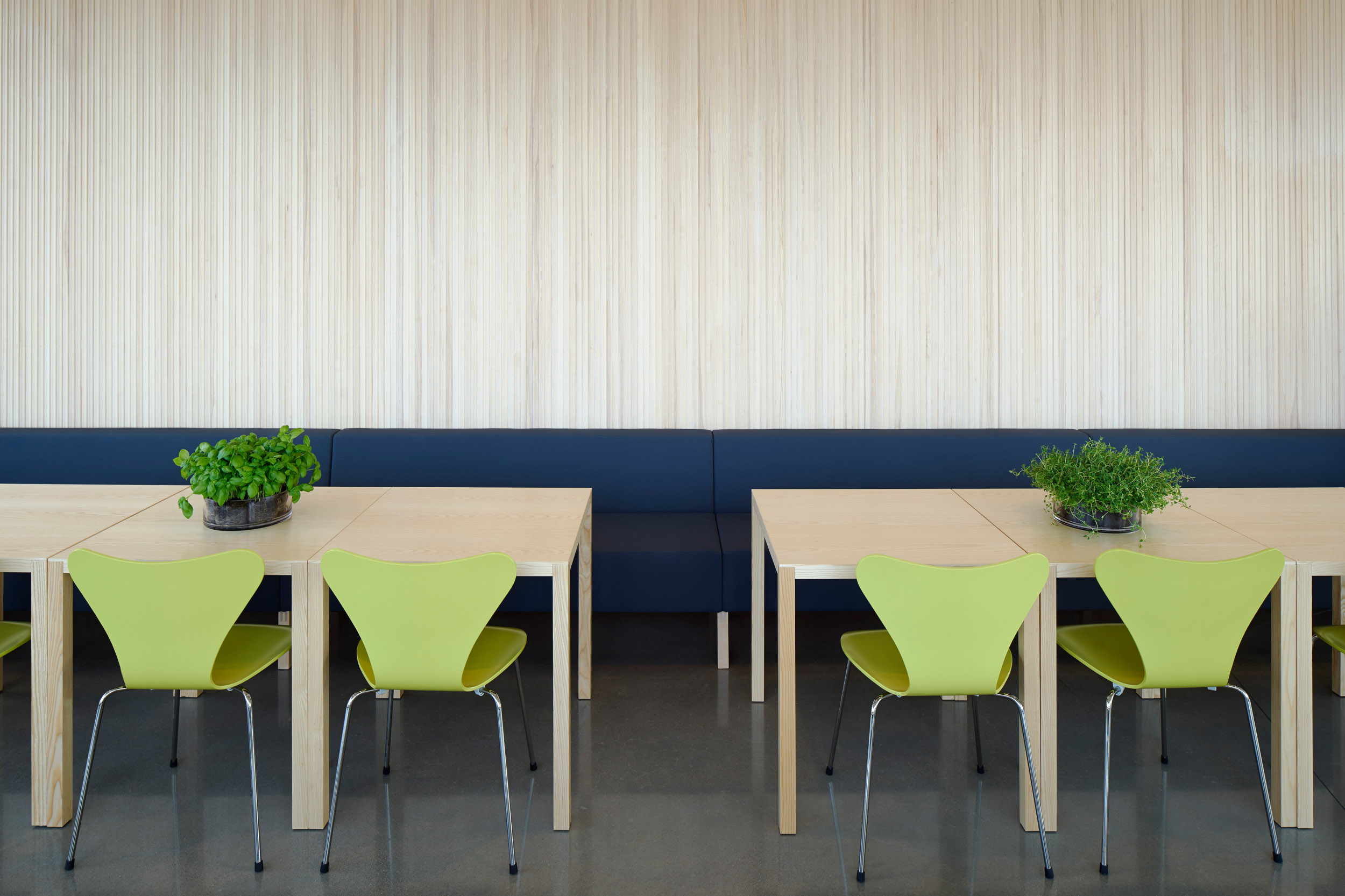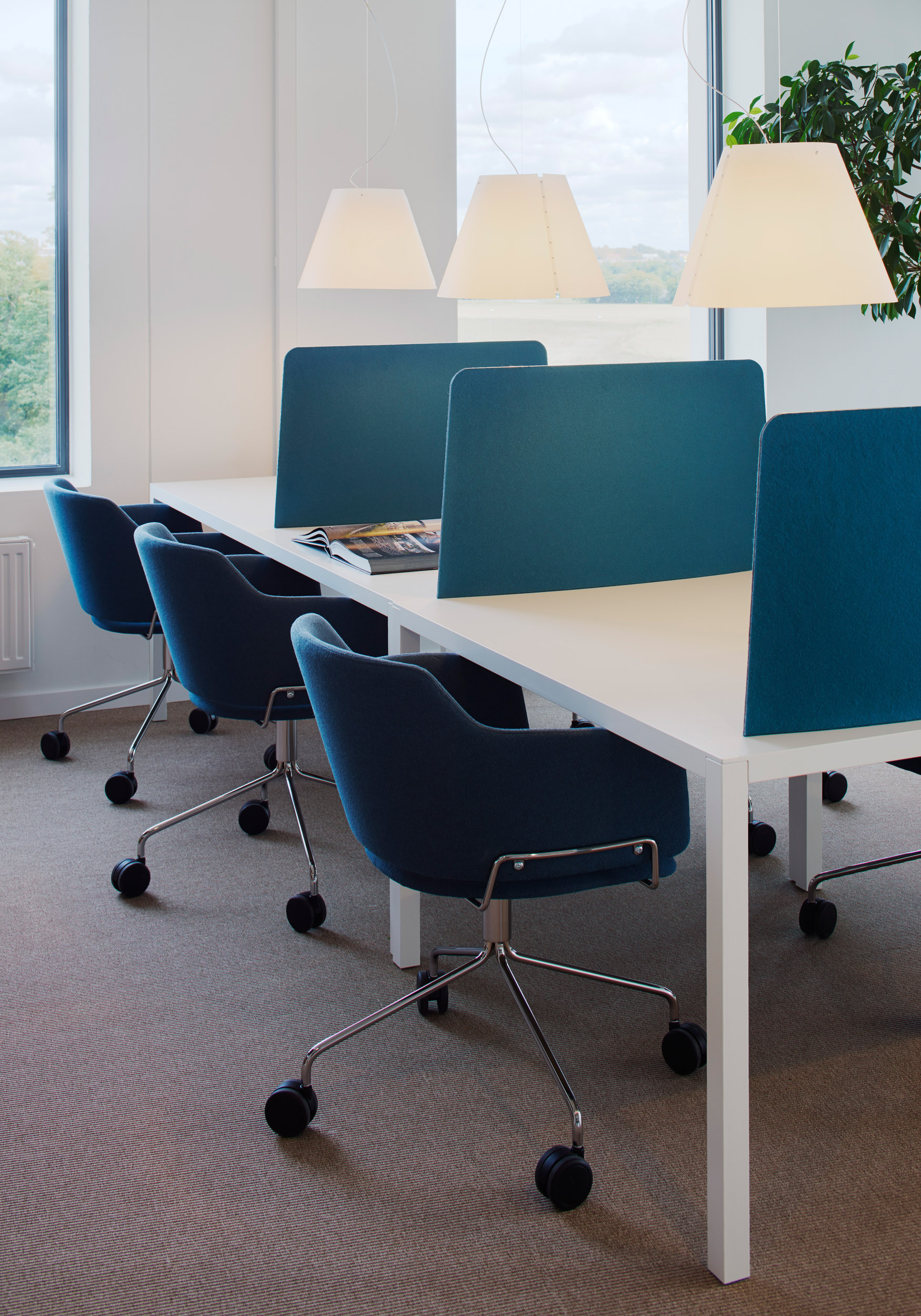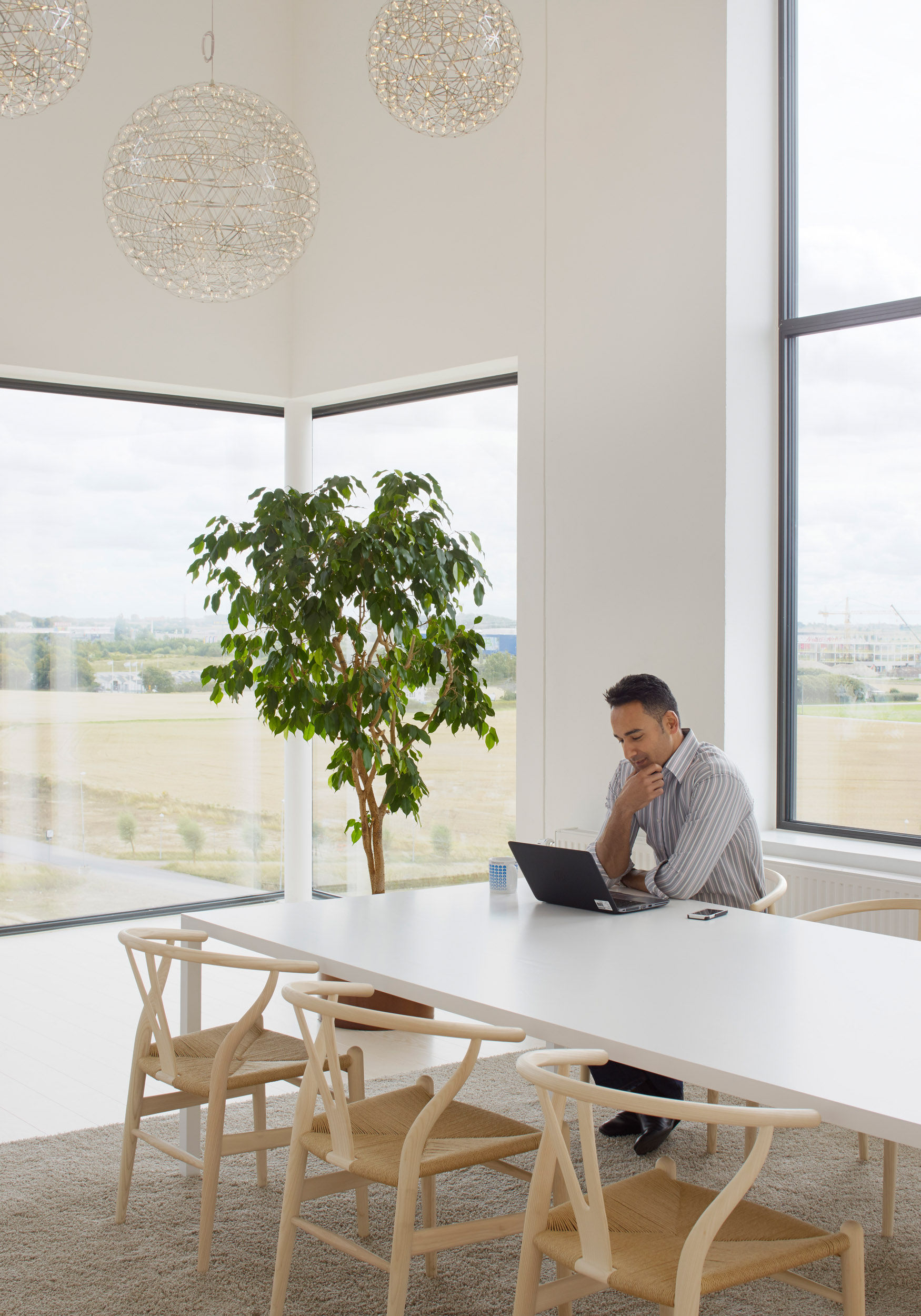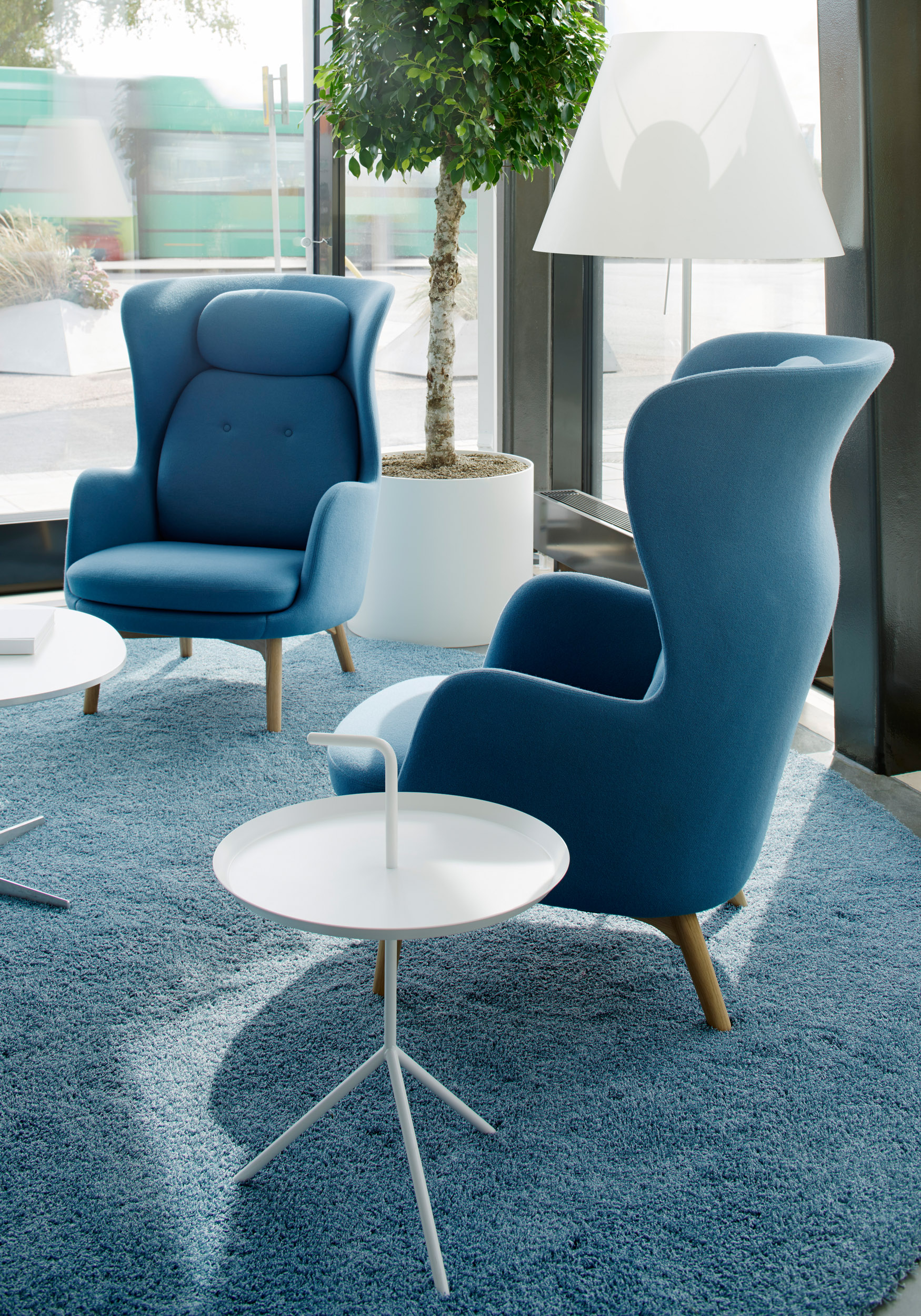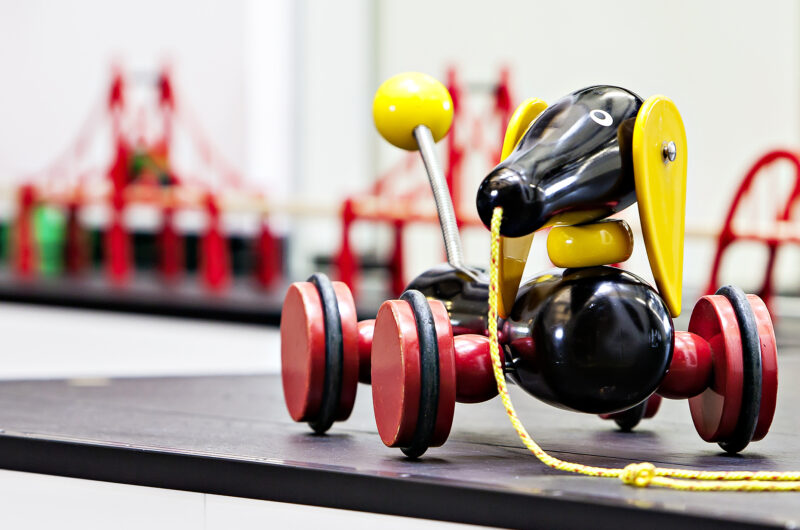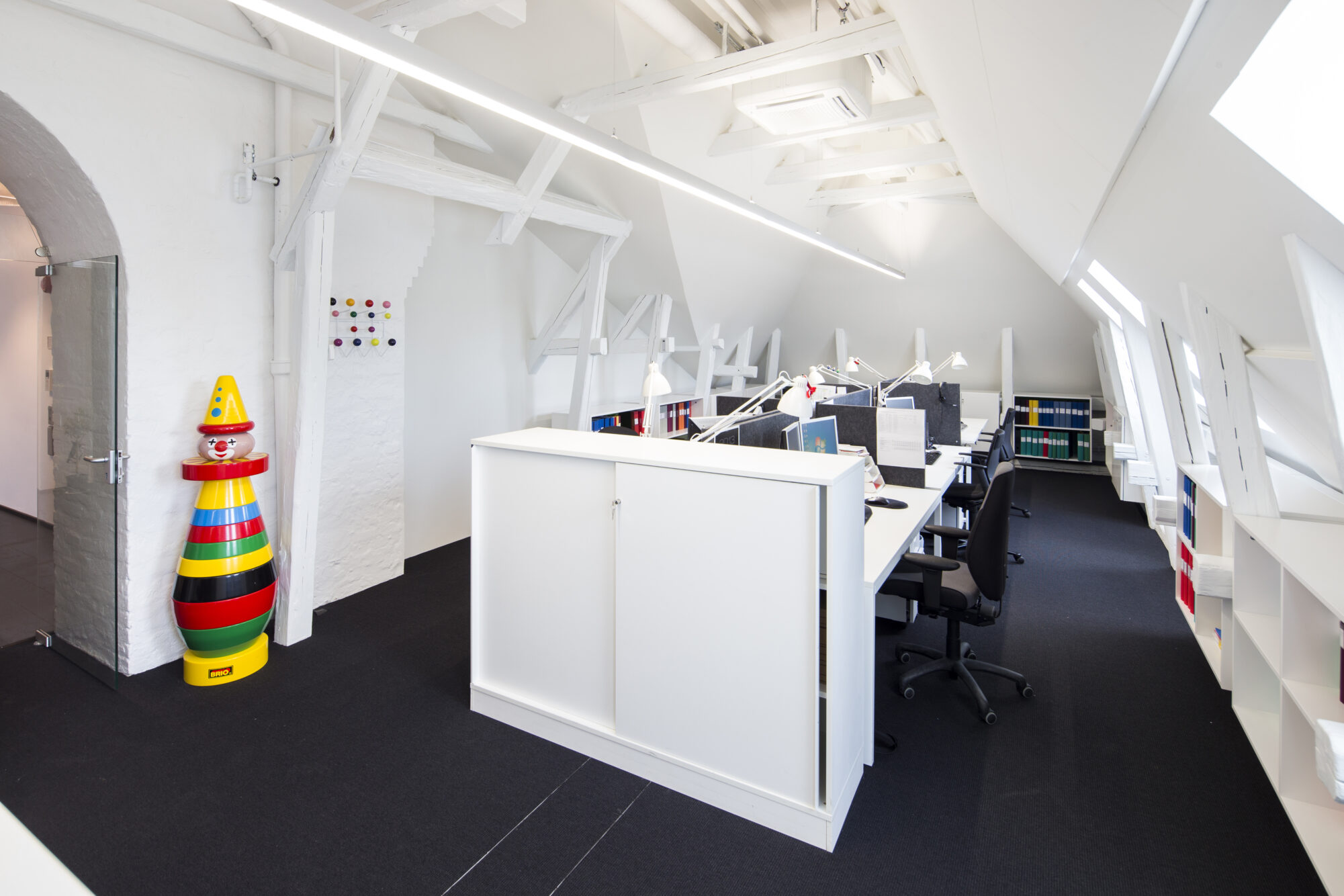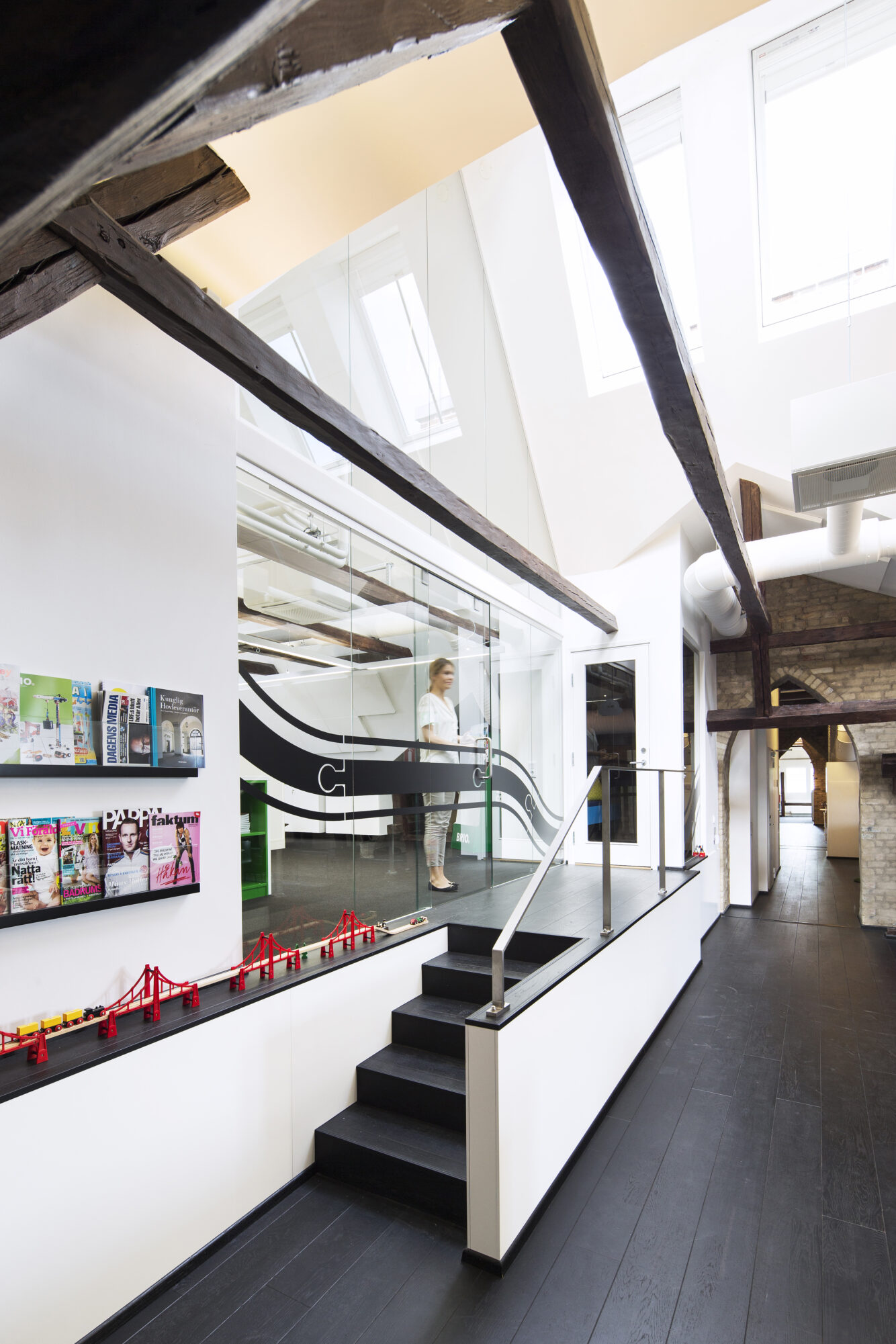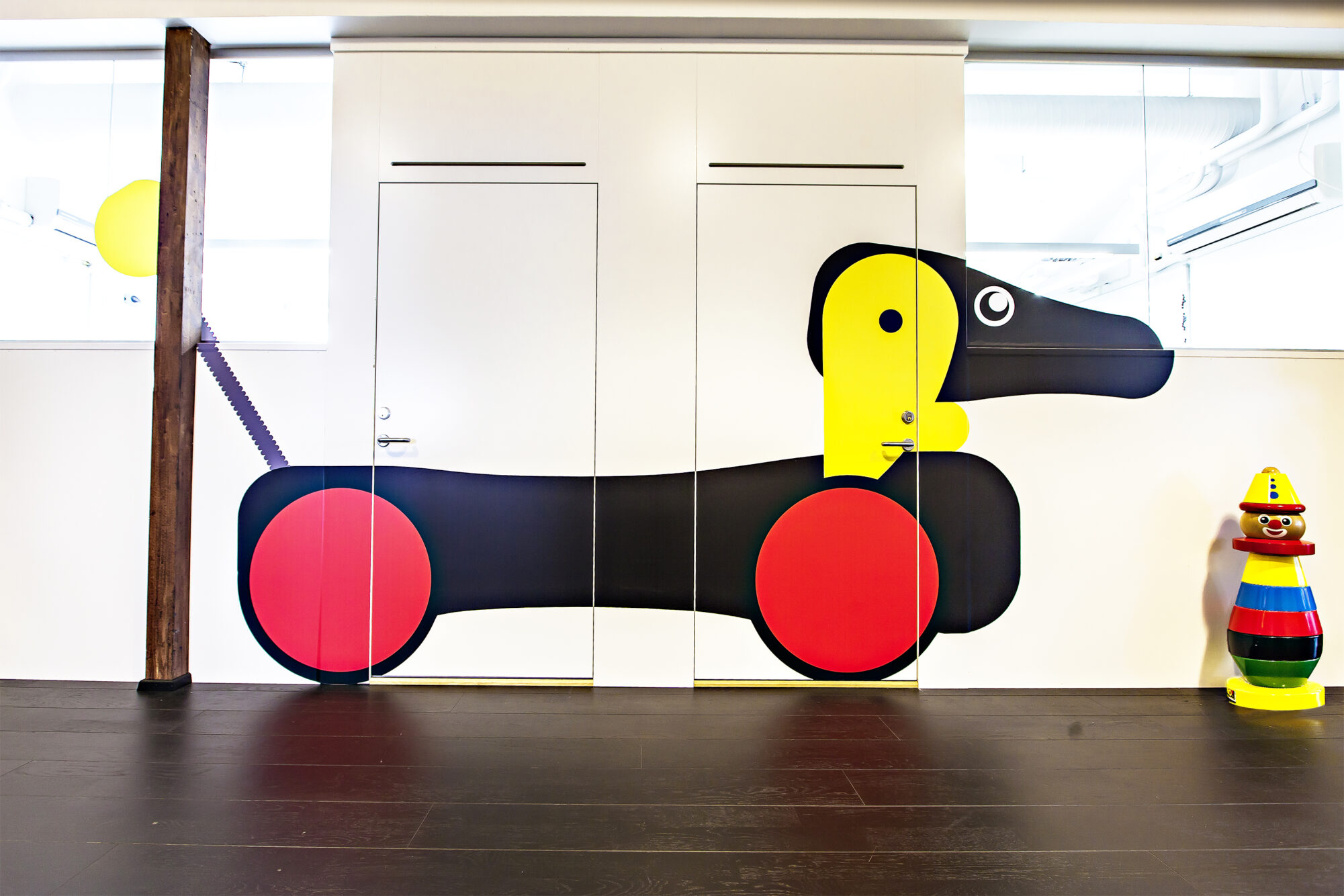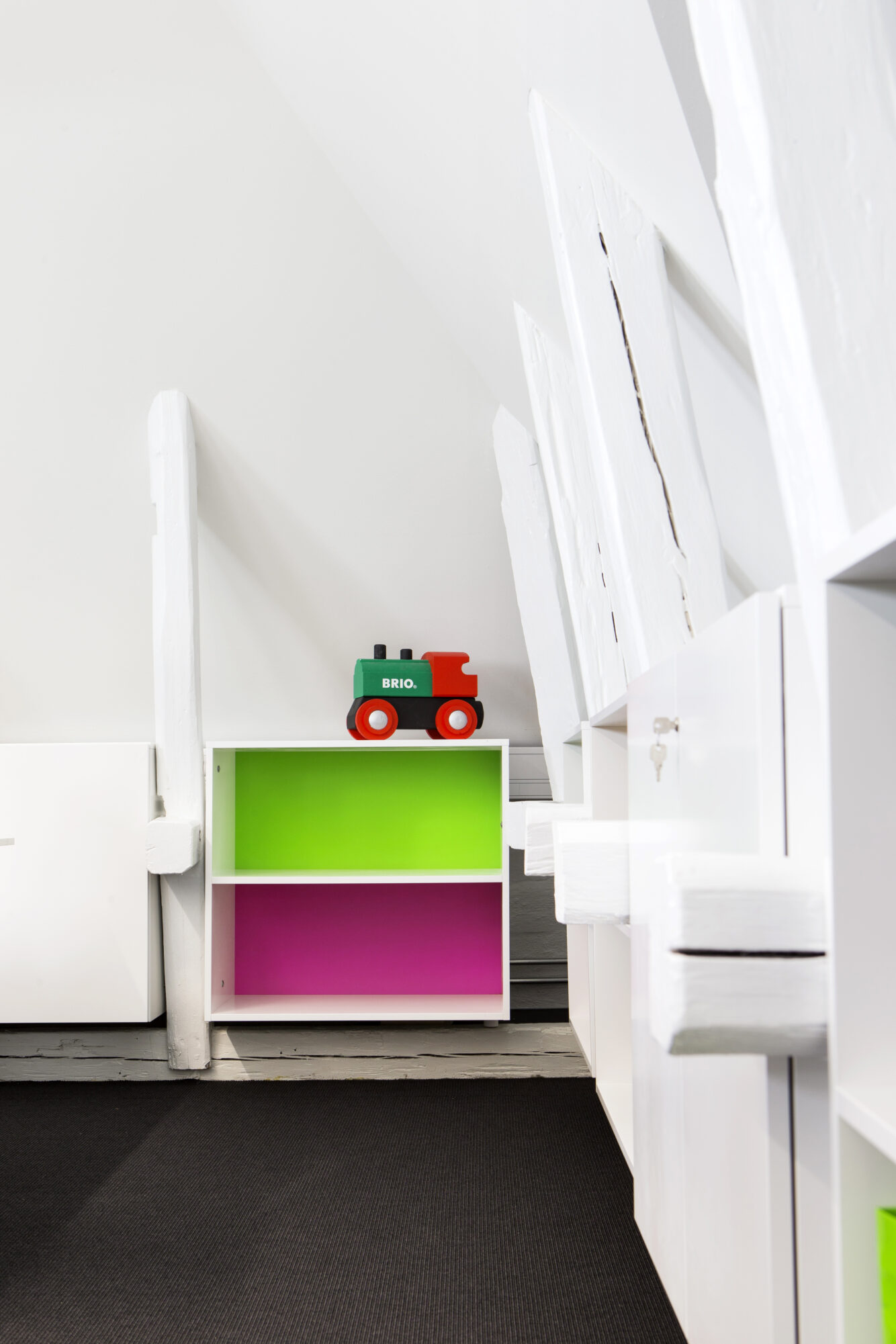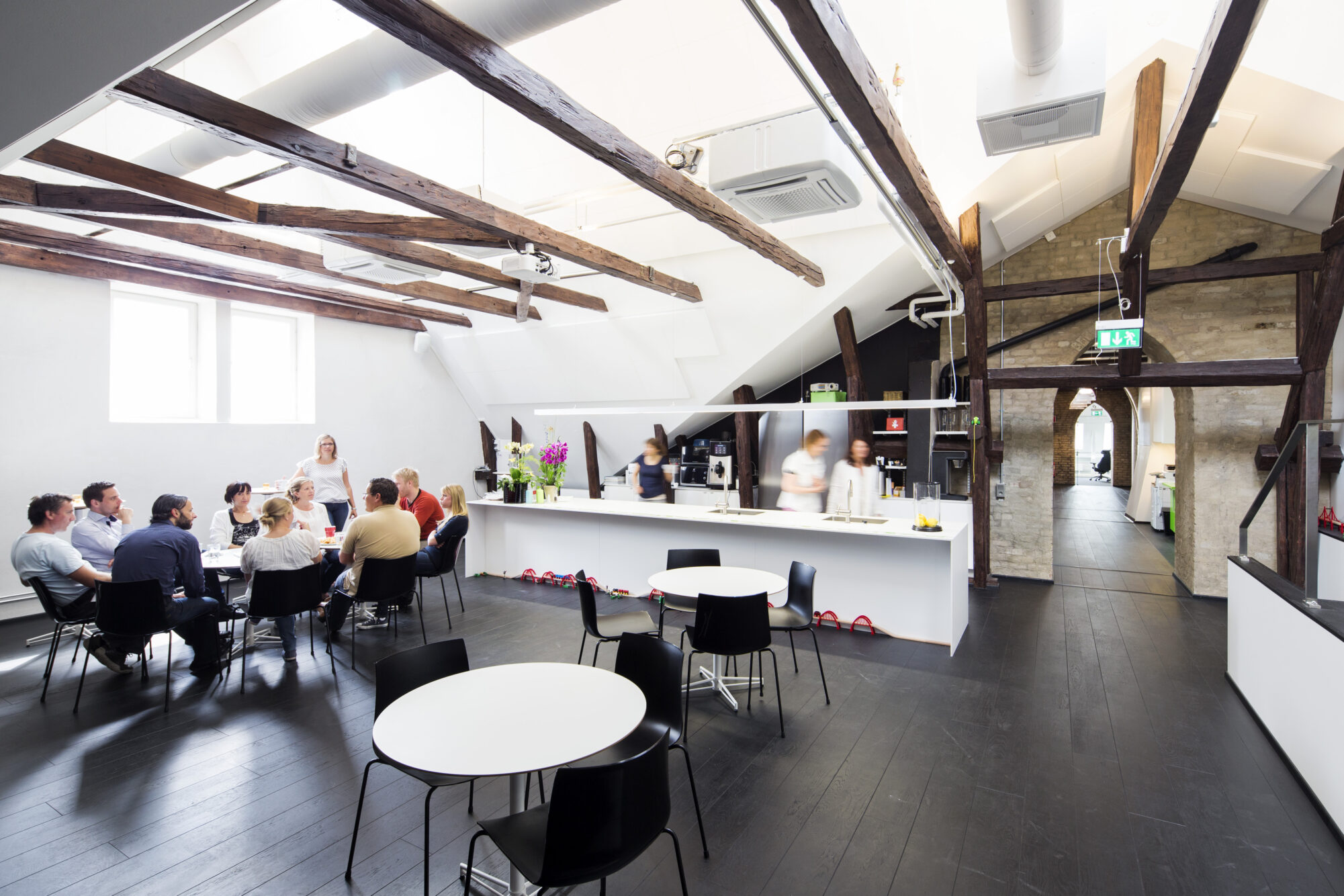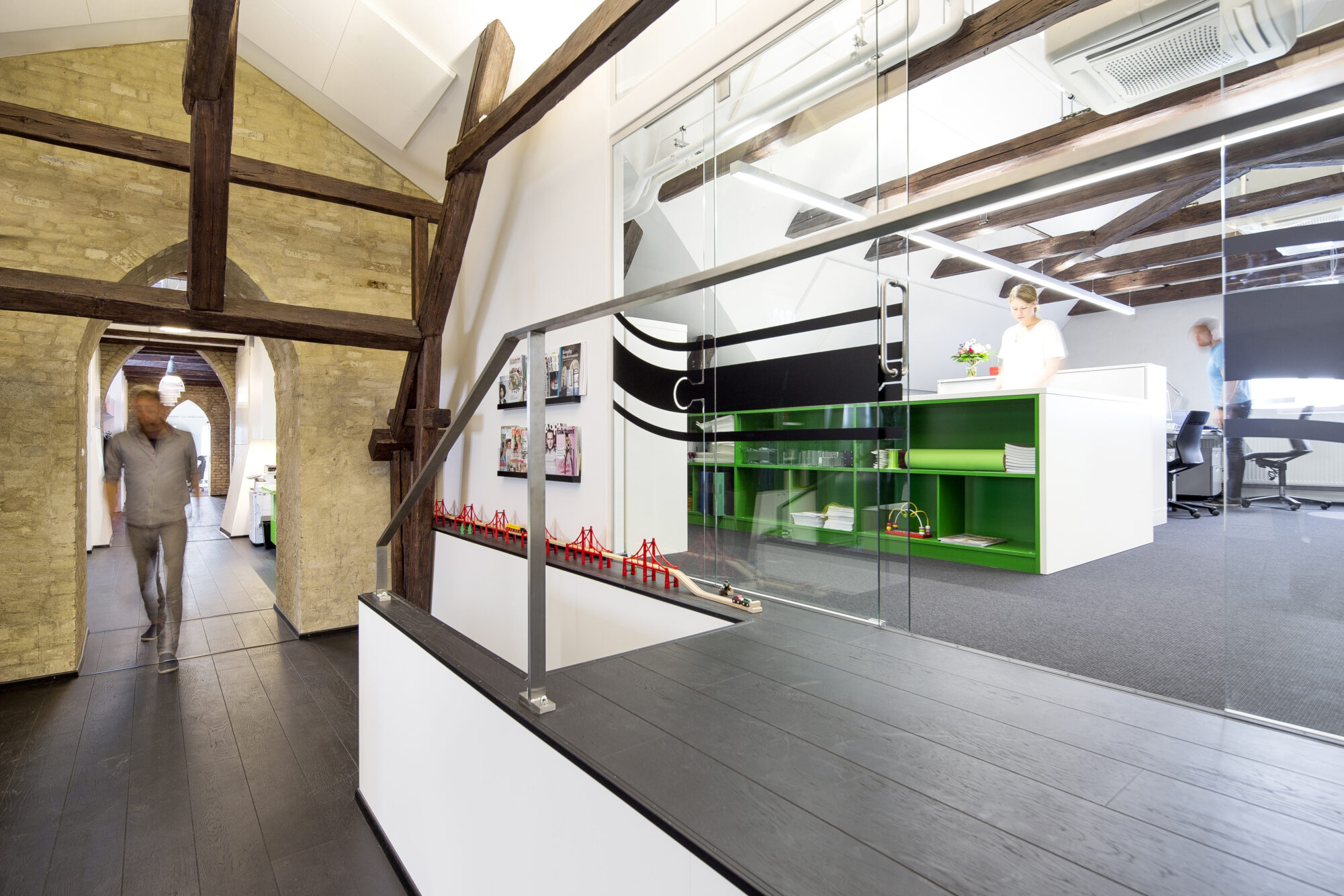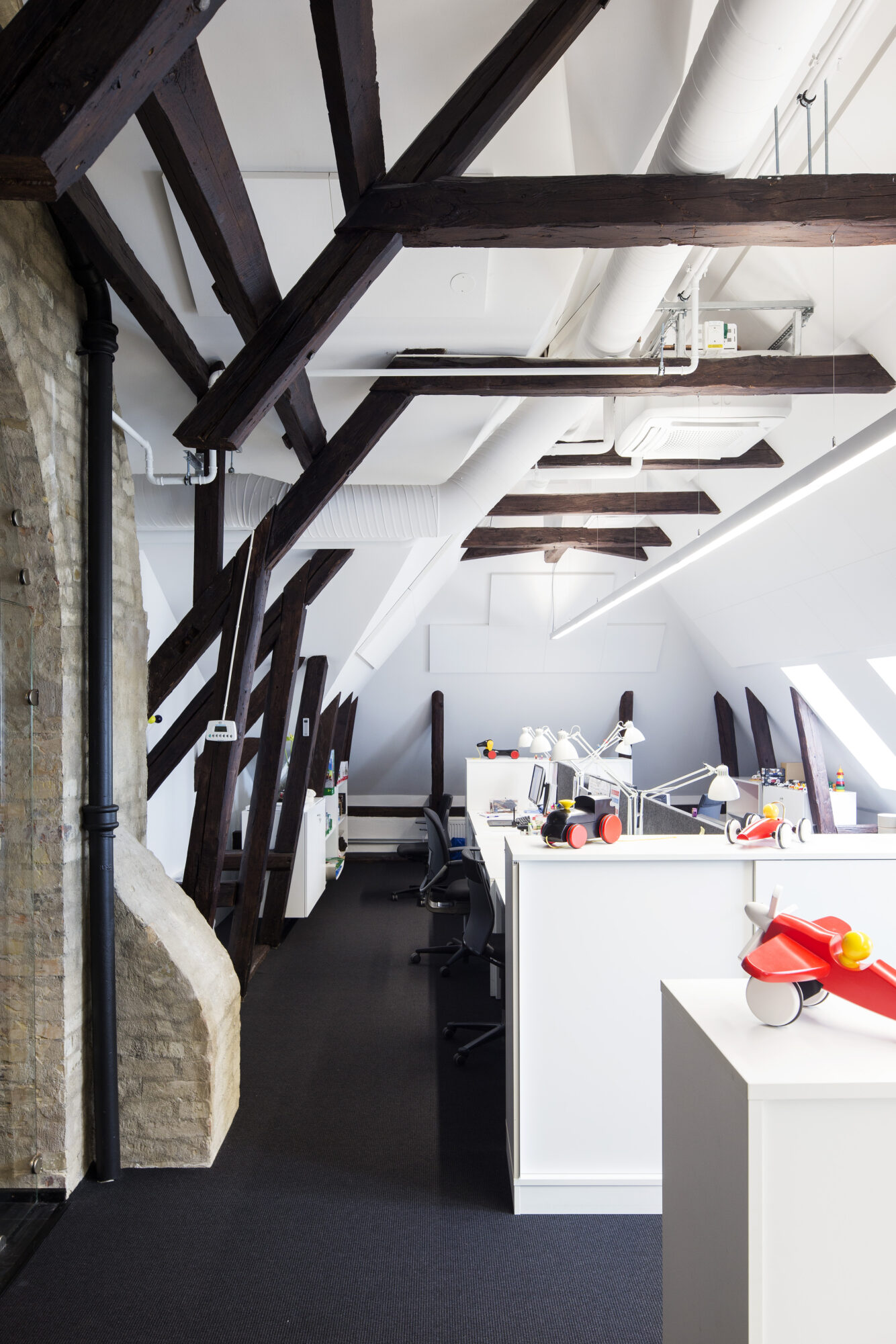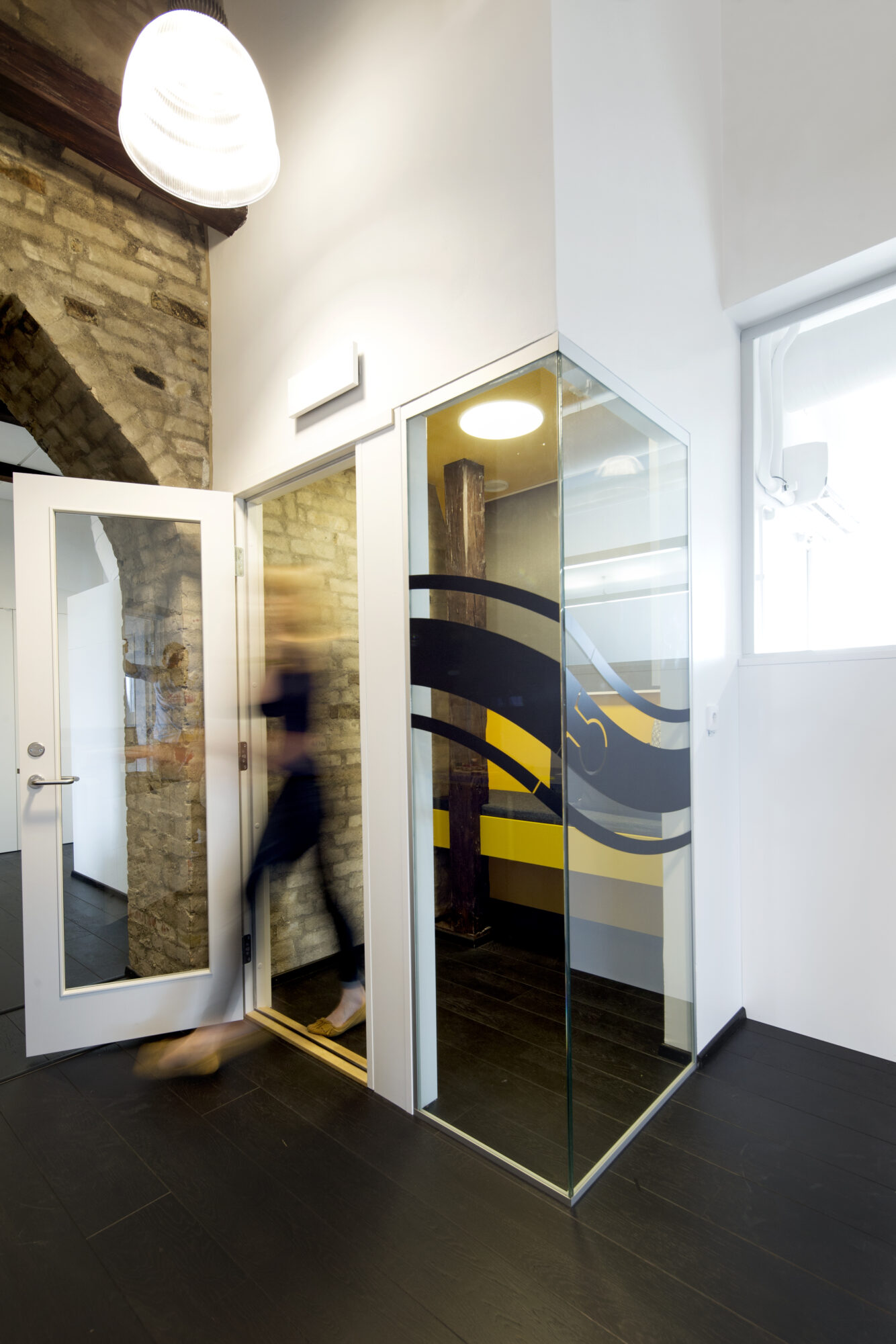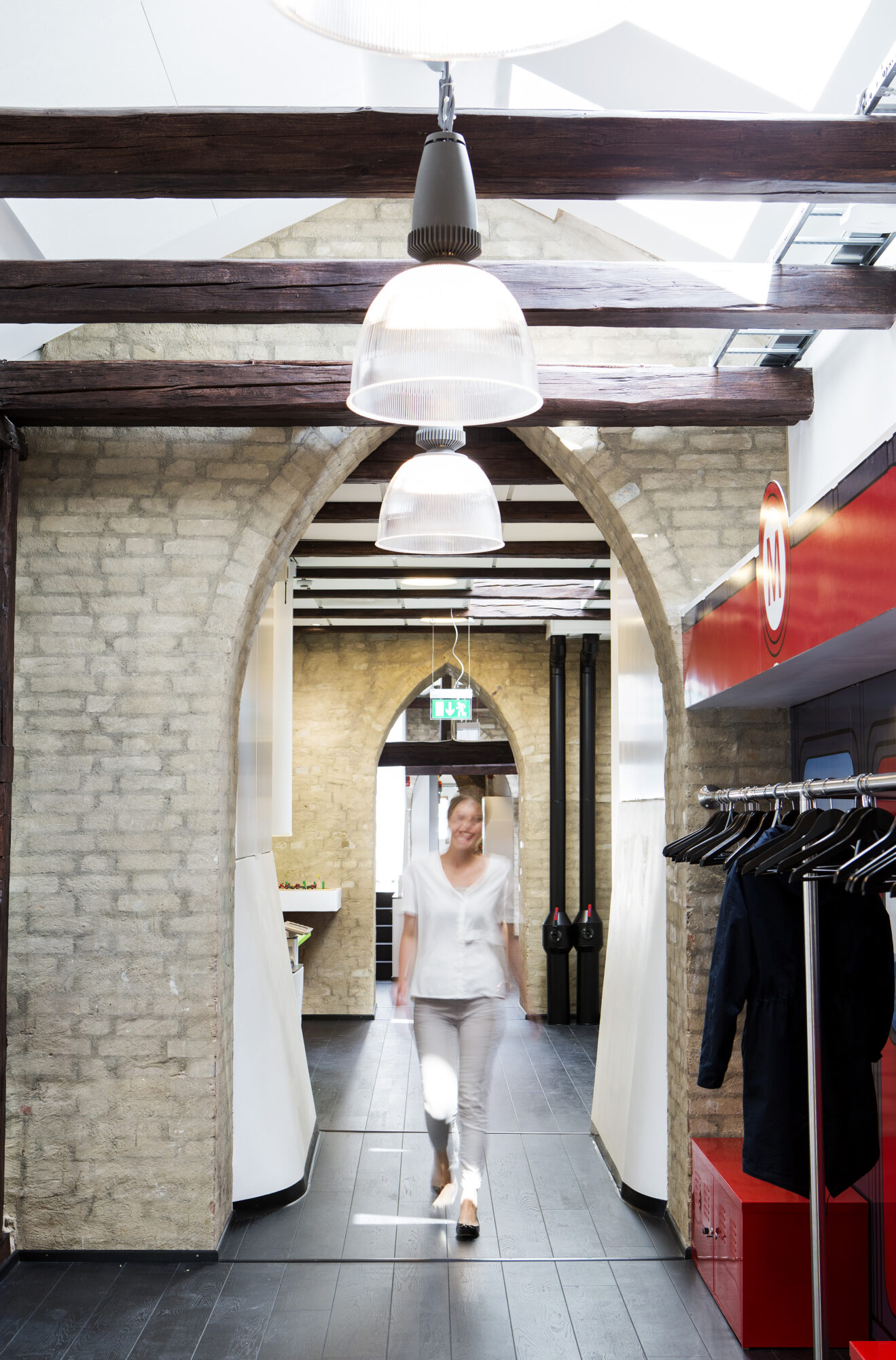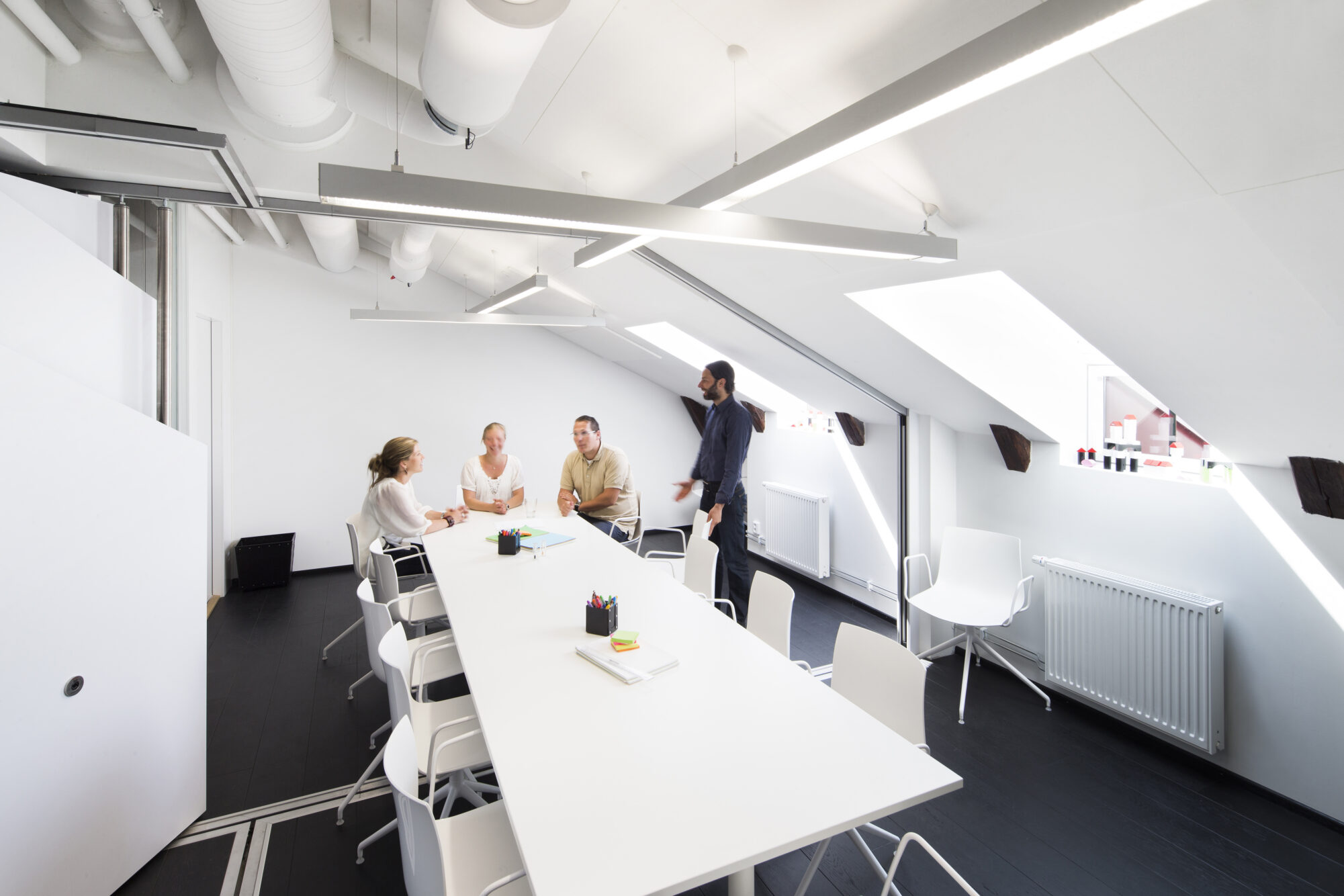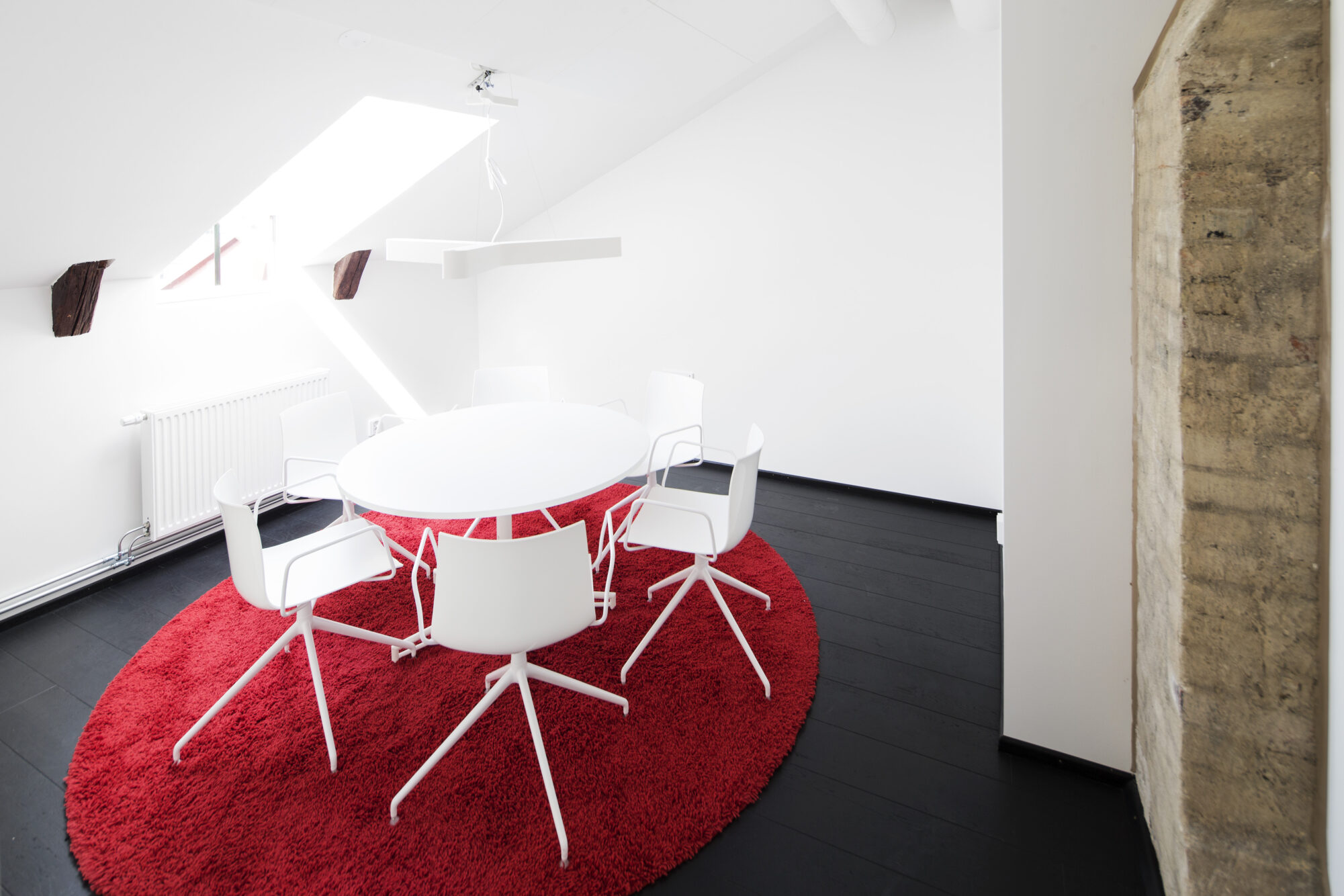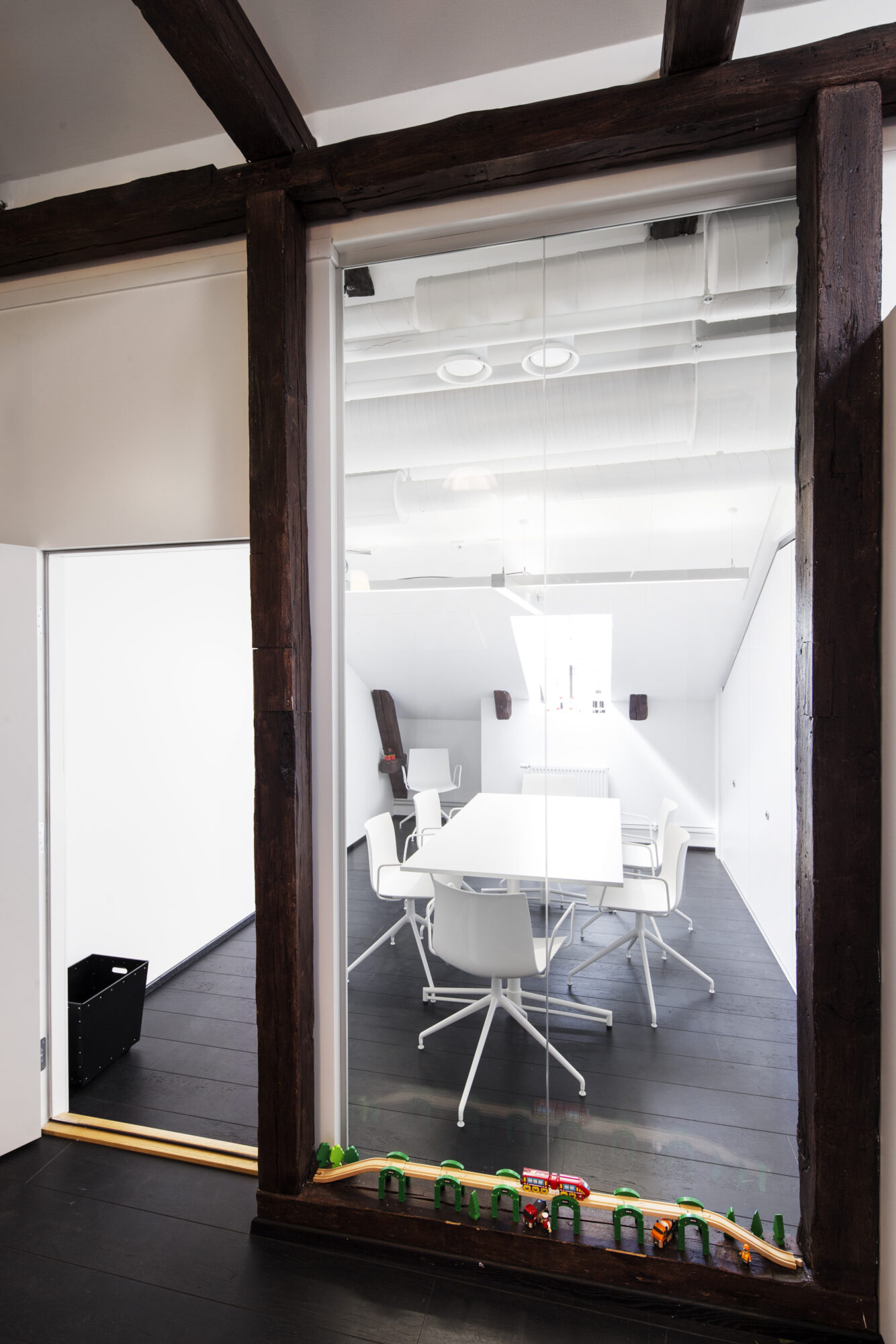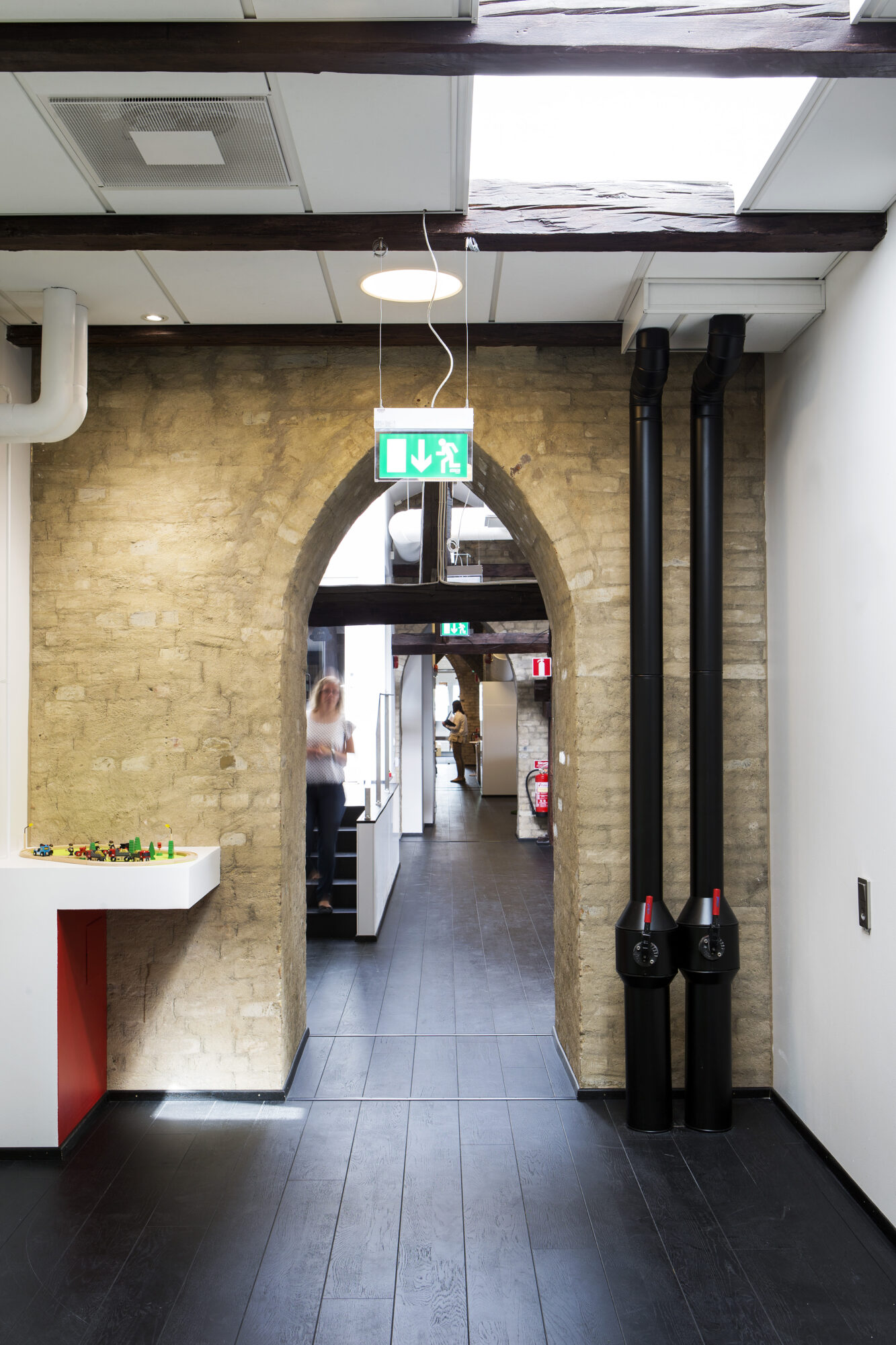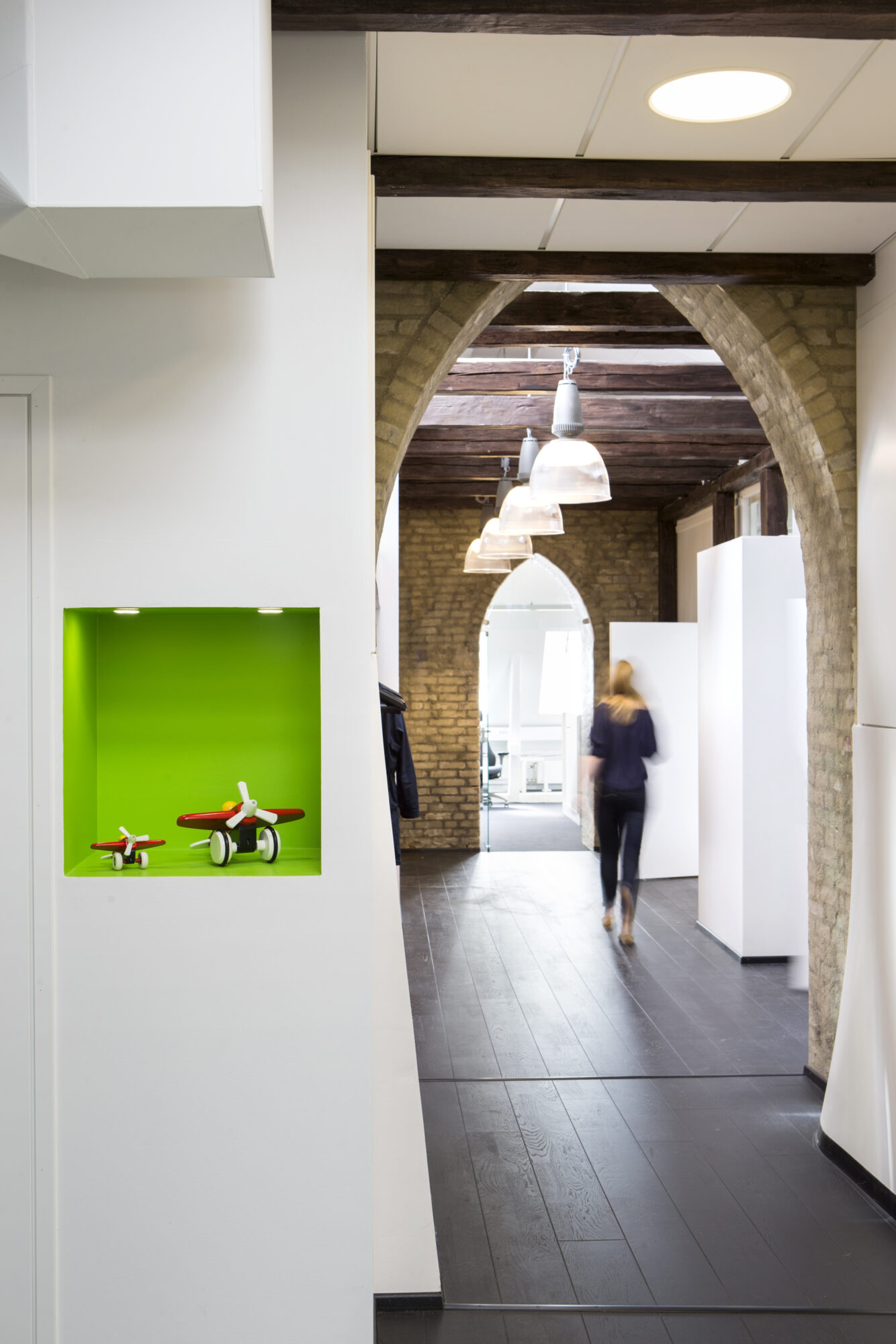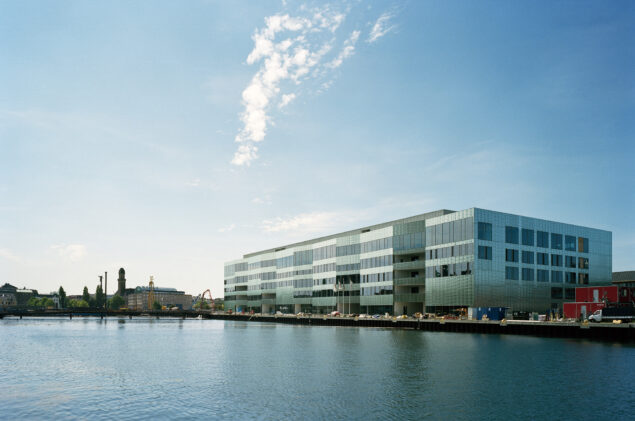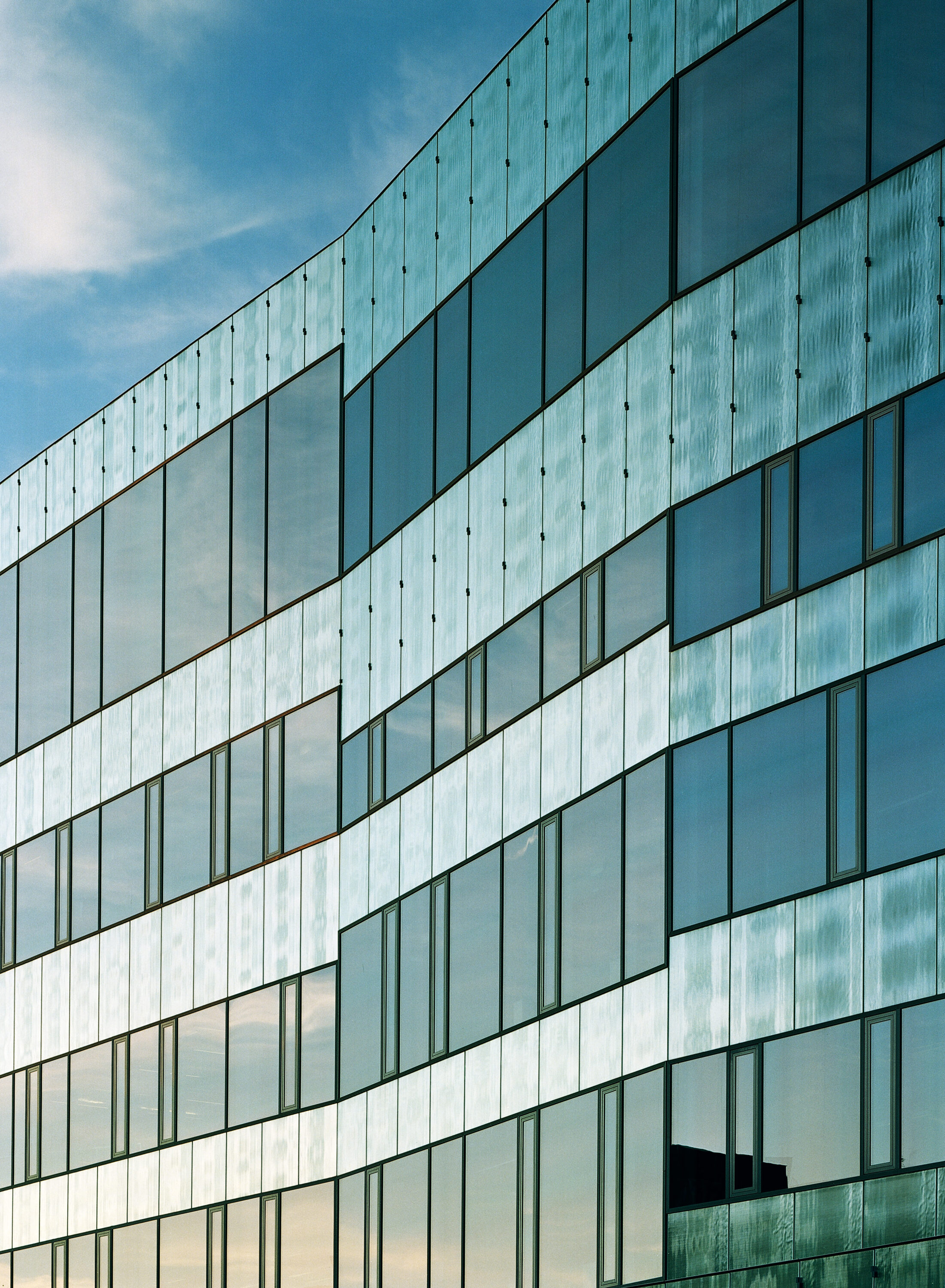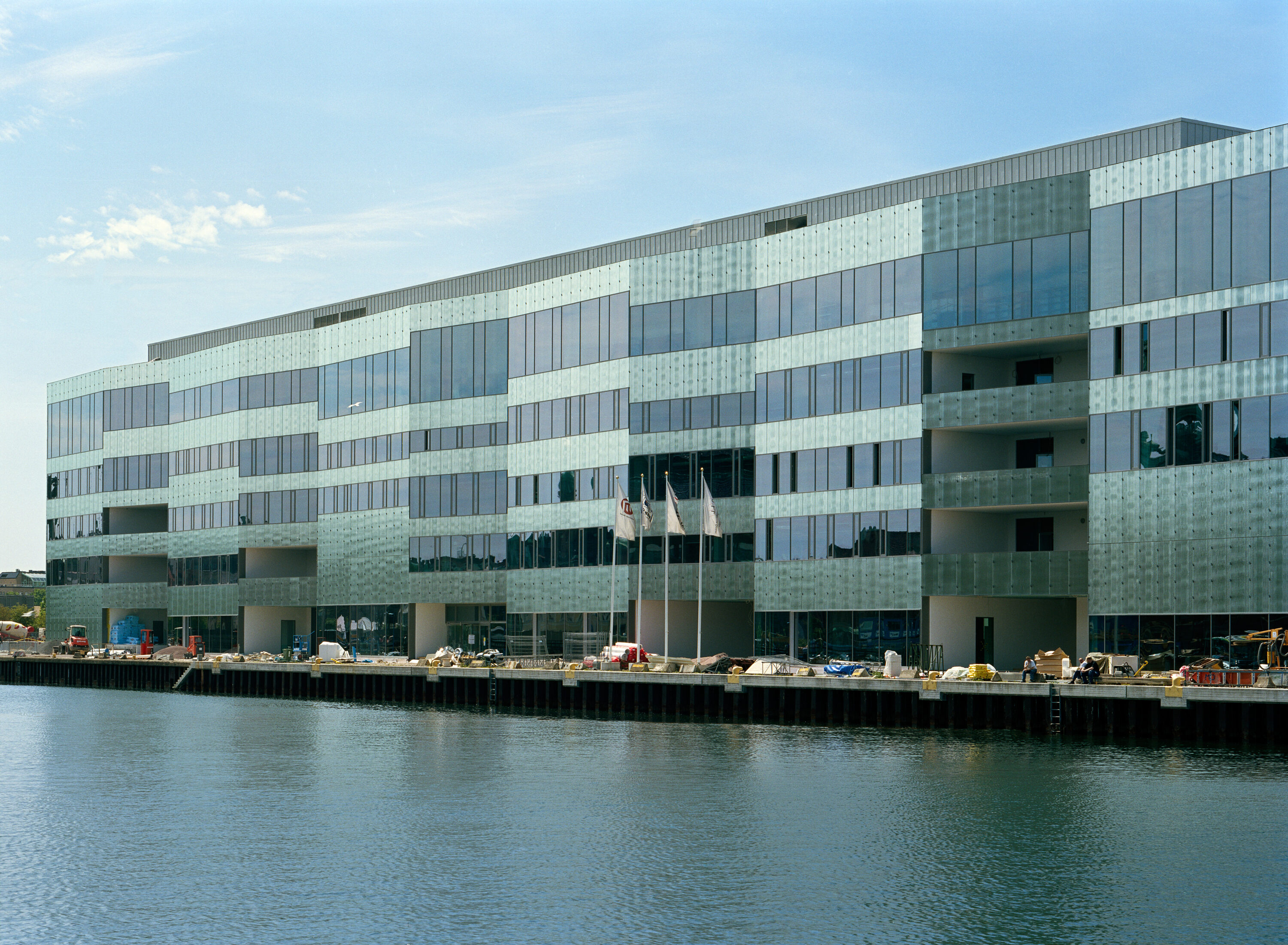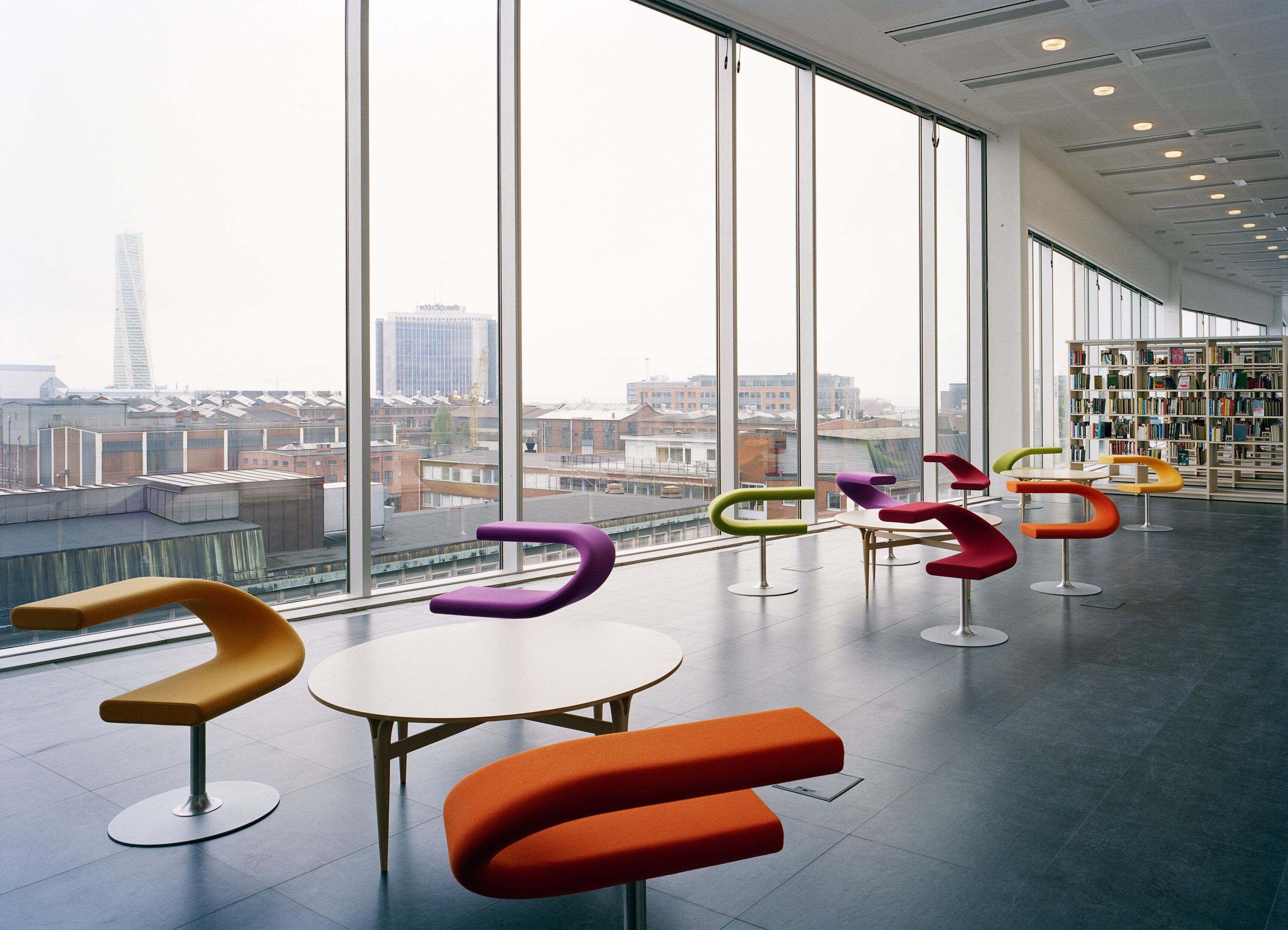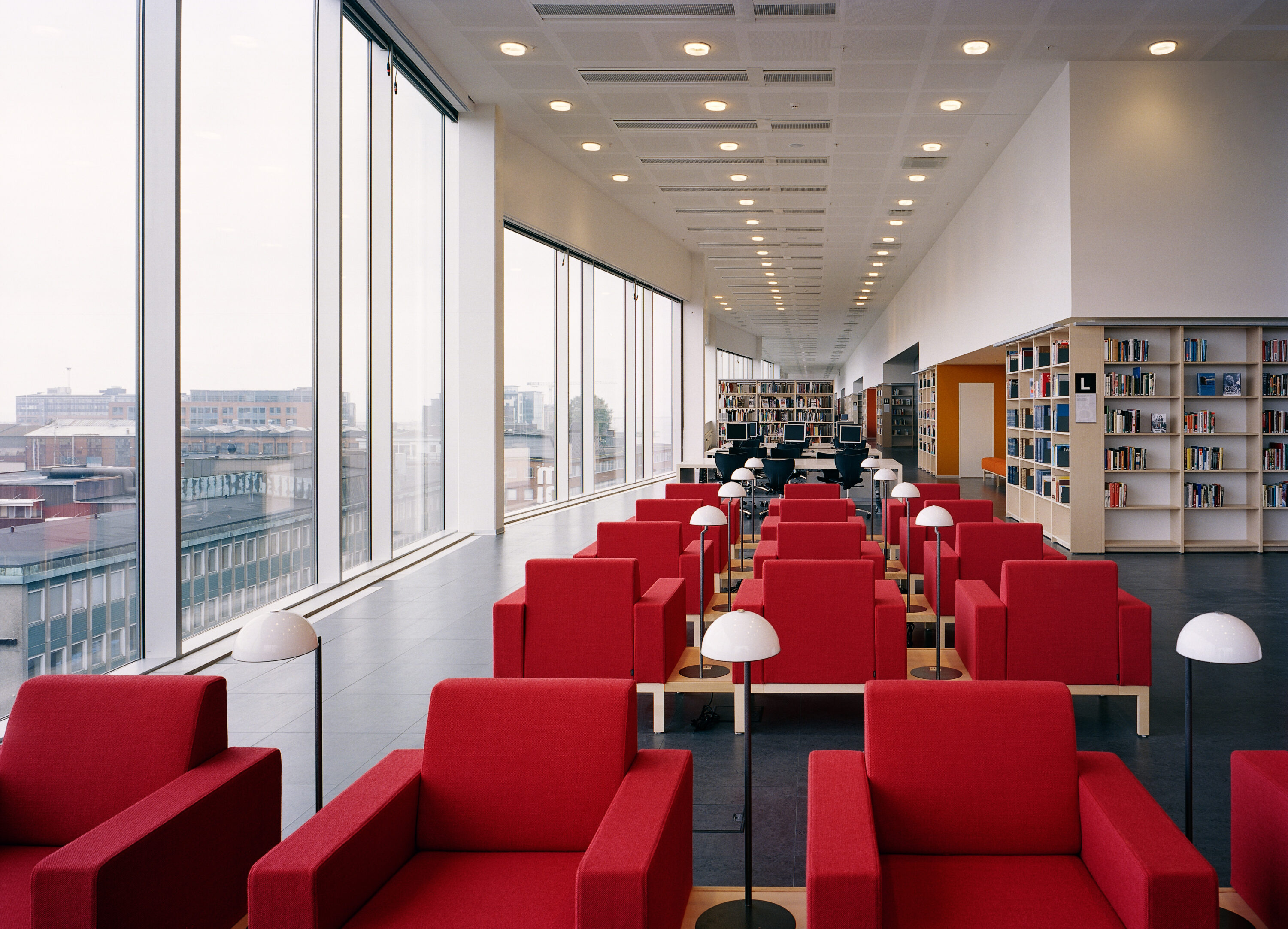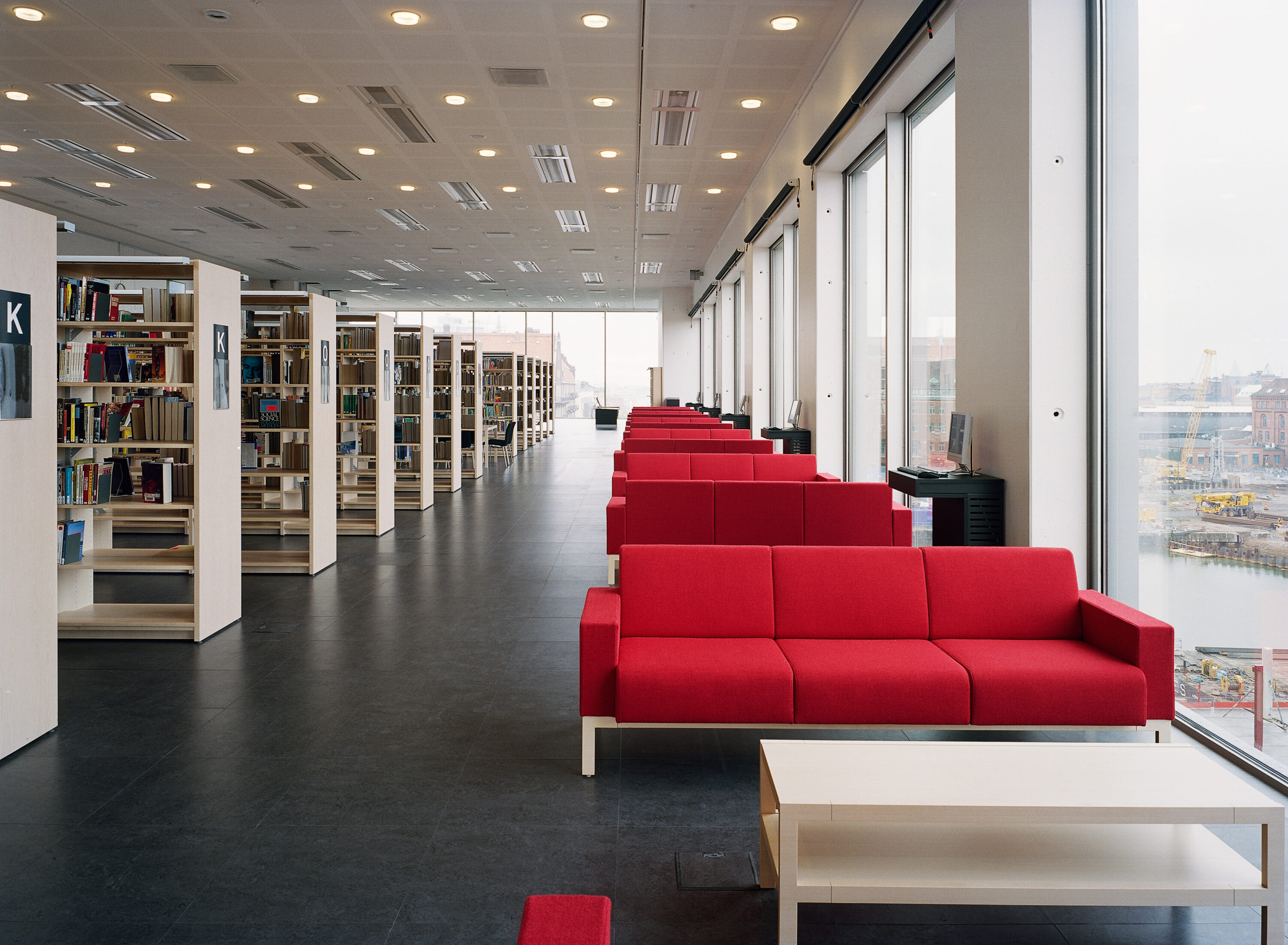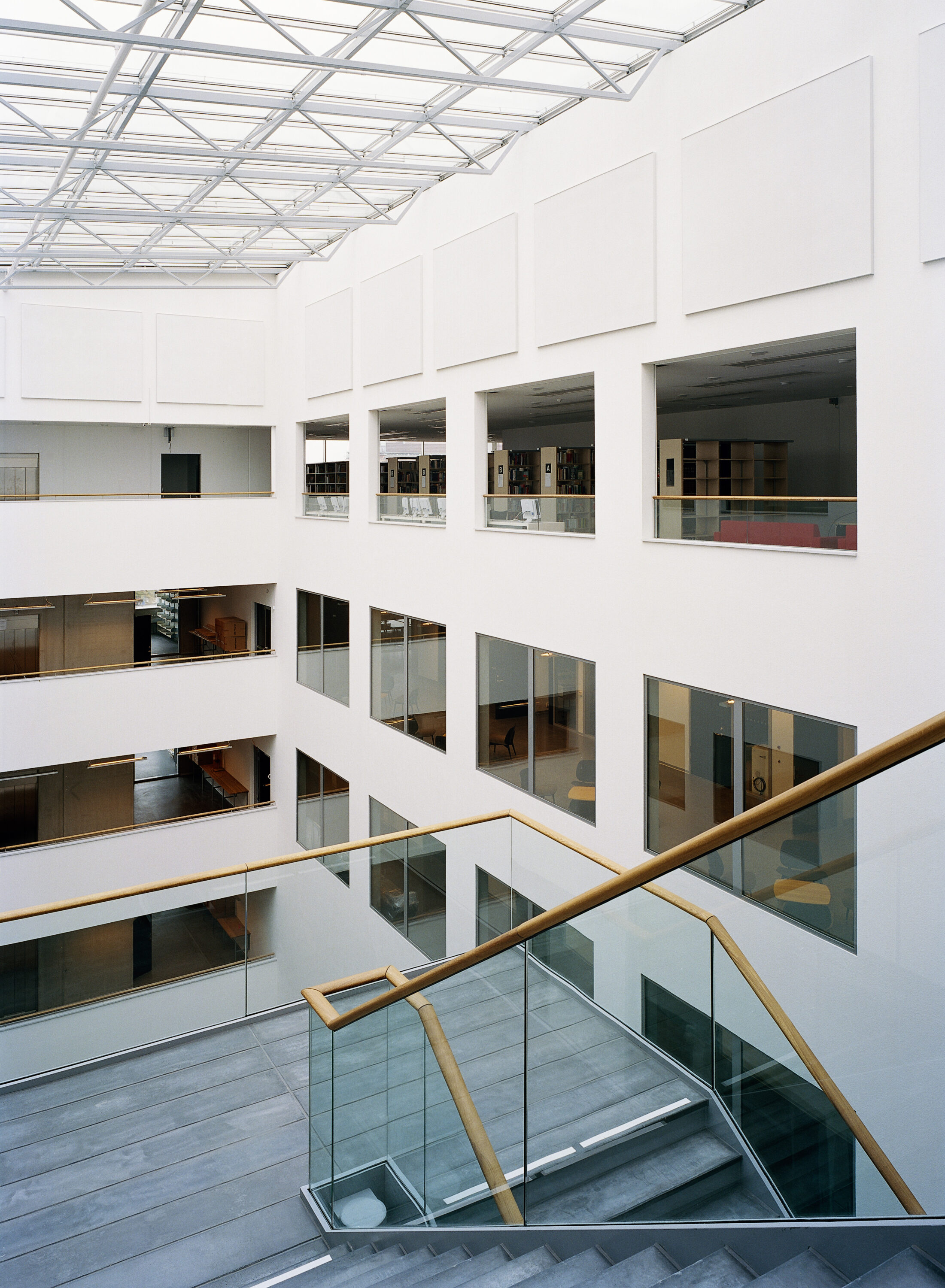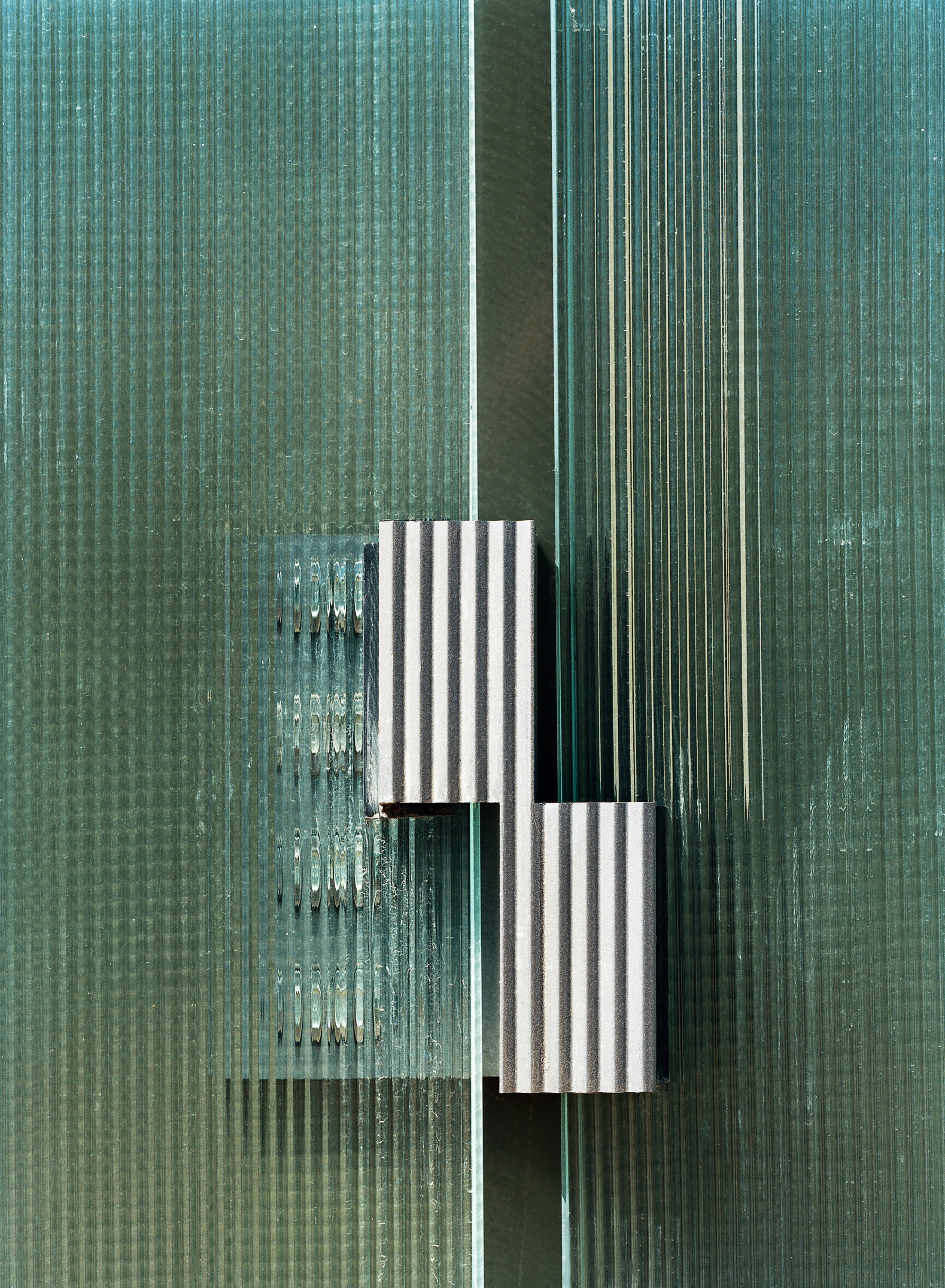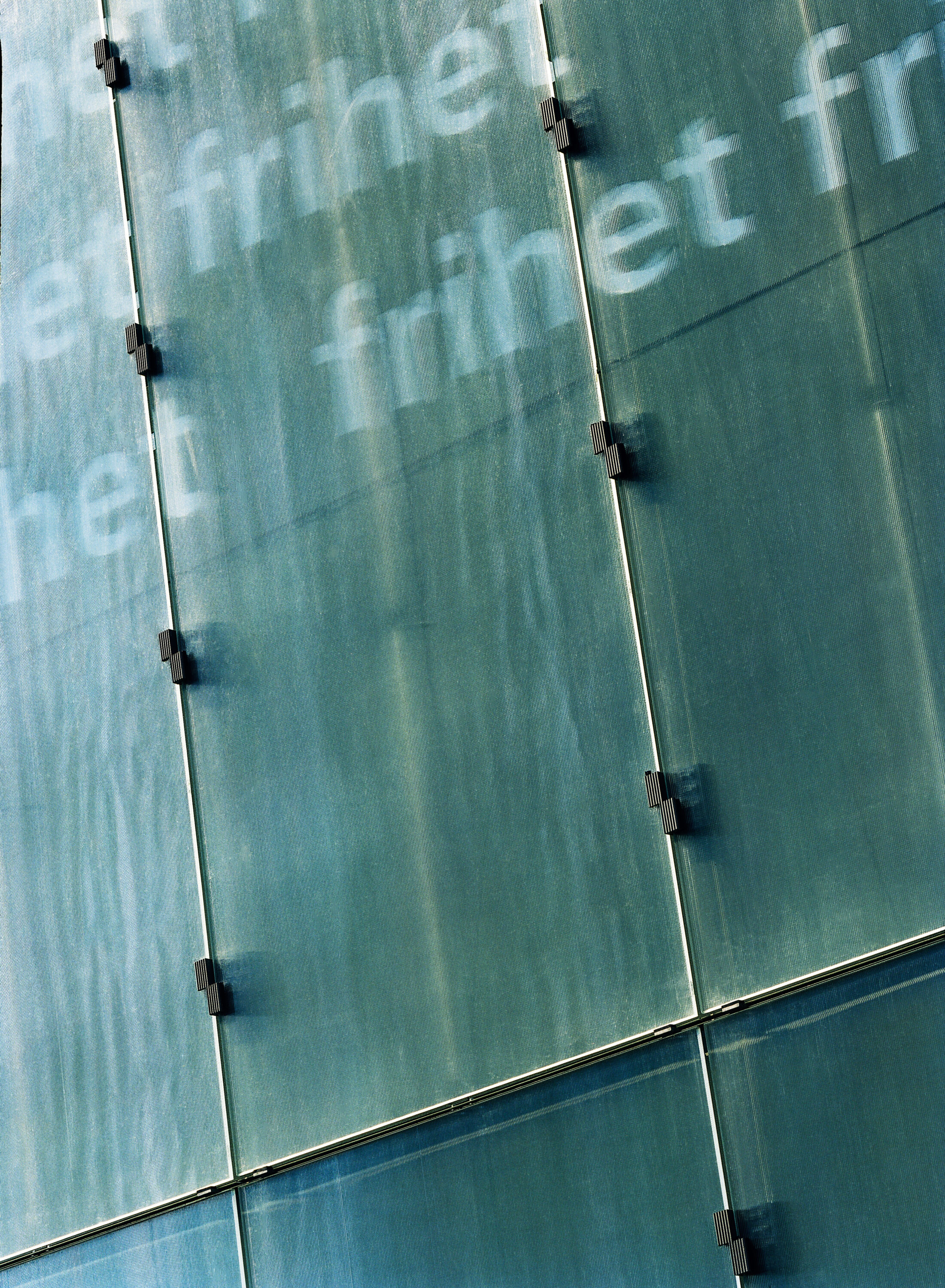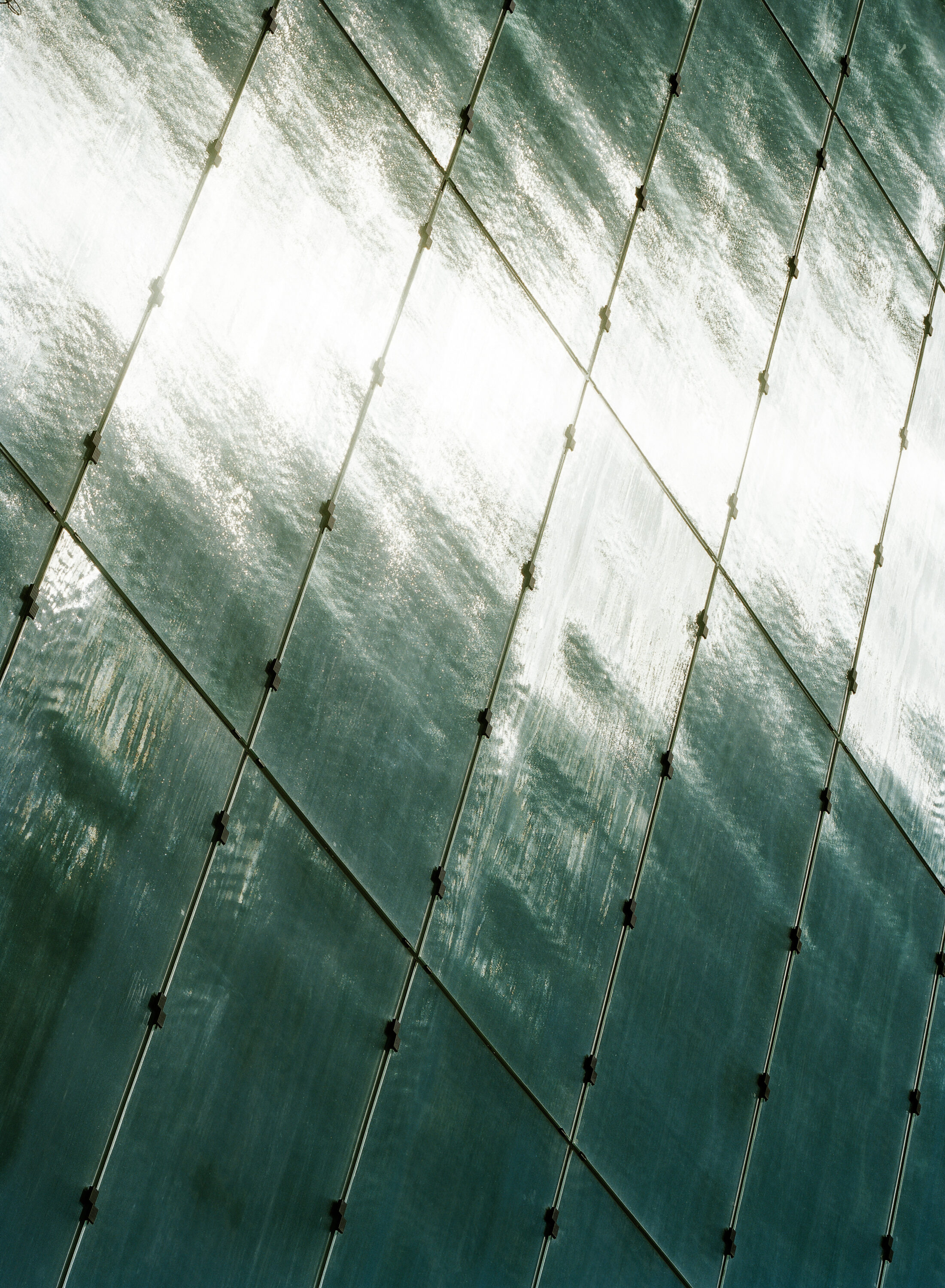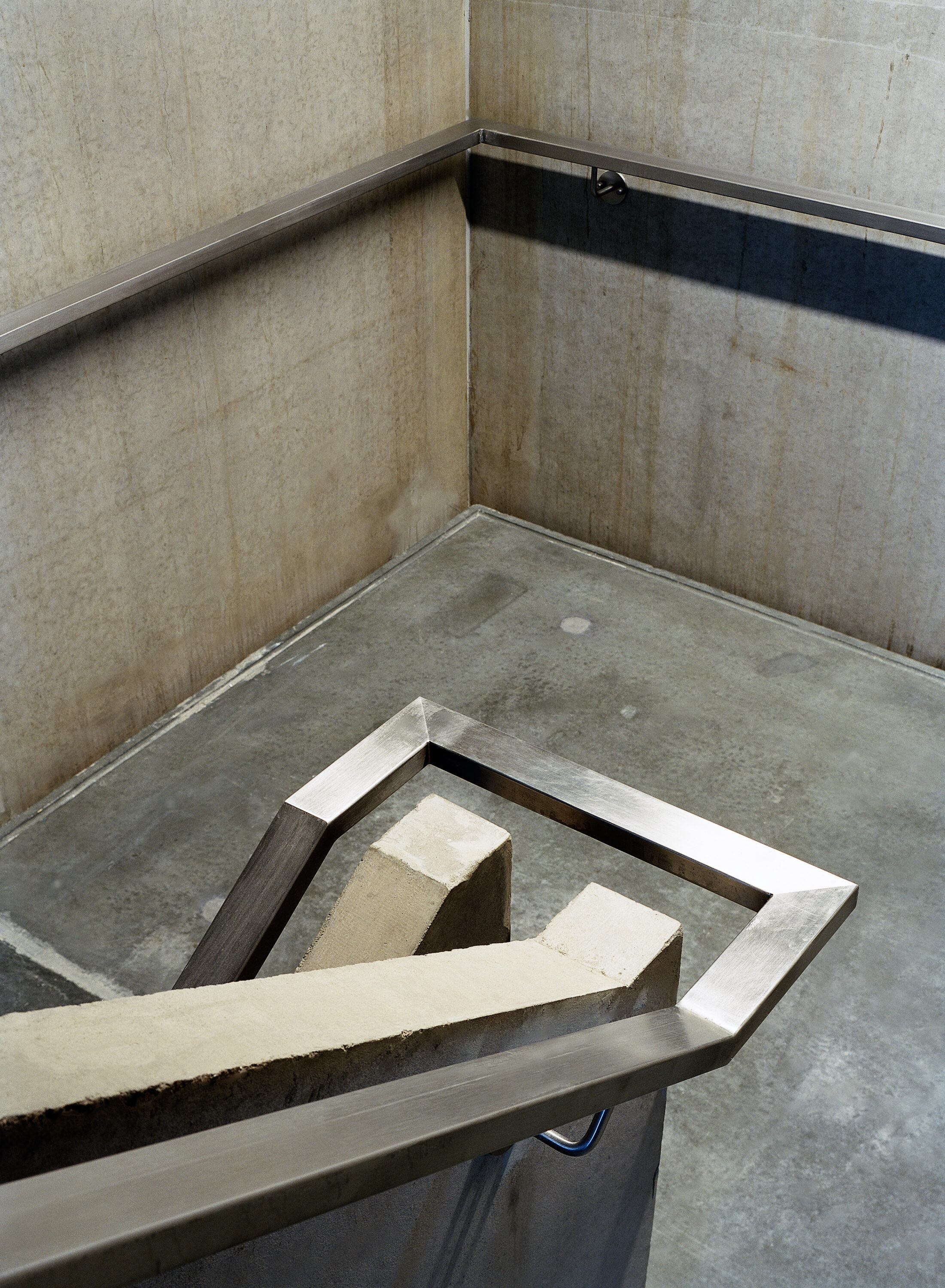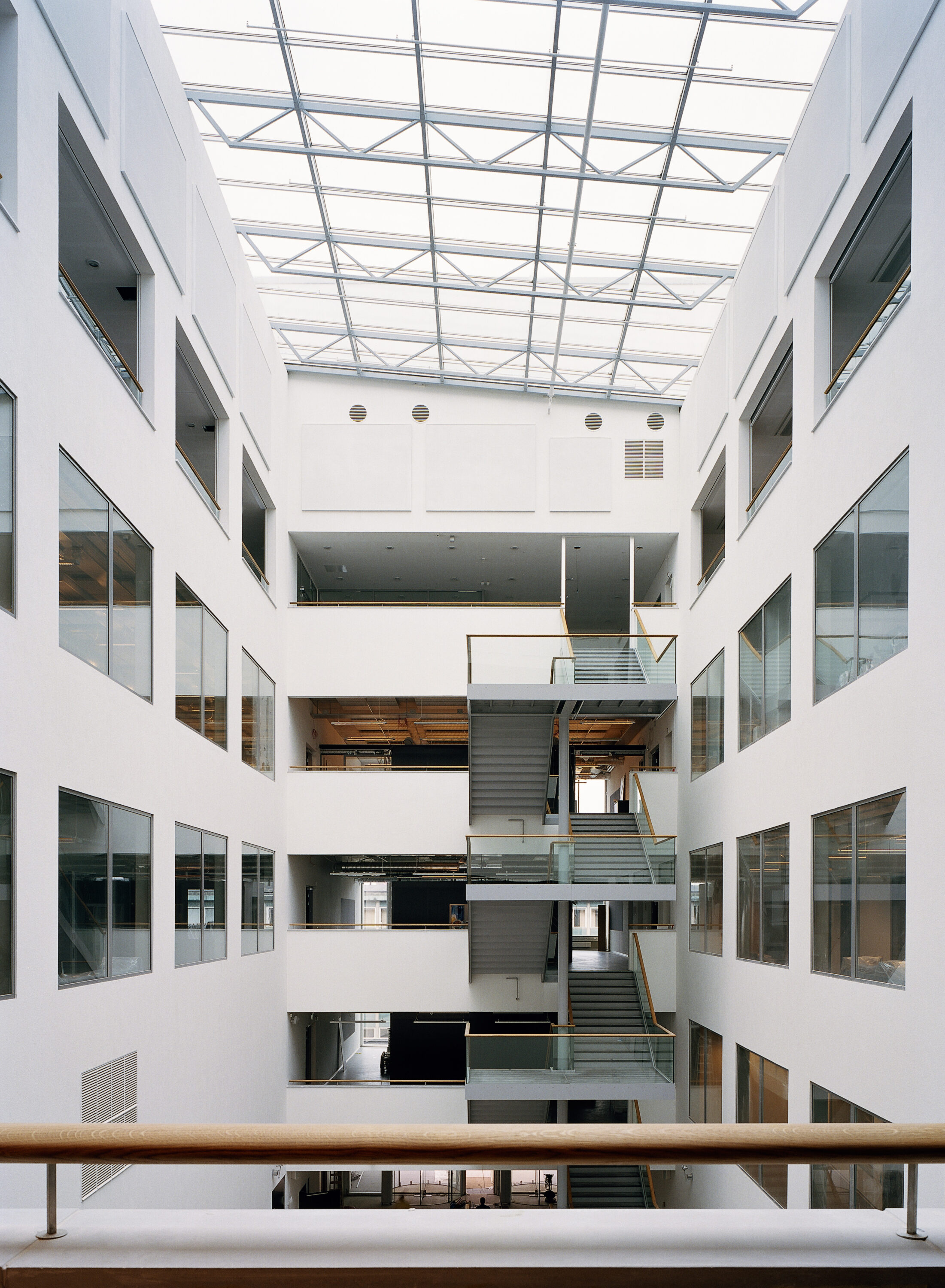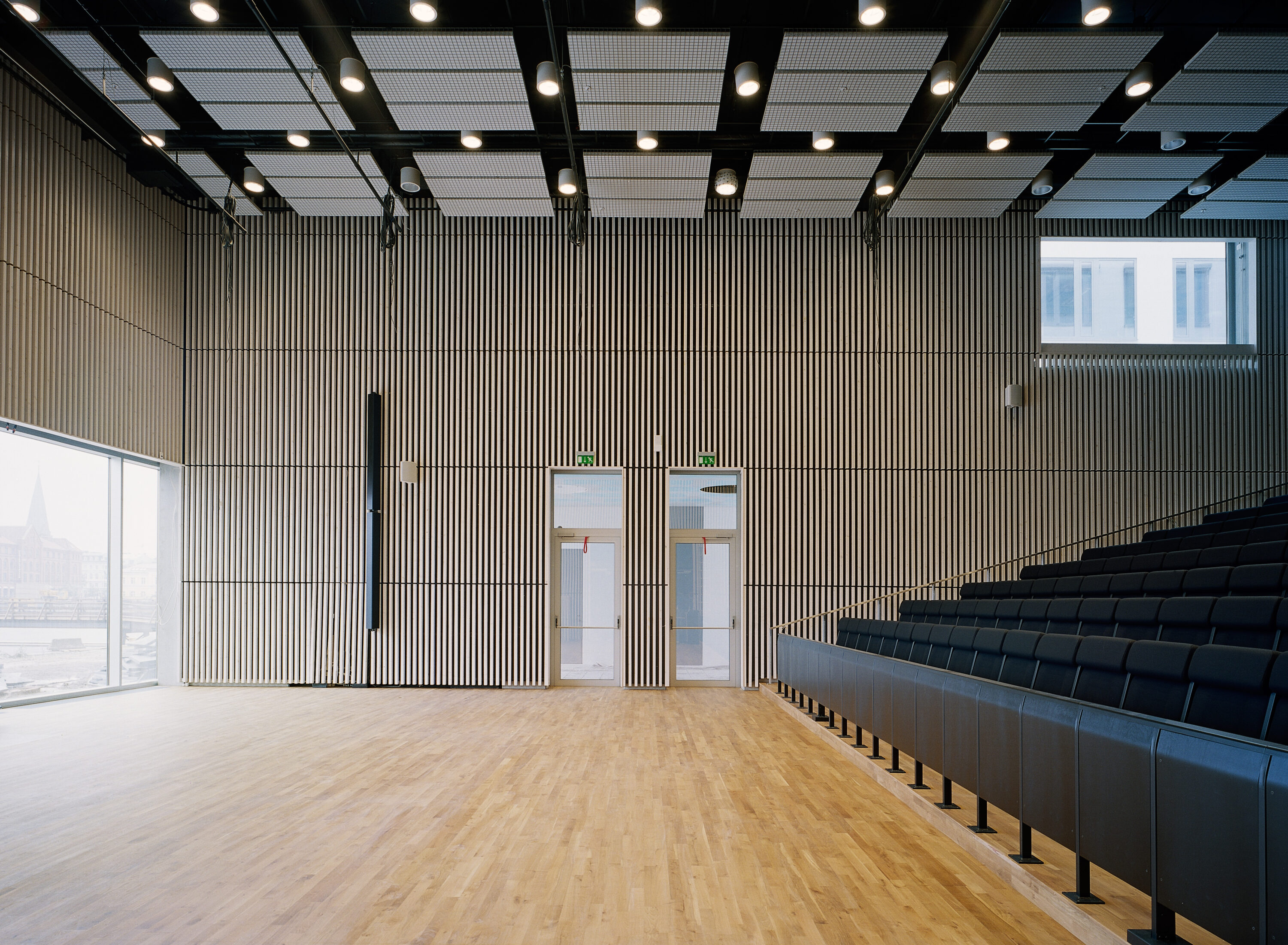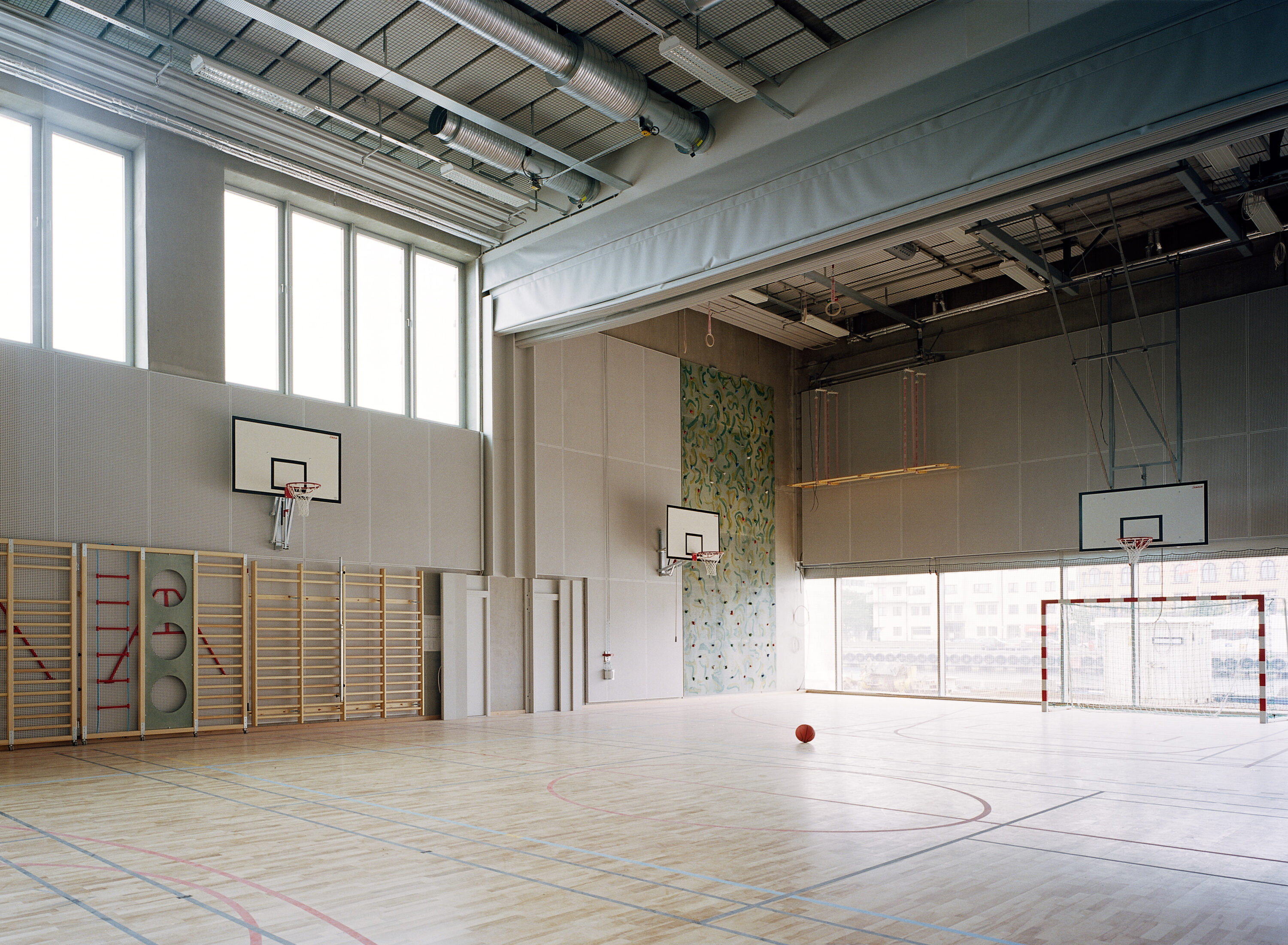Restaurant Johan P
We have given the classic Malmökrogen Johan P's dining room a new design. Ten years after the restaurant landed at the address, it was time for an upgrade of the dining room. The task was to revitalize the parts of the dining room that were difficult to occupy, to enhance the experience and make the room feel more cozy and luxurious. The bar was moved to a more central location, giving a more continental feel to the room and making it easier for staff to work. The mural on the walls was created by Malmö-based artist Anni Tuikka, who also did the original paintings ten years ago.
Vyn - restaurant, hotel & food bar
Elegant and tasteful. Locally rooted with an international touch. Timeless, authentic and personal.
After an architectural competition, FOJAB was chosen to develop a design concept for a restaurant with an associated hotel and food bar on a converted farm in Österlen for restaurateur Daniel Berlin. FOJAB was then commissioned to continue working on the interior design by interior designer Lisa Mannheimer in close collaboration with Daniel Berlin.
The hotel has 15 rooms, including two suites. The restaurant can seat 30 guests. There is also a food bar and a separate dining room for private parties.
The material palette consists of beautiful, robust natural materials such as oak, limestone, linen and wool, chosen to match the site and the character of the buildings. The interiors are designed to be long-lasting, both aesthetically and functionally, and sustainability is key.
The walls are plastered white, the floor of wide oak planks gives an exclusive, friendly feeling. The wooden floor is also positive from an acoustic point of view, as it dampens sound in a natural way. In the ceiling of the former barn, which is now the restaurant's lounge, you can see the old shingle roof, which has been replaced in places with new shingles.
The interior feels warm, comfortable and personal. Art plays a prominent role, with the works of artist Ellen Ekh appearing in several of the rooms. Craftsmanship is a common thread throughout Vyn, where the food craftsmanship in the kitchen is reflected in the carpentry and details of the interior. The furniture for the restaurant is specially designed for Vyn by designer Anton Björsing, and manufactured in the Gärsnäs furniture factory a stone's throw from Vyn.
Trikåfabriken
In a former knitwear factory from 1901 at Möllevången in Malmö, we have, together with Stena fastigheter, developed and converted the entire property into new office space. The renovation has been done with a careful hand to recreate as much of the building's original character as possible. Reuse has been central both in terms of the building, the outdoor environment and the interior design.
Luminaires, windows, wooden floors and plaster walls have been renovated and restored. The reuse of space has been encouraged, for example, masonry walls and sections have been recovered and used to rebuild new interior walls. Waste materials have been turned into outdoor furniture and bicycle racks, and details such as rosette valves have become character-enhancing features of the whole.
It was important to maintain the sense of space of the old factory premises. All electricity has been concealed and installations in the ceiling have been minimized. There are no large, winding ventilation systems here; ventilation has been kept down as far as possible. Both to give the rooms a cleaner look with high ceilings and to save energy. Flexibility has been a key concept for the building to have a long life, but also to be able to easily adapt it for different activities today and in the future.
The exterior of the knitwear factory has been restored to its original appearance. 1960s windows in poor condition have been replaced with newly manufactured ones, identical to the original windows but with a discreet intermediate sunscreen. The building has been updated to meet modern regulatory requirements for accessibility and fire, which has been solved with as few new additions as possible.
In one of the larger premises, we have designed and furnished our own office. The layout is adapted to our way of working with fewer desks, the possibility of grouping in different ways, several different types of meeting rooms and large social areas. The entrance room is the heart of the office, which with its large space on three levels opens up for joint activities, meetings, work, lunch rooms, seminars and parties!
The materials are few and recurring, with the existing board floor being an important element to give a feeling and character to the space. Other materials such as steel partitions, birch plywood, wooden ceilings, stone, carpets and textiles are chosen to be long-lasting and age beautifully. A new luminaire has been developed in collaboration with Ateljé Lyktan; an energy-saving version of the industrial lamps that once illuminated the factory.
The common courtyard is designed to allow everyone working in the different buildings to meet easily and spontaneously. There are areas suitable for various activities or just hanging out, including a shared roof terrace, table tennis tables and car-free areas for movement, play and creative workshops.
Trikåfabriken is one of Sweden's first redevelopment projects to be climate calculated. To ensure long-term sustainable environmental and climate benefits, the building has been certified according to the standard Miljöbyggnad in Operation level Gold.
Kävlinge town hall
The new face of Kävlinge municipality is a unique building that generously opens up and invites you in. Everyone should feel welcome here, in accordance with the municipality's slogan, and FOJAB is responsible for both architecture and interior design.
Kävlinge's new town hall is strategically located right next to the railway station in the new district of Stationsstaden. It brings together most of the municipality's administrations under one roof and also houses the city library, the municipal council hall, wedding rooms and meeting rooms of various sizes. The municipal building should be an inviting meeting place for everyone, which is reflected in the architecture.
On the ground floor is the bright and open library with areas for children and young people as well as adults. Here you'll find everything from a story cave and research room to a newspaper corner, and the large glass section provides visitors with excellent contact with the shopping street outside. On the top floor of four, there are generously sized coffee and meeting areas, and on the roof a spacious terrace with magnificent views. The municipality's large council chamber is also located here - an airy room with built-in flexibility for both small and large meetings. The room can be divided into two or opened up completely to accommodate a large number of participants.
The middle levels contain workplaces for the municipality's employees. The starting point has been that the design should meet a future way of working with efficient and attractive office spaces.
In the exterior design of the building, FOJAB has drawn inspiration from Kävlinge's long tradition of industrial and symbolic buildings. Robust, solid brick volumes with well-crafted details. The façade of the municipal building consists of red brick, zinc sheet and generous glass sections. On the long sides of the building, the facade is pleated, which provides an interesting play of shadows, and towards the shopping street it is cut with a lower section that scales down and lets in the light.
Inside, a sober material palette of stone, wood and textiles is used throughout. The color scheme is taken from the colors of nature around Kävlinge - the sea, the river Kävlingeån, the open landscape - and creates a calm atmosphere.
Kävlinge's new municipal building is certified with Miljöbyggnad Gold.
Bäckaskog Castle
To care for and preserve our cultural heritage, the National Property Board appoints house and palace architects. They are dedicated to the task for a longer period of time, which ensures a long-term approach and continuity. Castle architect Mattias Hedberg Ek at FOJAB has carried out several maintenance and renovation works at Bäckaskog Castle and Manor. The works are mainly linked to the hotel operations.
Bäckaskog Castle has a long and colorful history with preserved visible parts from the 13th century and was originally built as a monastery. During the 16th and 17th centuries, the castle was a Danish nobleman's estate and during the 18th century it served as a colonel's residence. In the mid-19th century, King Charles XV began using the castle and further extensive renovation and rebuilding took place, which has essentially given the castle its current appearance. One of the castle's main values described in the care program is "that clear imprints from the different eras of the facility make Bäckaskog Castle as a facility have great and cultural-historical values".
Several maintenance and renovation works have been carried out at Bäckaskog Castle, mainly linked to hotel operations. Surface and wet room renovation has been carried out in the hotel floor of the castle's main building. Hotel rooms and corridors have been fitted with mirror panels and period wallpaper with the intention of reinforcing and clarifying the castle character. The Rose Cottage, located in the castle park, has been completely renovated. The conference rooms in the building have been given new, more contemporary finishes.
A rejuvenation plan for the trees in the park has been made and the first trees have now been planted.
Dungeness
Dungen is an office building directly adjacent to Hyllie station. The building is classified according to Miljöbyggnad Gold, which has been an important starting point for the building's expression and design language. Indoor tree plantings tie in with the garden that previously existed on the site. FOJAB has designed and planned both the building and the interior.
The block is designed with six floors above ground and two underground parking levels below ground. The building is characterized by sustainable and durable materials that will age beautifully. The design of the Dungen office building consists of three main parts: the atrium, the plinth and the facades.
The atrium - a warm interior
The elevated atrium is the heart of the building. The light and warm wooden feel of the atrium welcomes tenants and visitors and is the building's entrance and natural meeting place. The neighborhood name Dungen is manifested by a tree planting at the main entrance where you move up along the tree trunks towards the atrium and the foliage. The greenery and the feeling of wood are recurring elements in the building's interior environment. A generous roof light provides daylight to the office areas facing the atrium.
The plinth - building the city
Where the building meets the ground, the materials and detailing can be approached closely. In Dungen, the plinth floor has been clad in dark brick, detailed with roller shading and pattern masonry. The plinth holds the building together and gives it an urban weight. Retail premises and center functions activate the urban space and contribute to making the area around Hyllie station square a vibrant place.
Facades - smart geometry
The facades have two different expressions. More closed to the south and more open to the north. The characterful curvature of the eastern facade gives life and composition to the building with its shadow play, while helping to meet the requirements of the Gold environmental building. The unique geometry is strengthened by clear material handling, an enveloping material in a light color and floor-high windows.
FOJAB was responsible for the entire interior design assignment, which was carried out in close cooperation with the client. Two office floors are designed for activity-based workplaces.
Award:
Malmö Urban Design Award 2019
Grand Hotel
FOJAB has been responsible for the design of the Grand Hotel in Lund's new verandas. In close cooperation with Grand's owners, two new glass verandas have now been built, as well as an outdoor terrace and a back pocket adjacent to Bantorget. The new verandas have been given their own character from the building and become a natural part of the adjacent square.
Grand Hotel is one of Lund's oldest and most classic hotels and also has a restaurant. The hotel was designed by the city architect in Helsingborg, Alfred Hellerström, and was built in 1896-98. The building and verandas have undergone several renovations over the years.
The assignment involved the addition of glass verandas, a back pocket and an outdoor dining area adjacent to Bantorget. The ambition has been to give the verandas a modern expression and functionality, while at the same time linking to the hotel's history and meeting the high requirements for antiquarian preservation. To support the careful handling of the building, FOJAB has collaborated with an antiquarian expert.
The verandas have high opening glass sections that create good contact with the patio and the square. In the western veranda, outside the Piraten foyer, there is room for a small stage. Large differences in level in the ground have made it possible to use the area for a back pocket under the western veranda. Drinks are served from the back pocket to the outdoor terrace. There are seats at wall-mounted benches with tables, below the two verandas, and on an outdoor seating area facing Lilla Fiskaregatan.
The verandas are built with sustainable and character-building materials that age beautifully. The granite base interacts with the copper plate of the windows and the sandstone facade of the building. The adjacent Bantorget has simultaneously been rebuilt to be an inviting entrance to the city and contribute to a vibrant city center.
Awards:
Lund Municipality's Urban Design Award 2019
Ice block
In the rapidly expanding district of Hyllie, FOJAB was commissioned to plan and design a new office building at the station square. The building is linked to the parking garage behind it and connects on every other floor. On the ground floor there are retail premises and a passage through the block.
The heart of the building is the generous stairwell, whose strong form winds upwards over the glass floor. The building's facade consists of a double-glazed structure where the outer layer uses white dots to create a pattern that mimics the cracking of ice. The pattern varies in density across the floors and creates a soft transition between transparent and dense surfaces in the façade inside.
A composition of stainless steel frames breaks through the outer layer of glass in places, creating breathing space in an otherwise smooth and shiny facade. In the arcade courtyard facing the square, the facade is clad with oiled oak ribs whose warm color tone contrasts with the otherwise cold facade at the top.
The volume of the building, with its broken facade lines, reinforces the character of a block of ice and at the same time relates to the stepping up of the parking garage behind it. The interplay of volumes creates large terrace areas with views of the square in the west, the city in the north and the Scanian rapeseed fields in the south.
Skanska Klipporna
FOJAB has designed the interior of Skanska's new regional office Klipporna in Hyllie. The assignment was "with a focus on people, high demands on sustainability and efficient use of space", to design an innovative work environment where cooperation and collaboration are critical success factors.
With a consistently green approach and smart and flexible solutions, an attractive meeting place has been created for both employees and visitors. A guiding principle has been to design a modern workplace that meets the need to meet and work together under the motto "One Skanska". The planning of the premises is based on "ABW" - activity based work, where the office offers several working environments that can be adapted to activity.
The new office is a carefully and sustainably designed environment based on beautiful, natural materials, colors and furniture, giving a sense of quality and timelessness.
BRIO headquarters
FOJAB has redesigned the raw attic at Skeppsbron at Malmö Central Station to become the new headquarters for BRIO. In collaboration with Ideas AB and BRIO's own project team, FOJAB has also created the interior design.
The focus has been on using all the angles and corners of the wind to create functional and playful spaces. The brick arches and wooden roof structure are highlighted against a neutral background of black and white and glass.
BRIO's identity has been captured in bright accent colors from the graphic profile and their toys are visible throughout the space in the form of niches, giant models and decals on glass, walls and floors.
Teacher Training College Hurricane
In 1997, Malmö University announced an international competition for the design of a new university campus at Beijerskajen and Hjälmarekajen in central Malmö.
After the Swiss architectural firm Diener & Diener Architekten won the competition, a project company was formed together with FOJAB. Between September 2000 and March 2003, the joint project company called Diener & Diener FOJAB arkitekter prepared program documents, system documents and tender documents for the turnkey contract for Kv. Orkanen.
Then, between June 2003 and October 2004, FOJAB was individually responsible for the construction documents. The new teacher training college was inaugurated in August 2005.
The Hurricane's facade is made of glass in a shade of green and is decorated with words and phrases in different languages, with the idea that passers-by will stop to observe and reflect. The words that adorn the facade are divided into three parts.
The first part is quotes taken from a poem by Hjalmar Gullberg, born in Malmö, and a song by Timbuktu, also from Malmö. The second part reflects the school's international connection, with the words "knowledge" and "freedom" in different languages. The third part is a series of words, such as 'listen think speak' and 'integrity self-esteem pride'. The letters are made of stainless steel, placed inside the glass, and change expression according to the hours of the day, the weather and your own movements.
Award:
City of Malmö Urban Design Award 2006
